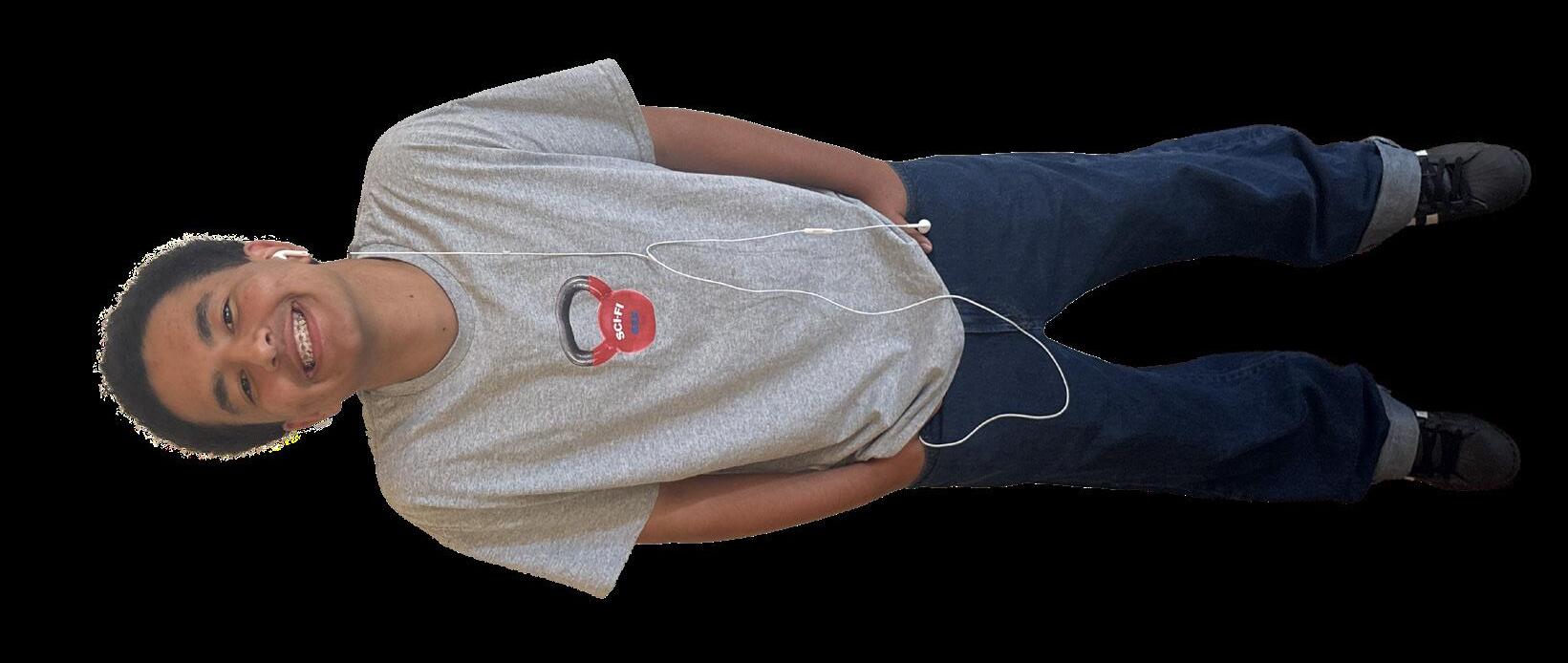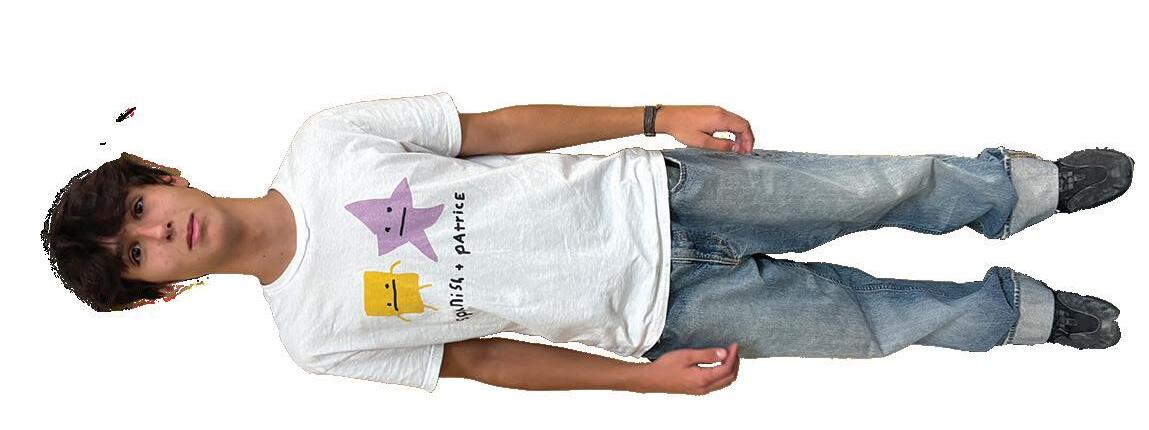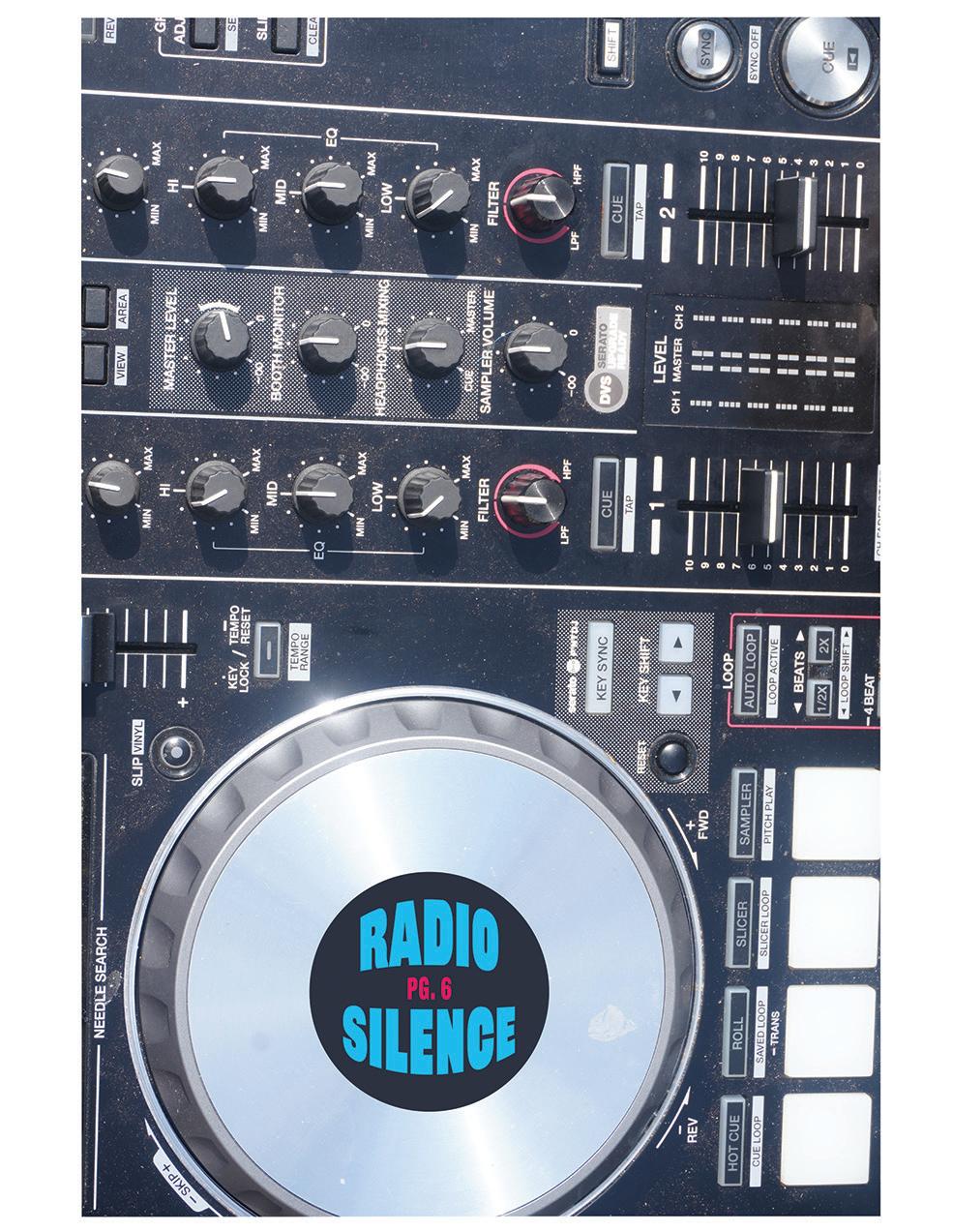

Dear readers,



Dear readers,
Welcome to the first issue of the 2025-2026 school year! It has been so much fun reuniting with our staff and getting to know our new members, and we are so excited to kick off Volume 14 of C Magazine.
This year, we are proud to introduce some new additions to our publication, including our flag and several multimedia elements, while simultaneously upholding C Mag’s traditions like our poster and perspective pieces.
On this issue’s cover, we feature DJ and professor Micah Salkind, one of many artists and music lovers featured in “House Again..” on page 13. This article highlights the subgenre of EDM that adults and teenagers alike enjoy: house music.
We asked brand-new staff writer Poppy Morrison — an author of “House Again..” — about her experience writing, interviewing and acclimating to C Magazine.
“It was super cool to see how everyone came together to help all of the new staff writers,” Morrison said. “It was also interesting to see how the magazine comes together. My favorite part was getting interviews from really interesting

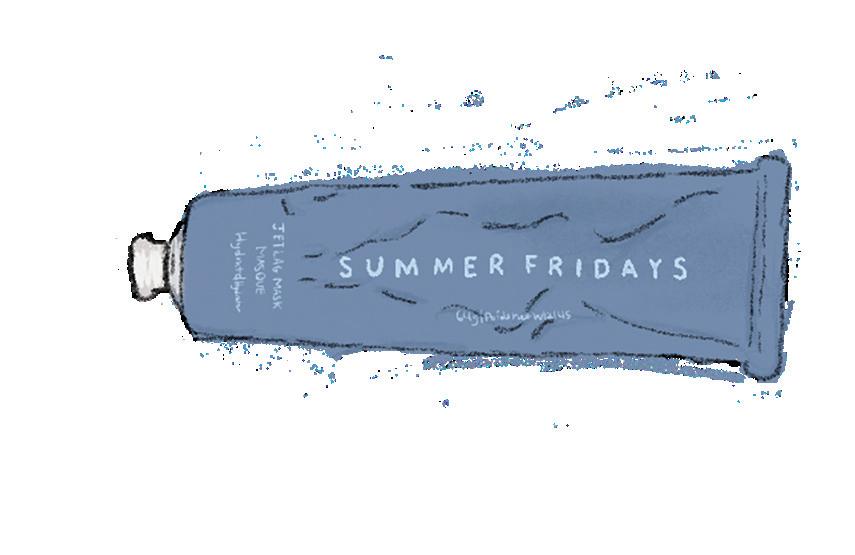
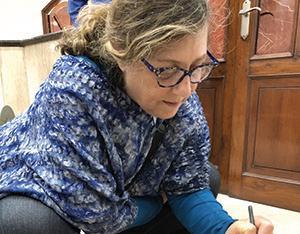

people in the house music world.”
This issue, writers also covered the impact of defunding the Corporation for Public Broadcasting in “Radio Silence” on page 6. Xuaner Duan, a new writer, found it enthralling to write data-driven and heavy-hitting work.


“Writing ‘Radio Silence’ gave me the opportunity to go out and contact different people, such as the head of KQED and university professors,” Duan said. “It gave me so much experience in the field of impactful reporting.”
To celebrate the fall spirit, C Mag showcased a fall lookbook, designed by Estelle Dufour and Stella Guo on page 30. To complement the lookbook’s coffee tips, Duan and Sonya Kuzmicheva created seasonal Paly moodboards on page 38.
There is so much more within this issue, and we are delighted to have the opportunity to showcase its content with you all! We sincerely hope you enjoy and look forward to the wonderful year of C Mag ahead.
Happy reading!



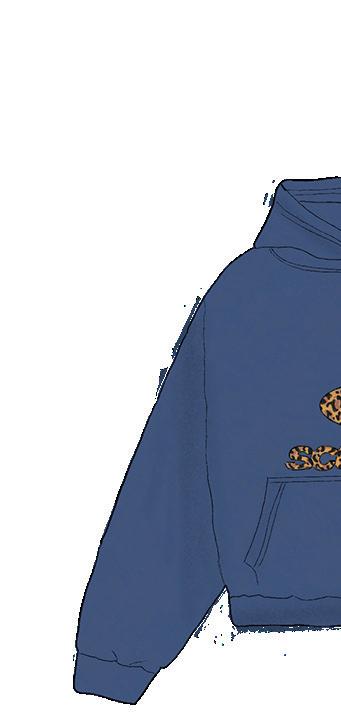


Allison Wong
Aynur Diner
The Boneh Family
The Ferring Family
Jill Keefe


C Magazine, an arts and culture magazine published by the students in Palo Alto High School’s Magazine Journalism class, is a designated open forum for student expression and discussion of issues of concern to its readership. C Magazine is distributed
Printing & Distribution
C Magazine is printed 5 times a year in October, December, February, April and May by aPrintis in Pleasanton, CA. C Magazine is distributed on campus and mailed to sponsors by Palo Alto High School. All C Magazine stories are available on cmagazine.org.
Advertising
The staff publishes advertisements with signed contracts, providing they are not deemed by the staff inappropriate for the magazine’s audience. For more information about advertising with C Magazine, please contact business manager Annie Kasanin at businesscmagazine@gmail.com.
Letters to the Editors
The C Magazine staff welcomes letters to the editors but reserves the right to edit all submissions for length, grammar, potential libel, invasion of privacy and obscenity. Send all letters to cmagazine.eics@gmail.com or to 50 Embarcadero Rd., Palo Alto, CA 94301.
Editors-in-Chief
Talia Boneh, Ria Mirchandani, Alice Sheffer, Amalia Tormala
Managing Editors
Estelle Dufour, Zoe Ferring, Silvia Rodriguez
Online Editors-in-Chief
Maia Lin, Sophia Zhang
Social Media Managers
Sonya Kuzmicheva, Luna Lim
Table of Contents
Staff Writers
Creative Directors
Dylan Berger, Ellis Shyamji
Business Manager
Annie Kasanin
Multimedia Director
Maria Uribe Estrada
Outreach Specialists
Estelle Dufour, Silvia Rodriguez
Photo & Art Director
Fallon Porter
Adviser
Brian Wilson
Anjali Dahncke, Bahar Diner, Xuaner Duan, Stella Guo, Poppy Morrison, Ella Renazco-Sperling
Cover
Ria Mirchandani, Alice Sheffer
Illustrators and Photographers
Poster
Talia Boneh

Dylan Berger, Talia Boneh, Xuaner Duan, Estelle Dufour, Arabella Guinle, Stella Guo, Chloe Huang, Amy Lei, Maia Lin, Charlotte Liu, Katie McCue, Ria Mirchandani, Poppy Morrison, Anjini Sanchorawala, Micah Salkind, Alice Sheffer, Emily Tang, Amalia Tormala, Maria Uribe Estrada, River Wu, Ella Renazco-Sperling, Sonya Kuzmicheva, Zoe Ferring
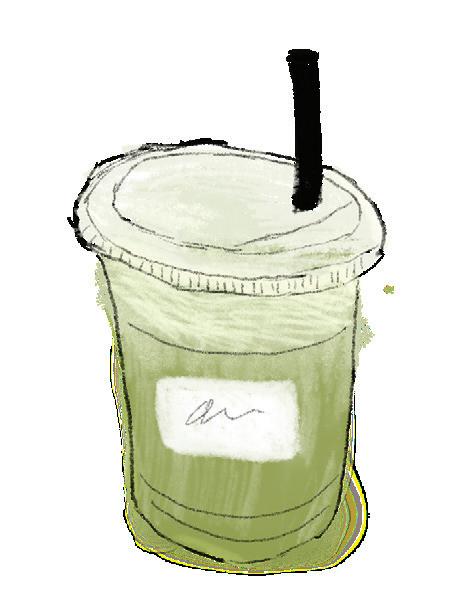



Table of contents





The smell of sizzling onions and garlic on the stovetop fills the kitchen, but 11-year-old Lucia Serrano and her eight-year-old brother Eric Serrano barely notice.
Curled up on the couch, the two pairs of little eyes widen as Chris and Martin Kratt leap across the screen in their green and blue power suits, transforming into cheetahs, peregrine falcons and even giant squids to fight villains who harm the environment for personal profit.
“PBS, it’s educational and it gives a lot to the kids. It plants the seed of curiosity and makes them want to know more and explore.“

Alejandra Gonzalez, Palo Alto parent

Their mother, Alejandra Gonzalez, looks up from the stove with a quiet smile peeking from her lips. Gonzalez never grew up watching television, so she never understood the comfort and excitement people found in watching their favorite characters interact through a screen.
But seeing her daughter lean forward with wonder during a program on public media — learning and engaging with a show she loves — Gonzalez said she feels a sense of reassurance knowing that her childrens’ curiosity is nurtured, and their minds are engaged

“PBS, it’s educational and it gives a lot to the kids,” Gonzalez said. “It plants the seed of curiosity and makes them want to know more and explore. … With Netflix and all
How the $1 billion cut is silencing public media across America
the streaming services, kids want to watch only fast paced things that overly stimulate their brain, [so] it’s really not learning.”
The Serrano children do not know it yet, but the public media studios bringing their beloved educational programs are struggling to stay afloat. The Rescissions Act, signed into law on July 24, eliminated all $1.07 billion in funding for fiscal years 2026 and 2027 to the Corporation for Public Broadcasting, which funds PBS and NPR stations nationwide. President Donald Trump’s administration enacted the law with the intention to reduce government spending on programs that were deemed uneconomical. Now, stations across the country are scrambling to survive without federal support.
At KQED, San Francisco’s largest public media station, editor-in-chief Ethan Toven is already calculating the damage.
“For KQED, specifically, it [the Rescissions Act] reduced our budget by $8 million,” Toven said. “It clawed back $8 million in annual funding that we were counting on from the Corporation for Public Broadcasting to help us pay for our NPR and PBS programming.”
KQED is not the only broadcaster facing these cuts. Down the coast in Monterey Bay, KAZU lost $264,000 — about 10% of its budget. News Director Amy Mayer rec-
ognizes the gravity of the situation.
“As of the end of this month [August], we will no longer be receiving that [Corporation of Public Broadcasting] grant,” Mayer said. “It’s a pretty significant impact.”
James Kass, who is the executive director for KALW, a San Francisco radio station that has served the Bay Area since 1941, said KALW is facing steeper losses.
“We’re losing about $450,000 a year based on these cuts,” Kass said. “We do our best to serve the Bay Area. We’re a medium-sized station, and we’re trying to do our best even in these troubling times.”
more stations disappear, communities will continue losing vital infrastructure. While no media outlet out there is perfectly objective, Om Rajan, associate producer of InFocus, argues that multiple local voices create a healthier information ecosystem than silence.

small local news stations can really help people get accurate information,” Rajan said. “Now they all have to shut down because of this defunding policy.”
“It’s a lot harder to control the outlook as they [local news stations] could be more biased in some ways, but having a lot of
“There has been an analysis done within the system that estimates about 115 public television and public radio stations could close within the next two years.“
What’s more, smaller corporations in rural areas are highly vulnerable due to their smaller bases and limited private sponsorship op portunities.
“For a lot of these rural stations, it’s as much as 30%, 50%, 75% of their budget,” Kass said. “A lot of them provide critical services like weather reports and emergen cy broadcasts. They’re often the places that local people turn to because there’s no oth er local news source. Many of these rural stations are in danger of shutting down.”


Michael Isip, KQED President
Closures of these stations are accelerating the U.S.’s growing crisis of “news deserts,” a phenomenon during which communities are left with minimal or no access to local news. These “deserts,” caused by a decline in news readership and broadcasting necessity, have left millions without essential information, impacting democracy and community cohesion.
“California, the nation’s most populous state [and] the world’s 4th largest economy, is among the top states for local news closures since 2018,” Isip said. “Studies have shown [that] when people do not have access to local news and information, they are less informed, they are less engaged [and] voter turnout declines.”
For Isip, an access to information is not just about the media — it is about democracy itself.
“An informed, engaged, participatory society is really the foundation of a strong
Smaller programs and rural stations face the highest risk of shutting down completely. Michael Isip, president of KQED, an alyzes the significant impact the Rescissions Act has im posed on communities.
“For smaller stations, fed eral funding is literally their lifeline,” Isip said. “There has been an analysis done within the system that es timates about 115 public television and public radio stations could close within the next two years.”
News stations keep citi zens informed and prepared for emergencies. As more and
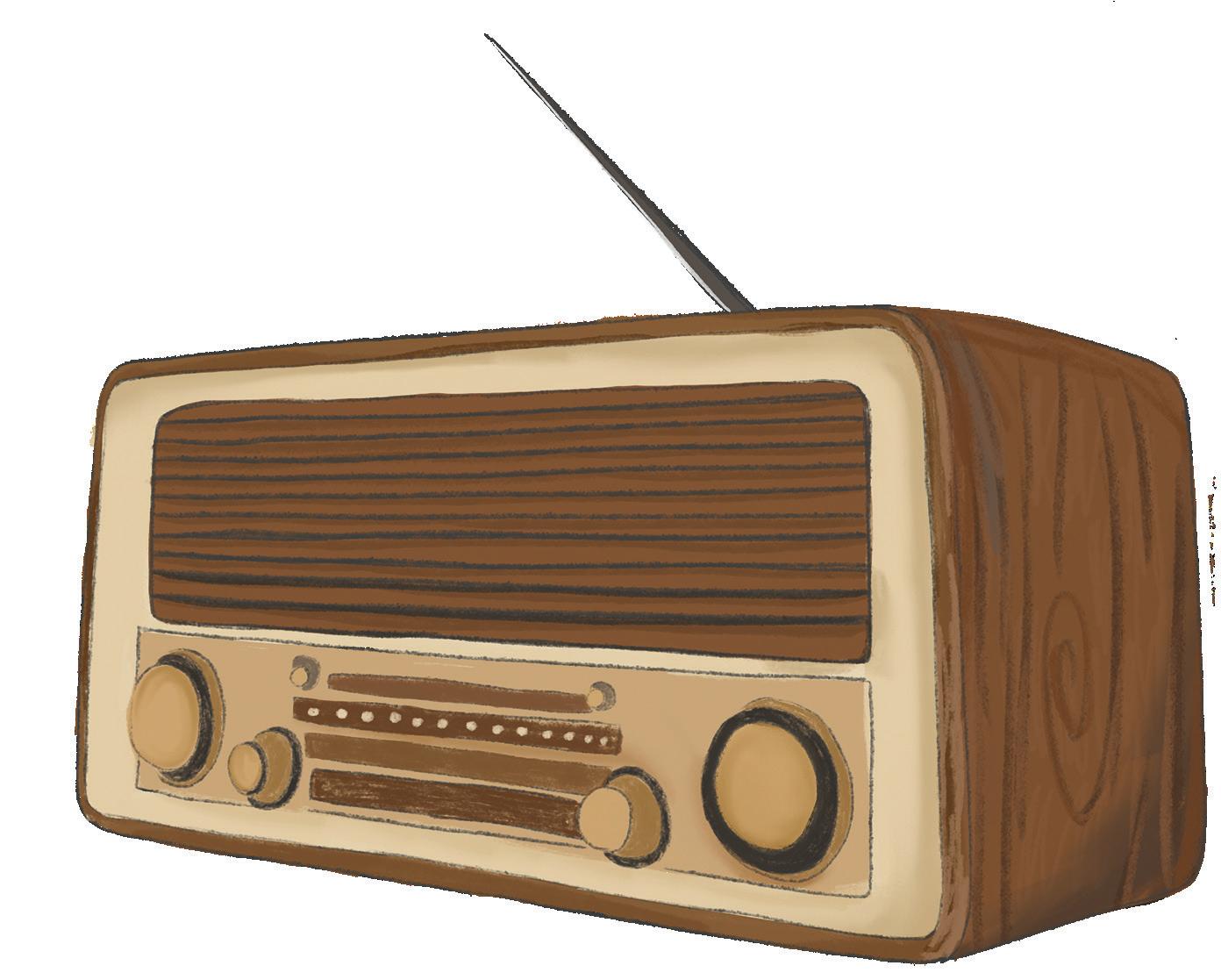

role, education, is crumbling as well.
“Part of the mission of PBS, why it was born, was to play that role of public education,” Kass said. “Early programs like ‘Sesame Street’ and ‘Mr. Rogers’ led to things like PBS Kids. [They] were specifically designed to provide educational resources and services to kids who didn’t go to big private schools.”


Underserved communities face the worst of these consequences: Without federal funding, families living in these communities may lose access to free educational programming that a large number of preschoolers rely on.
“Public media, which includes NPR and PBS, is a networked system with more than 1,600 public television and public radio stations that serve about 99% of American households around the country,” Isip said. “These communities rely on public media to stay informed with local news, information and national news. Education is also available for free to the 52% of 3-to 4-yearolds who do not attend formal preschool.”
Though most people consider PBS a re-
“Daniel Tiger.” But, these programs offered more than lessons — they built a common ground of values shared across divides. Paly broadcasting teacher and InFocus adviser Rodney Satterthwaite grew up watching PBS Kids and sees his children learn from the same shows he did, yet he worries this shared experience is fading.
“They [my children] love things like ‘Daniel Tiger’s Neighborhood,’ [and] I grew up on ‘Mr. Rogers’ and ‘Sesame Street,’” Satterthwaite said. “The values there — treat people nicely, be kind to each other, share, respect — those shouldn’t be right [conservative] or left [liberal] values. I fear that we’re not going to have that shared system of values anymore. Our country seems to keep fragmenting, and this common experience is dis appearing.”
private investment could replace government funding to create a more
California, though. There aren’t that many news stations. For people there, it’s probably their only source of news. With all these political changes, these new developments are going to affect a lot of people in rural areas — farmers, for instance, [and] other hard workers. They need some way to be informed.”
With federal support gone, the fate of public media now rests entirely in the hands of consumers. Community members can step up through multiple channels — from advocating on social media to direct financial support.

“Writing about [the potential consequences of these cuts] is definitely a big
“An informed, engaged, participatory society is really the foundation of a strong democracy and a healthy society.“

Michael Isip, KQED President
junior at Paly and an executive

more in-depth value,” Satyavolu said. “Most private media companies focus on stocks and investors, so their coverage gets shaped by private interest. You’ve seen major news corporations backing down to Trump because they don’t want to get sued, but
Satyavolu also acknowledges the geographical disparities when it comes to media access. While affluent areas maintain multiple news sources, some rural areas rely entirely on public radio and broad-

“In Silicon Valley, we may not notice it enough since we have well-funded cable news here,” Satyavolu said. “Go to rural
“If you are able, donating to the stations that you listen to is always a bonus,” Mayer said. “The goal is that everybody can consume what we have to offer, and those people who are able to will be funding it.”
Though public media will ideally remain free and accessible to all, its survival increasingly depends on those with means of stepping forward. The stations’ membership models ask those who can pay to help provide free access to everyone.
“Public media in the United States is public,” Toven said. “We get some federal funding, but really it’s public in that you and I become members and decide this is valuable enough for us to contribute $10 or $5 a month. … We’re trying to convince




our audience that this is important and worth pay-
KQED is made up of more than 252,000 members with contributions and donations making up 16% of their budget.
“So, if we can continue to deliver on our public service, I know we’ll be able to earn and re-earn the trust, the faith, the belief, the financial support of our community,” Isip said. “It’s really the fact that we’re powered by the community, and an essential service that gives me hope.” Time is in continuous motion.
The people who supported the development of public media
Text and design by XUANER DUAN, ZOE FERRING and MARIA URIBE
ESTRADA • Art by MARIA URIBE
ESTRADA and TALIA BONEH

are only getting older and older, and the majority of the loyal traditional broadcasting upholders cannot fundamentally sustain this system forever.
“Our core audience [and] our core supporters are getting older, [being] 55 and older, and [they] generally use KQED television and KQED radio,” Isip said. “We need to develop the next generation audience: the next generation supporters who want experiences, want different forms of content and want different ways of storytelling.”
In addition to donations, stations like KQED are considering more self-sustainable approaches to replace the lost federal funding. This includes a wide range of solutions from corporate partnerships to shared resources among stations.
“Partnerships, formal collaborations and consolidations are important: We think of ourselves as public interest journalism,” Isip said. “We combine forces to generate the kind of information and programs that audiences need.”
Despite these government decisions,

public broadcasting is far from disappearing, according to Isip.
“Let me first say that [loss of] federal funding is a setback for public media; it’s not the end of public media, [and] it’s not the end of KQED,” Isip said. “[Previous] federal funding actually accelerated what was already needed. We need to do more with less.”
Public broadcasting in the United States was born from the belief that every democracy requires informed citizens. Almost 60 years later, this belief might be facing its greatest challenge yet. The next generation deserves the same access to education, information and shared values that have shaped previous ones. The question here is not whether public media will survive, but whether Americans will take action to preserve it.
“The future of public media depends on how people in the community step up,” Kass said. “Show them the value of independent journalism, the value of entertainment that’s not profit-driven, but impact-driven.”

“The future of public media depends on how people in the community step up. Show them the value of independent journalism, the value of entertainment that’s not profitdriven, but impact-driven.“



James Kass, KALW Executive Director

The era of trends is in full swing — and nowhere is that more evident than at Palo Alto High School. A simple stroll around campus provides a snapshot of both modern consumer culture and how immersed Paly students are in it. From the sea of Sambas and Jordans shuffling across the quad every day to the Lululemon keychains dangling from swaying Longchamp tote bags, it is clear that many students embrace online trend culture from head to toe. With social media offering instant access to all the latest products, people across the globe — and across Paly — are indulging in microtrend-fueled consumerism more than ever.
Participating in trends and buying hotshot items is hardly anything new. Throughout history, we’ve seen social and cultural trends come and go, affecting fashion and behavior. In the eyes of Paly social studies teacher Katya Villalobos, this tendency is merely a thread in the greater historical tapestry of American consumer culture.
“After 1880, you can see how consumer-oriented America has become,” Villalobos said. “That became part of the
Beyond their physical appeal, items hold weight as trends and representations of social status
over the years.
“I’ve defi nitely seen the microtrends,” Villalobos said.
“I see the water bottles, I definite ly see the bracelets, I see Birkenstocks [and] the Boston clogs. But, most of all, I remember the Lulu lemon explosion.”
“There are many times when the trends are Black trends, but it isn’t acknowledged and respected.”

Elijah Williams, Gunn High School, 12
between specific brands, items and styles, these fleeting fads and microtrends encompass a wide variety of what Paly students wear — signaling what’s trending in the school community. As a teacher, Villalobos has an outsider’s perspective on student trends she has witnessed
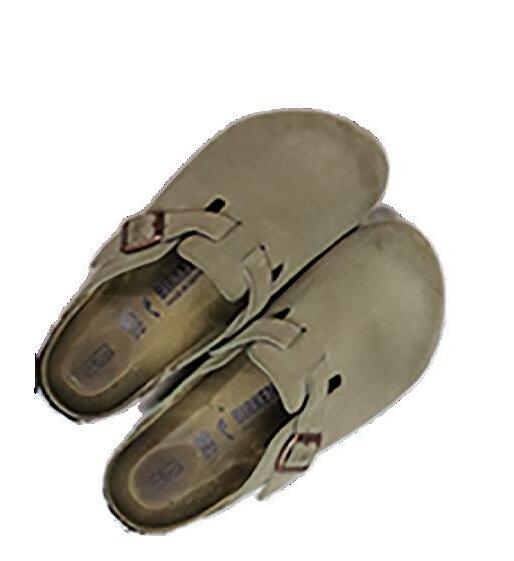
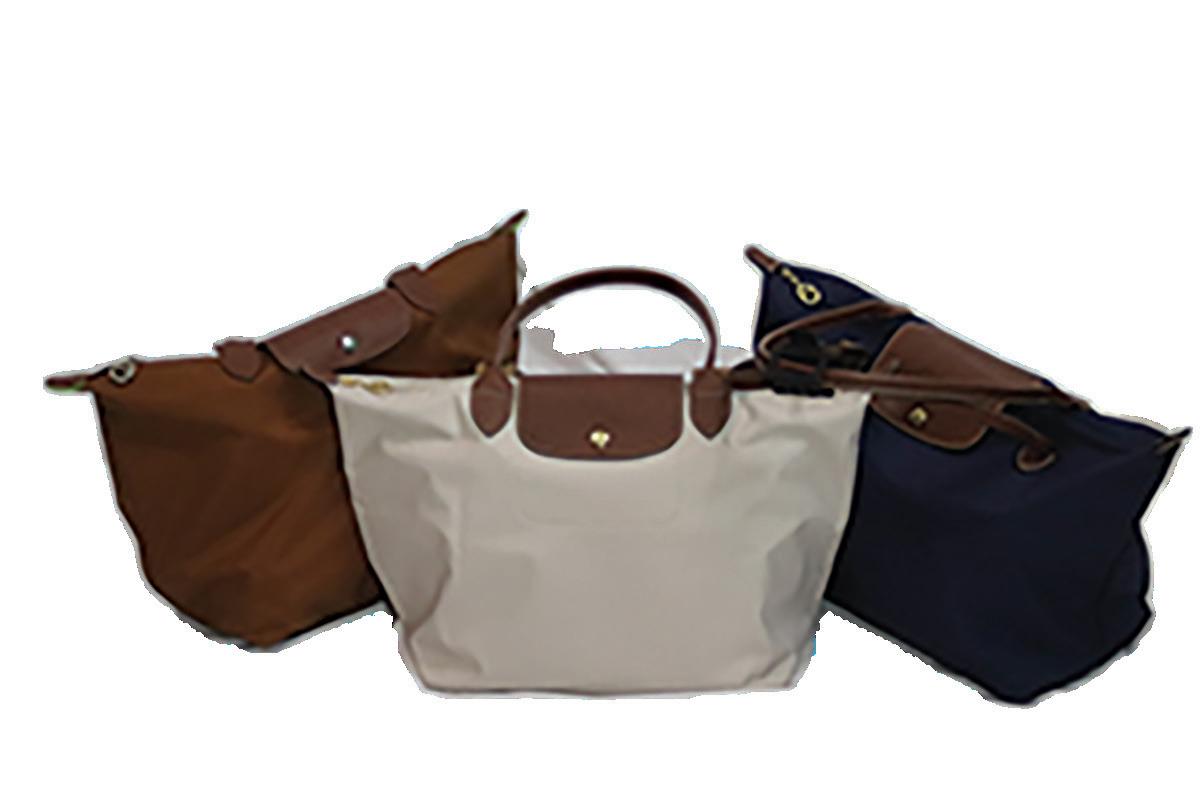
solid presence in the school community for over a decade is no easy feat, given how many trends come and go in waves hitting the hallways every year. For many, it can be difficult to keep up, as it feels like there is always a new trend emerging hard and fast. Freshman Maggie Sabina, for example, has picked up on one of the recent trends beginning to gain rapid traction around Paly this season.
“Rainbows [a flip-flop brand] are becoming really popular,” Sabina said. “Lots of people probably invest in them because of how common it is to wear flip flops in California and around this area.”
It’s no coincidence that these highly coveted items, ranging from $98 leggings to $170 sandals, also carry the heaviest price tags. The expense itself makes the item inherently more exclusive, as not everyone can afford to participate in the trend. Together, the price and brand of an item add to its allure; what is technically a simple new product can instantly turn into a status symbol. As freshman Natalie Yau sees it, the value of an item often stems from the image it projects towards others.
“Recently, trendy items have determined where you fit in certain groups,” Yau said. “Showing that you have an item, even if


you don’t like that particular item, changes how they perceive you as a person.”
These items serve as a form of social currency, elevating their owners to a selective group of people who are in with the latest trends and willing to pay top dollar for them.
Thanks to social media, microtrends have the ability to spread infectiously — and fizzle out just as fast. Remnants of past trends can be found stuffed on sale racks, where artifacts like polka dot bubble skirts and pajama pants pile up in corners to make room for the next big viral sensation. Junior Tess Li said her occasional indulgence in trends is catalyzed by online media.
“I get influenced to buy products a lot, especially on TikTok, with things like beauty products, perfume and skincare,” Li said.
Oftentimes, if something makes a splash online, it will subse quently see more success on the shelves, as an item’s virality direct ly correlates with its vitality and overall popularity. Senior Woody Chehadeh said he adapts his spending habits in specific consider ation of social media.
“Social media does a really good job at advertising certain items,” Chehadeh said. “But, when I want to purchase something, I usually ask myself whether it’s trendy or whether I actually like it. And if I don’t like it, I usually don’t get it.”
For many teenagers, the bigger the internet phenomenon, the stronger its grip on cultural relevance and consumer culture. Social media platforms like Instagram and TikTok serve as constant, instant streams of exposure and advertisement — they play a big role in driving these trends, as senior and Sustainable Fashion Club President Chloe Huang explains.
“When a certain style, pattern or fabric goes viral, a lot of brands are always quick to produce duplicates of the same trendy clothing, which fuels microtrend cycles,” Huang said.
online empire and making a profit off of it. “[Influencers] become their own mini public relations firm,” Villalobos said.

“Recently, trendy items have determined where you fit in certain groups. Showing that you have an item, even if you don't like that particular item, changes how they perceive you as a person.”
Natalie Yau, 9
This rapid replication and circulation of microtrends can feel endless, blurring the line between natural popularity and stra tegic, corporate promotion. Social media holds such power due to its rapidity and ability to target viewers. Villalobos likens this phe nomenon to a contemporary form of propaganda, used to keep the wheels of the consumerist machine turning.
“Propaganda is not a new idea, and how propaganda has been used to sell things is definitely a 20th century kind of creation,” Vil lalobos said. “It’s very targeted, and I think that influencers are a very modern form of it.”
Influencers hold an extremely powerful influence over their captivated audience, but not without effort. A great deal of cura tion goes into maintaining a massive
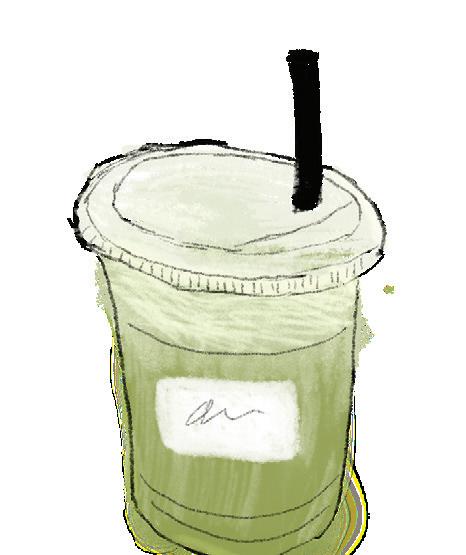


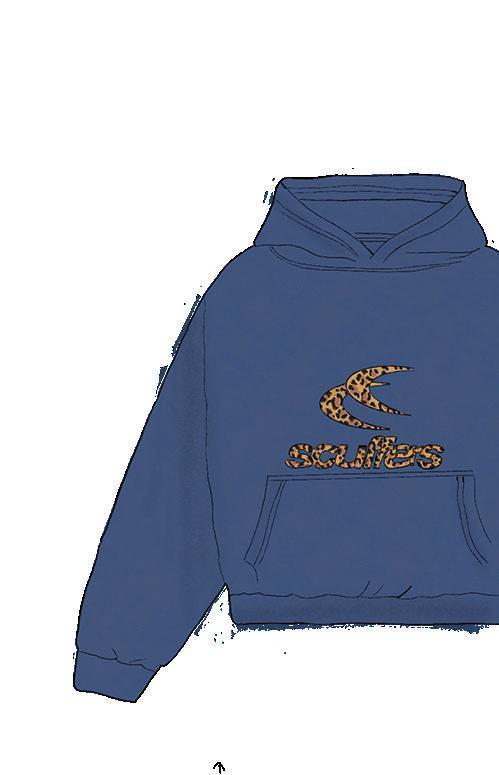





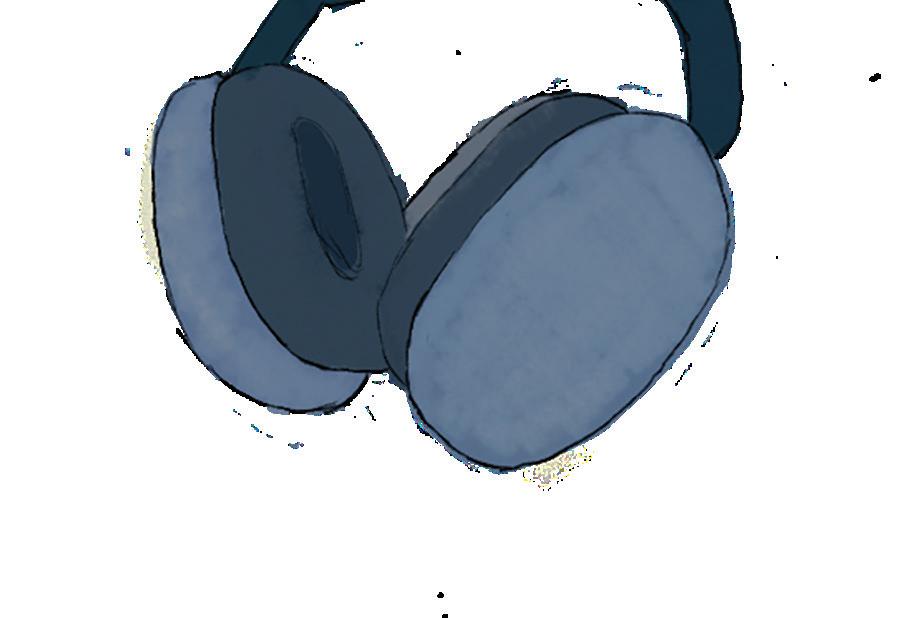
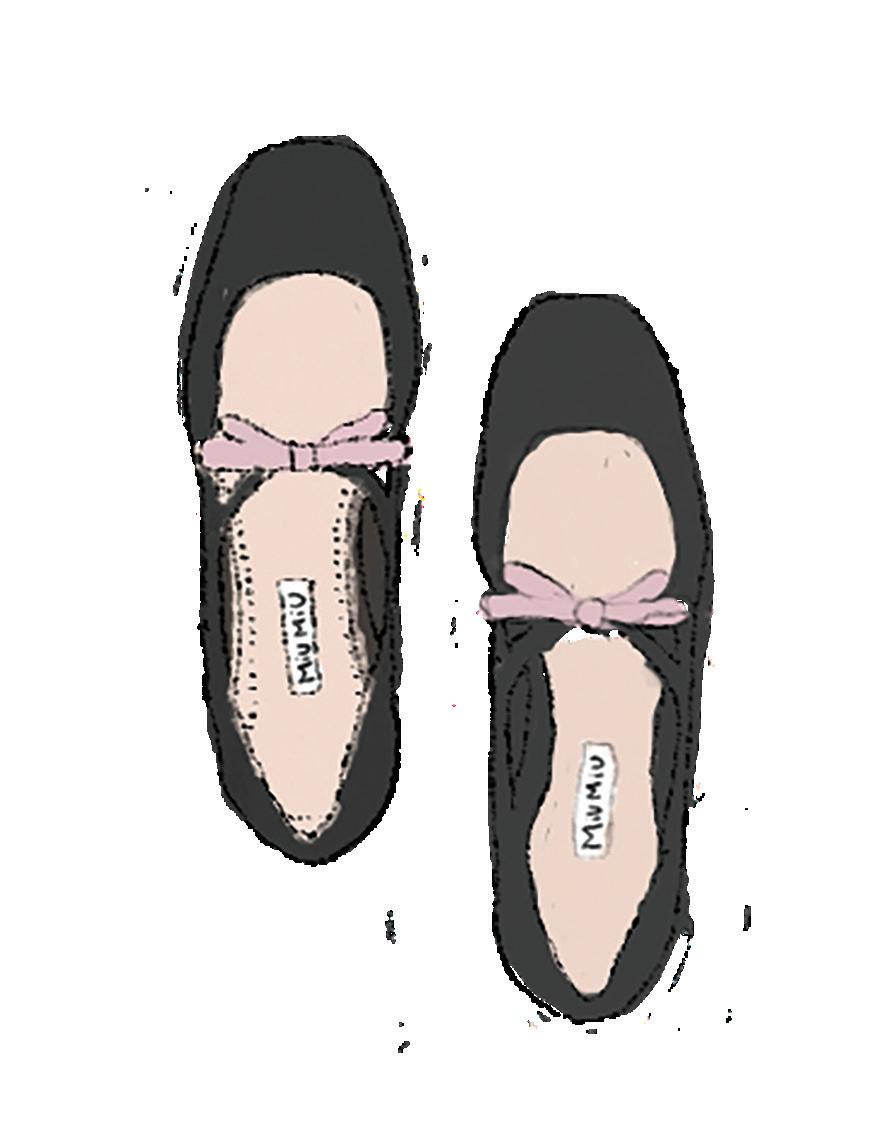


to keep ahead.”
Students are consistently exposed to what influencers and brands want them to see. It’s important to note that the influence of peers can be just as powerful over local trend culture as that of big-name influencers and brands. Elijah Williams, a senior at Gunn High School, explains how broader community trends are represented online.

“On social media, with what your friends post online, you see the niche and trendy parts of your own community, and you can definitely see this here in Palo Alto,” Williams said. “With trends’ rising representation online, more people copy just to play into the part of what’s ‘cool’.”
Although, for some, it’s easy to form a disconnect between those who create a trend

trendy items like Owalas [water bottle brand] or certain clothing brands be cause of curiosity about what it’s like to own the item, too,” Huang said. “When everyone around you has the item, oftentimes you feel left out if you don’t.”
While embracing differ ent trends can feel exciting and normalized, it often leads to overconsumption and the waste of numer ous products. Recog nizing the pull of social currency can help stu dents pause and reflect on what is driving their purchases. Chasing an item because of peer recognition, social status or impulse rather than genuine interest can lead to un healthy spending habits.
“Most people value their thrifted clothing more because they are so hard to find elsewhere, which is refreshing with a bunch of microtrends and brands making dupes of clothes.”

Chloe Huang, 12
Oftentimes, certain trends only gain traction because of who is selling them to the general public and where they fit into mainstream culture. People primarily purchase these items to fit in with the greater group of people around them because of the social boost and assimilation they provide. Huang explains a primary drive for trends in the Paly
“Most people initially buy

“If you have the urge to buy something, maybe don’t buy it right away and sit on it for two weeks,” Li said. “Then, if you still want it, buy it.”
By approaching these trends thoughtfully, people can enjoy different fashion and lifestyle products without being wasteful. One way to do this is by buying from different thrift stores or resale platforms like Depop, which not only promote sustainability, but also help develop personal style.
“Thrifting really helped me develop my style, especially since a lot of the pieces you can find are so unique,” Huang said. “Most people value their thrifted clothing more because they are so hard to find elsewhere, which is refreshing with a bunch of microtrends and brands making dupes of clothes.”
This approach encourages mindful consumption and supports a culture of reusing and repurposing items.
“It’s important to go about these trends with moderation,” Williams said. “There’s no point in buying everything you see online.”
Text and design by ANJALI DAHNCKE, DYLAN BERGER and ESTELLE DUFOUR • Art by DYLAN BERGER

With the recent resurgence of electronic dance music into popular culture, it’s all about

The walls are shaking, the speakers are blasting, the subwoofer is bumping and the infectious rhythm of house music fills the air. No, this is not a club — this is a dad in a minivan driving his kids to school. Paly parent Daniel Uribe has enjoyed house music for decades and has no intention of stopping, no matter what stage of life he may be at.
“Our minivan has factory-installed subwoofers, so [we] can listen to house music very loudly,” Uribe said. “House music is made to make you feel right. It’s the emotion. It’s the feeling of the beats, the sound [and] the atmosphere.”
While house has recently reentered the contemporary party scene, older generations continue to recognize it as the iconic musical backdrop of their younger years — fostering danceability and connection. Dr. Micah Salkind, DJ and director of civic and cultural life at the Rhode Island Foundation, grew interested in the music scene as a teenager.
“I grew up in Lawrence, Kansas,” Salkind said. “Kansas City in the late ‘90s had a rave scene, much like the Bay Area had a rave scene. As a teenager, I was working with college students who were going out to parties, so I started to join them and learn more about the music through the DJs that were playing in my community. And that is what set the stage for me being interested in house as a genre and as a culture.”
This passion led Salkind to write his debut novel, titled “Do You Remember House? Chicago’s Queer of Color Undergrounds”. In his book, Salkind explores when house music began to take off.
“It is the period between 1978 and 1983 when that formative, creative house music culture and the original recordings started coming out of Chicago,” Salkind said. Before house became a genre known to the world, its sound was developing in the Chicago party culture, beginning as more of a cultural revolution brimming in the city’s underground clubs.

“It is widely agreed that socially, house music culture, prior to there being a house music genre, emerged in the mid to late ‘70s in Chicago at underage and LGBTQ parties thrown by mostly gay Black men and their friends,” Salkind said.
“House music is made to make you feel right.”
House was not the first musical phenomenon to come out of Chicago.
“Chicago is the birthplace of blues music,” Salkind said. “By some accounts, it’s the birthplace of certain kinds of jazz music. It’s got a rich Black musical-like lineage that extends long before house music in the ‘70s.”
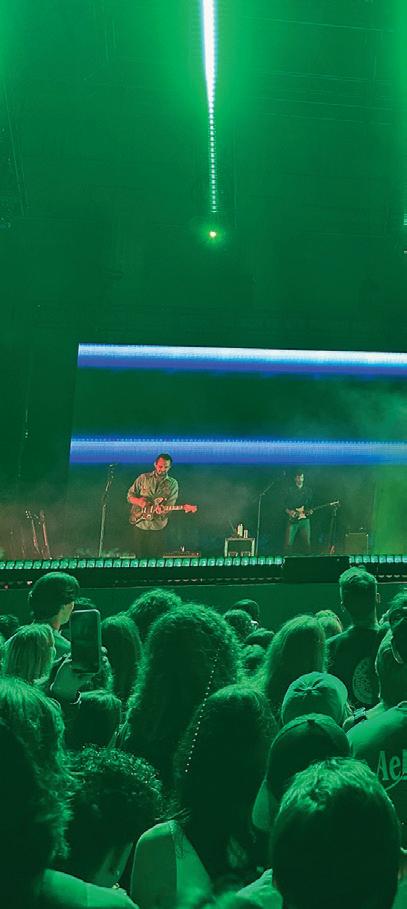
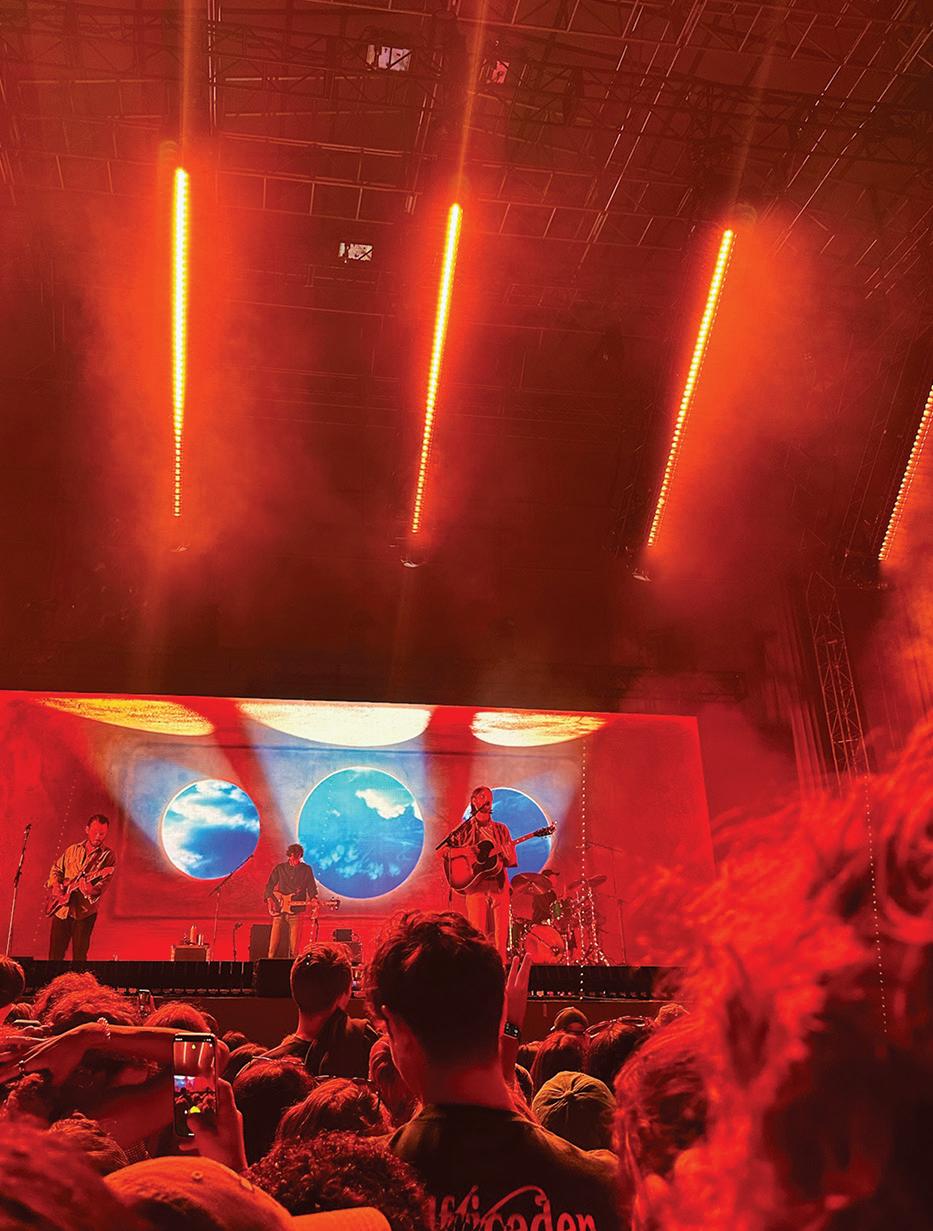
Many household names are tied to the beginnings of house music as a genre, with some of them being Chicagoans like promoter Robert Williams, DJ Frankie Knuckles and DJ Ron Hardy. Once the Chicago music scene developed, the infectious rhythm of house spread throughout the world.
“When you talk about the spread of house, I would argue that it’s something that Chicagoans bring around with them,” Salkind said. “They brought [cassette tapes] to colleges and universities around the United States. Middle-class, Black Chicagoans in particular, and people doing military service overseas in Germany and the UK, brought it around the world with them as a cultural touchstone that is reminiscent of their home lives.”
Once overseas, house music was distanced from the original communities that created it.
“There was less sensitivity to what it might mean for people to be influenced by something that was so raw and connected to underground and queer life in that moment of the AIDS crisis and a lot of harsh, structural inequality that affected inner cities in the U.S.,” Salkind said. “If you were a middle-class, white teenager from the Midlands of the U.K., coming to the US to hear music, you weren’t necessarily thinking about all of that. You were just like, ‘This [house music] speaks to me. I love it. It’s really cool.’”
House music reached Uribe during his teenage years growing up in Mexico City. Uribe spent countless nights at “antros” (Mexican nightclubs), where he discovered his love for the genre.
“When I was young, there was a third space,” Uribe said. “They [antros] were like clubs, but for younger people — there was no alcohol, but there was a DJ.”
House music was the backdrop to these spaces, creating an atmosphere in which people were not afraid to dance, let loose and have fun.
“The magic moment is when you are dancing with your friends and the tunes of house [music] begin,” Uribe said.
Daniel Uribe Paly parent

Although Uribe still creates ways to enjoy house despite no longer frequently going to nightclubs, he occasionally finds himself missing the feeling of dancing at a club with his friends.
“[I’ll] always prefer to listen to it [house music] at a party with the rest of [my] friends,” Uribe said. “It’s a very social thing when you look at each other and say, ‘Oh, this is the song, right? This is the tune. This is it’.”
Now, the torch has been passed to younger generations, as house has recently re-emerged into popular culture for teen agers to experience for themselves. Paly senior Anjini San chorawala finds that house is the perfect avenue for dancing and having a good time.
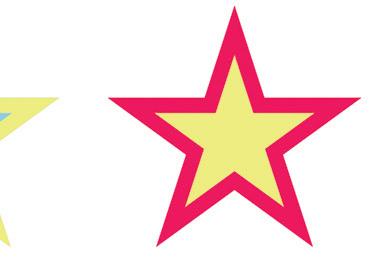
“It [house music] just pumps you up and gets you hyped,” Sanchorawala said. “It feels like your body has to move to it, so it’s good dance music.”
For Sanchorawala, music has always been a big part of her life, and her discovery of house came naturally through her love of other genres.
“My dad’s side of the family is really musically inclined and [listens to] Indian classical music that has a lot of rhythms, beats and movements.” Sanchorawala said. “I’ve been hearing that since I was a baby. I am also in choir, [where] rhythm is so important.”
Sanchorawala is frequently seeking out these beats in the concerts she attends, with Australian music producer Fisher sticking out as one of her favorite performances to date.
“[Fisher] … makes music live, and he also played all of his best songs,” Sanchorawala said. “The crowd was super hype[d], … and everyone was just having a good time.”
As Sanchorawala sees it, one of the best parts of house music is its ability to bring people together, whether that be in a concert setting or when listening to it with friends.
“A lot of my friends are into house too, so we’re able to vibe to it together,” Sanchorawala said. “It’s easy because it’s so much rhythm and bass and is less lyrical. It makes me happy.”
Salkind sees the increasing popularity of house music among young people as a continuation of a pattern.
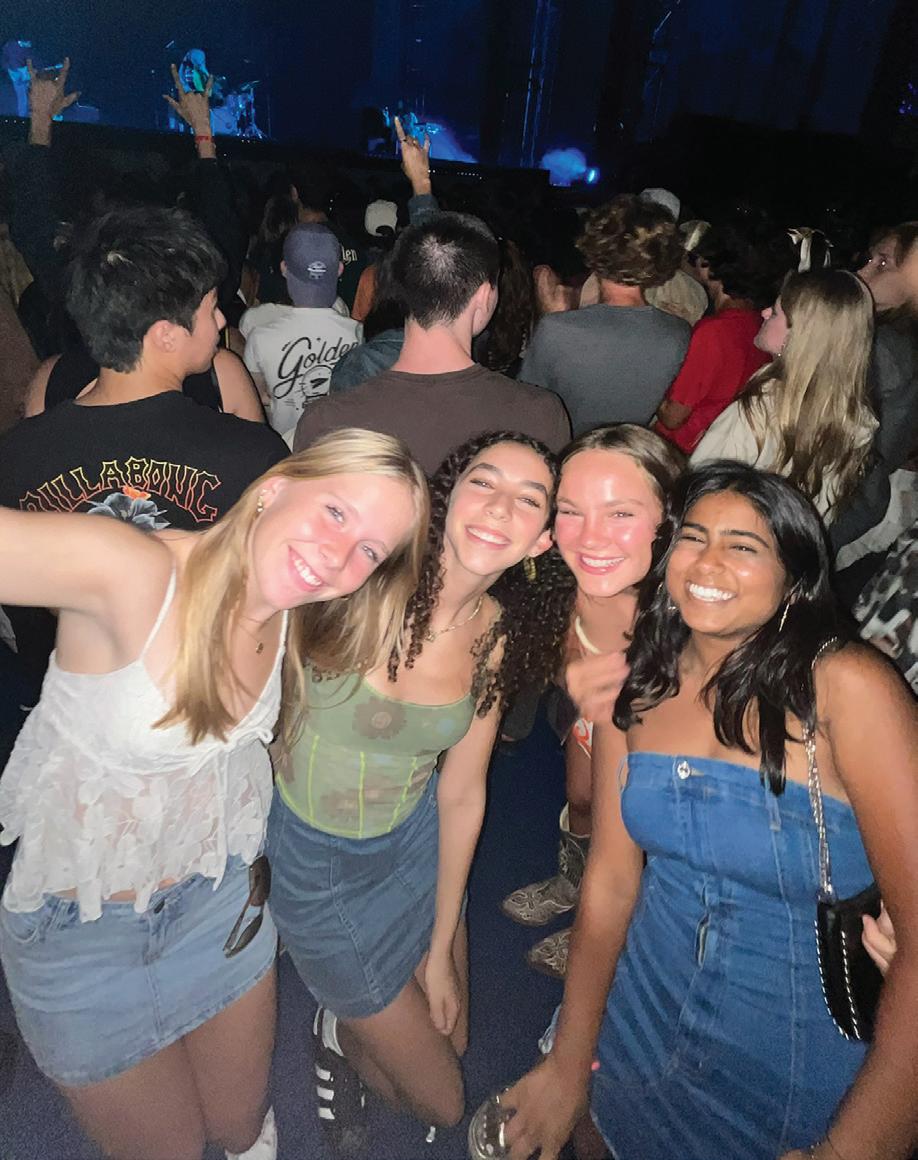
“House, to me, is like a heartbeat.”
by teenagers,” Salkind said. “It makes sense that teenagers and young adults will find it and fall in love with it, especially because it’s the peak point of your life where you’re out socializing, where you want to go dancing, where you want to party with your friends. House being the soundtrack of that life stage is nothing new, and it’s great how that is continuing.”
Ethan Estrada DJ and music producer
Liam Graham, a college student at Harvey Mudd who is originally from the Bay Area, is part of the new wave of teenagers who are passionate about house music. Graham curates the soundtrack of his peers’ college experience by DJing at parties — an activity he began his freshman year.

“[My dorm president] said, ‘We’re having a party this Friday. Would you be interested in DJing?’” Graham said. “I was a little scared, because I hadn’t expected to start DJing in front of bigger audiences as soon as I got to college, but I didn’t want to turn the opportunity down. I was like, ‘All right, let’s do it,’ and it went really well. People had a fun time.”
Oftentimes, the DJ’s role is to be a vessel for the music and a factor that elevates the party.
“You have to bring the party to them [the crowd],” Graham said. “It’s almost like an exchange of energy. I can feel
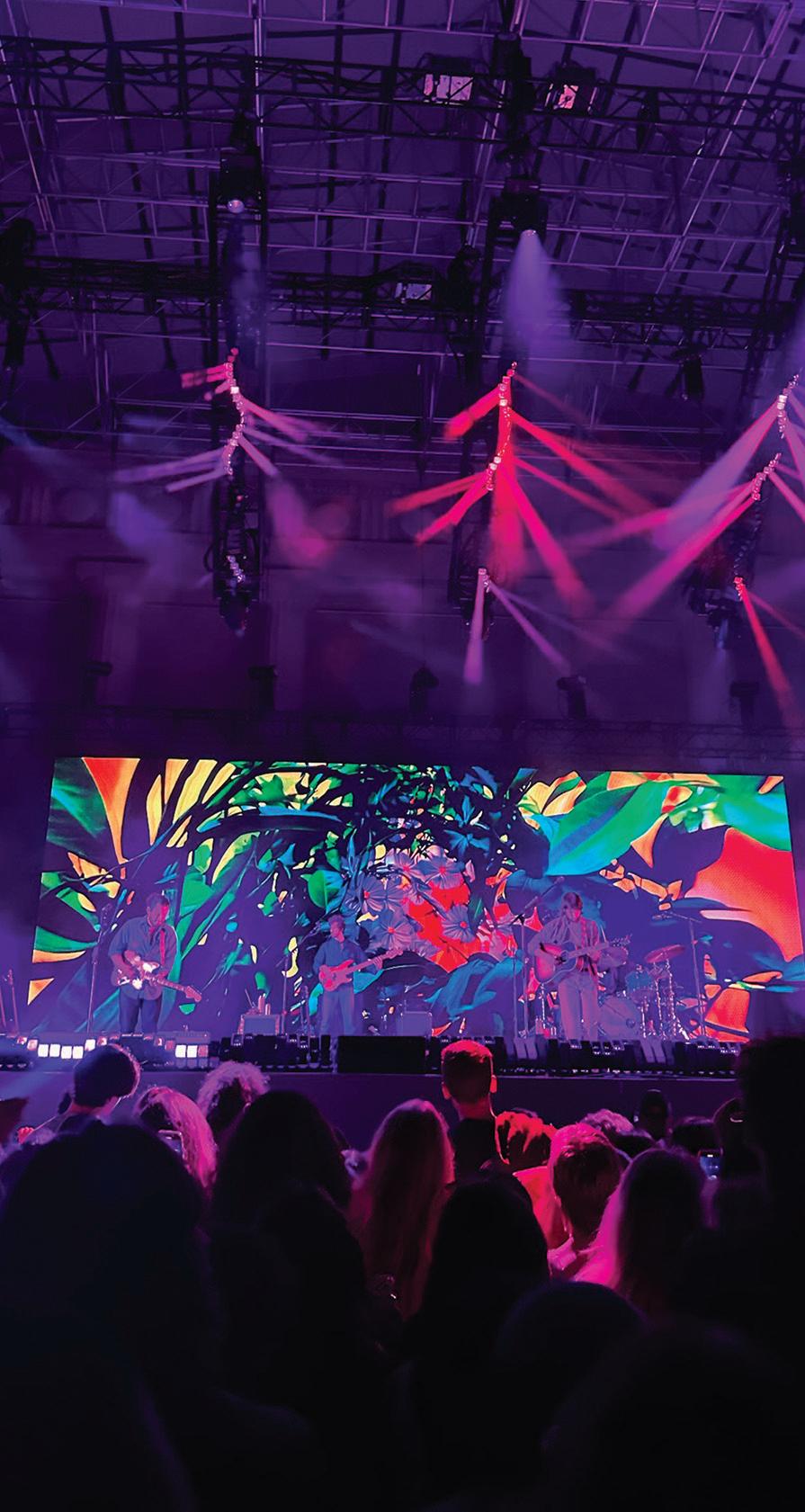
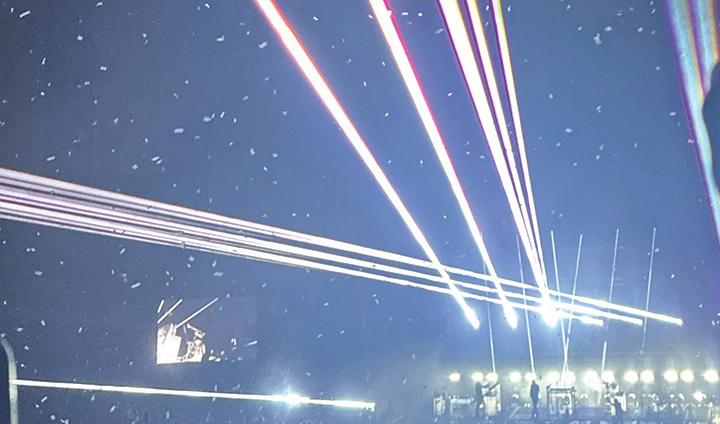

the energy of the crowd, and then I try to give that back, and then it’s like a cycle.”
In Graham’s experience, house music has emerged as a unique genre of music that successfully hypes up any crowd.
“As a listener, it [house music] is really danceable,” Graham said. “It has a repeated groove and rhythm.”
House music is felt differently by everyone. For Bay Area native, DJ and music producer Ethan Estrada, house has a deep, easily recognizable style.
“House, to me, is like a heartbeat,” Estrada said. “It perfectly syncs with the body’s natural rhythm when dancing. It’s also pretty easy for people to recognize the rhythm, which is a nice [way] of connecting to others in the dance scene.”

Estrada studies at Bowdoin College, where he continues to explore the world of electronic music through both DJing and finding his own unique sound.
“From my experience, it [DJing] is just messing around until something clicks and the ball starts rolling,” Estrada said. “Otherwise, it’s a constant wave of throwing out projects and trying again from a different angle. It’s more of a spur-of-the-moment kind of thing, which makes the times that it clicks really special.”
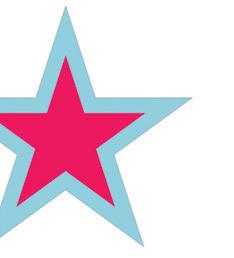
Paly junior Juni Thurston has also experimented with creating music for a few years, sparked by her appreciation for the songs she listened to.
“I originally started producing music in seventh grade, because that was when I started listening to more electronic music,”
Thurston said. “I remember thinking, a lot of these songs were composed of simple melodies, basslines and rhythms. I thought to myself: ‘How hard could it be to make this type of stuff?’”
Thurston quickly realized that producing electronic music requires more effort than she initially assumed.
“The first couple of songs that I made were so bad,” Thurston said.
“It’s about the experience of the music.”
“But I still put them on SoundCloud, and somehow, people liked them.”
Despite Thurston’s
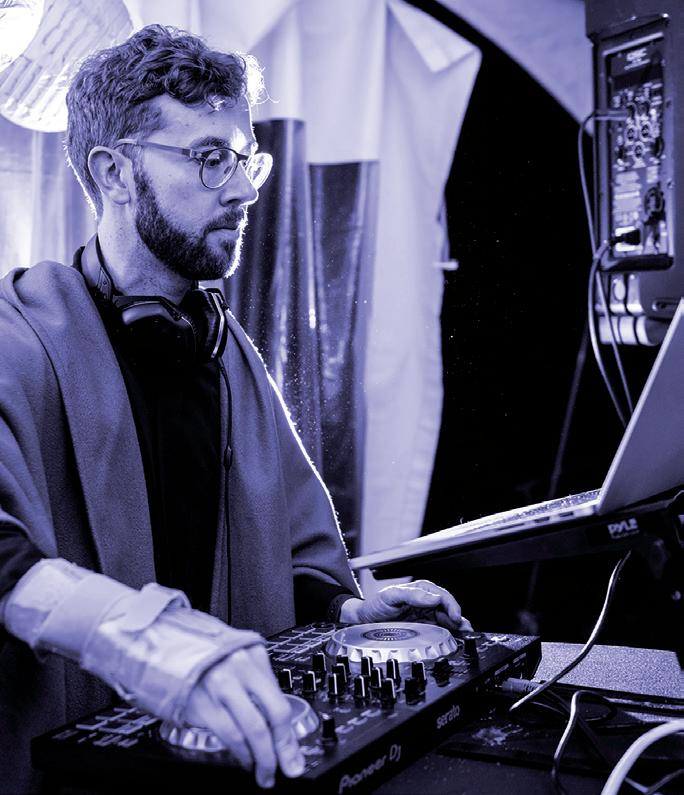
creating her own music.

“I just kept on making stuff, and eventually, what I made got better,” Thurston said.
For Paly graduate Kellyn Scheel, house music has helped her explore her own creativity in an unexpected way. Her brother, Dillon Scheel, first introduced Kellyn to the scene.
“When he [Dillon] was a senior in high school, he started leaning more into music production, which, by default, kind of gets you into the EDM [electronic dance music] realm,” Kellyn Scheel said. “He’s the one who introduced me to it when I was really young, … and then I followed his music taste and developed my own.”
Dillon Scheel continued to dive into music production and now produces house music under the name of Arlo, accumulating over 1 million listeners per month. This love of music began with guitar and led Dillon to attend Berklee College of Music for jazz guitar. When the COVID-19 pandemic forced school closures, Dillon returned to California, bringing his passion for creating music back home with him.
Kellyn Scheel Graphic designer

“At this time [2020], I had just started learning how to do graphic design,” Kellyn Scheel said. “He was home, and he was making music, and I was making art. I was messing around a little bit with stop motion animation on my iPad, just in my free time. Me and my brother
were hanging out, and he was like, ‘What if I make a song and you make an animation that goes with it?’”
This moment was the catalyst for Kellyn Scheel’s continued involvement in the visual aspect of house music. Beginning her design experience as creative director of C Magazine, Kellyn Scheel began experimenting with animation and graphic design in the house industry and now creates concert visuals for major house artists.
“When he [Dillon] started releasing more music, I started making little visuals for his Spotify page,” Kellyn Scheel said. “As he started gaining a following on social media, he was like, ‘I think it’d be really cool if we started using some visuals on my page, because it will help divide up my social media content with some videos of me mixing and some videos of your art.’”
Once Kellyn Scheel began to make house music visuals, she started watching live music to improve her craft. Consequently, she also started noticing how house and electronic concerts are unique from other concert forms.
“In other concerts, it’s about the performance,” Kellyn Scheel said. “But with electronic music, you’re not performing, necessarily. You’re mixing on stage, so you don’t have the ability to play guitar or sing. It’s more common for them to just kind of stand there, so they rely a lot on the visual content behind them to immerse the people in the crowd in music.”
Eventually, Kellyn Scheel’s visuals reached the attention of it’s murph, a wildly popular DJ and producer.
“He [it’s murph] messaged Dillon and said ‘Hey, who does your visuals? I’m looking for someone to do a set for my show,’” Kellyn Scheel said.
Kellyn Scheel began to reach out to more artists, build-

In C Mag’s house..
ing her website and even making the visuals for its murph’s recent tour. The way she sees it, house music is about much more than just the sound.
“It’s about the experience of the music, rather than the songs themselves,” Kellyn Scheel said. “It’s about that live performance and experiencing it with other people and feeling the music, and that is my favorite part. You’re not supposed to dig too deep into it or look for some sort of deeper emotion. You’re just supposed to be in and share that experience with other people.”
As the popularity of house music continues to grow, modern teenagers continue to experience it in the way their parents did: an outlet for genuine connection and positive energy. And whether or not they are conscious of its origins in the moment that they engage with it, house music seems to have an undeniable effect on all who choose to listen.
“What I hope for those young people that are discovering house music is that they figure out what it means to them, and then learn more about where it comes from and and why the people who created it did,” Salkind said.
However, Salkind recognizes that modern teenagers should not be afraid to experience house music for themselves and make it their own.
“I hope that people aren’t trapped by this [fear] of freezing any cultural expression in a time and place and not allowing it to breathe and grow and change,” Salkind said. “I hope young people take house and they run with it and do something amazing.”
Text and design by ANNIE KASANIN, POPPY MORRISON, SILVIA RODRIGUEZ and ELLIS SHYAMJI • Photos contributed by MICAH SALKIND and ANJINI SANCHORAWALA • Photos by ESTELLE DUFOUR




MY PERSPECTIVE: The humanities aren’t dead — we just forgot why we need them
When I first tell people I’m going to study philosophy in college, they give me a thinlipped smile and ask, “But what are you planning on doing with that?” Though most of the time the question is genuine — today, most people cannot fathom what someone could accomplish with a humanities degree — it gets exhausting to have to explain why I’m pursuing the humanities.
Our lives in the 21st century are host to a world of technological advancements few thought were possible, a new dawn for the computer science revolution — the age of artificial intelligence. Everyone, since I was a child, has been telling me to get a degree in one of the STEM fields — science, technology, engineering and mathematics.
Admittedly, I’m incredibly lucky to live in Silicon Valley — Palo Alto is a city of growth and innovation, and the opportunities presented to me are boundless. That being said, in Silicon Valley, as well as the broader United States, there has been a recent devaluation of the humanities, stemming from a wider cultural
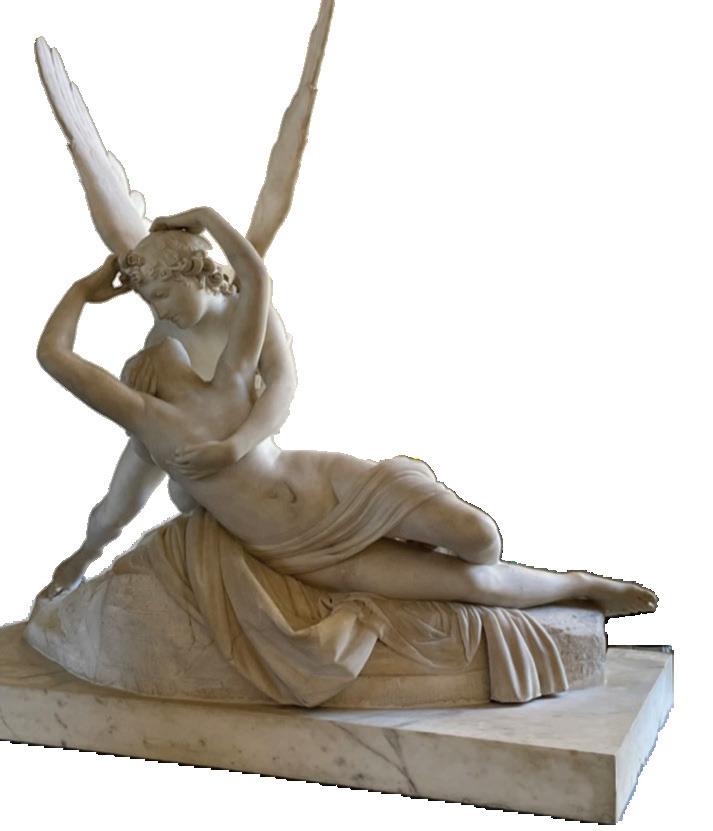
and intellectual movement that prizes and prioritizes STEM degrees and careers.
The humanities, as many see them, are a grouping of subjects, all tied together by ancient Greek figures, overly pretentious critics and dense, pedantic literature. However, what I be lieve many people overlook is that the humanities are vital for human innova tion.

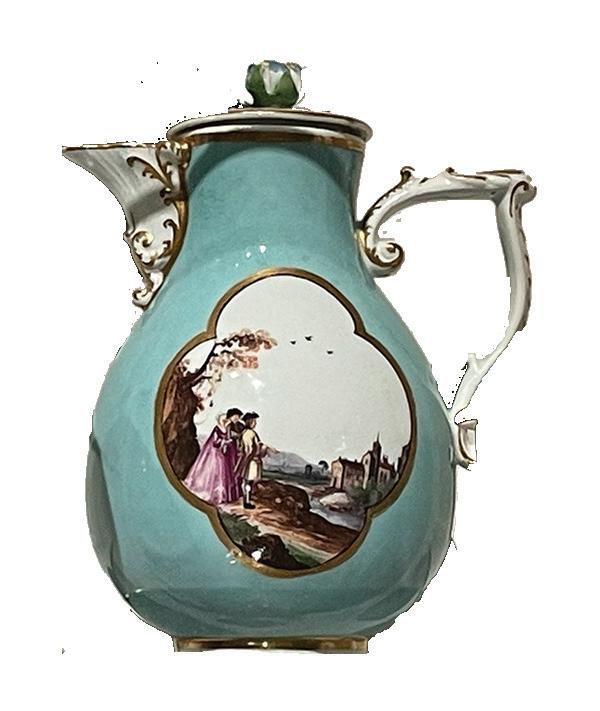
Take Isaac Newton, a key player in the Scientific Revolution and a re nowned physicist. Many people remem ber him as “the apple guy,” or from his three laws used in physics classrooms around the world. Yet, his ideas about physics were actually de rived from philosophy — at the time, in the 17th century, physics was a branch of philosophy bet ter known as natural philosophy.
In Silicon Valey, as well as the broader United States, there has been a recent devaluation of the humanities.
In addition, Albert Einstein, a renowned mathematician and physicist, was also deeply intertwined with philosophy. He went even as far as to say that philosophy is essential for scientific work. Einstein employed philosophy as a means to dig deeper into the foundations of physics and promote critical thinking, thereby un earthing new discoveries. These instances of intersec tion between STEM and hu manities subjects are not just limited to physics and philosophy, though that is one of the more obvious connections. The arts have influenced many discov-





eries and innovations, and the opposite is true — innova-
Many people forget we live in a world where there is no either/or and there is no black or white. We can not solely prioritize STEM careers and pathways because the soul of humanity also lies in the hu
In recent years, many universities have begun to cut back on humanities majors and defund cer tain programs. In 2020, the annual number of hu manities undergraduate degrees awarded was below 200,000 for the first time in 20 years.
As we inch towards a world increasingly reliant on tech nology, this decrease in the number of humanities graduates might not seem like a problem — yet, it is still an urgent issue. As machines begin to replace jobs that humans used to occupy, employers are seeking people who are competent, critical thinkers. Many of these skills that employers are looking for come from humanities degrees.


Additionally, between 2013 and 2030, in the United Kingdom, up to 900,000 jobs could be generated in creative industries.
We have always required humans to inspire other humans, and those jobs — humanities jobs — could never be replaced by technology. When machine-assisted learning doesn’t prove as effective as real teachers, who will educate the future generations? When AI-generated art doesn’t satisfy critics, who are the real artists who will step up? When the culinary arts become overwhelmed by incompetent chef robots, who are the cooks who will take back the kitchen?
In fact, many employers believe that a humanities degree will be beneficial in the age of AI, as it is challenging to replicate critical thinking with machines.
We have only become blinded by our greed for a machine-assisted world.
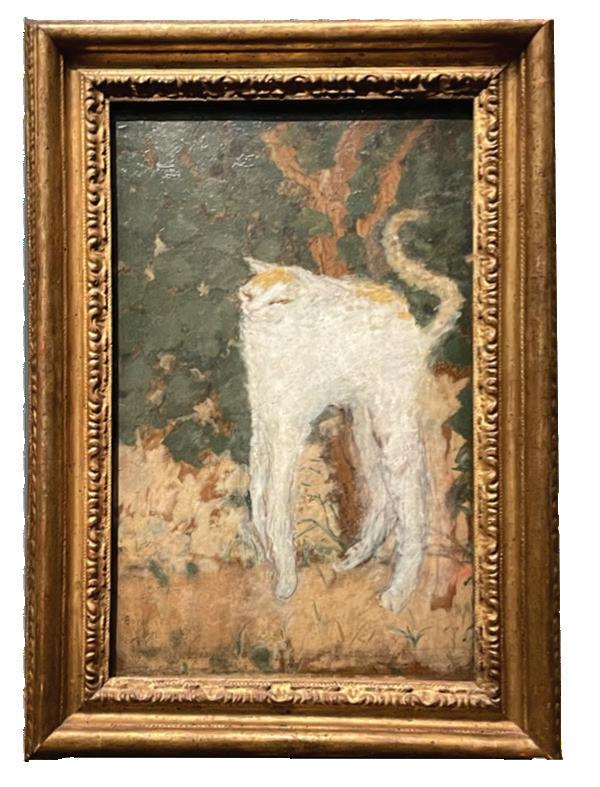

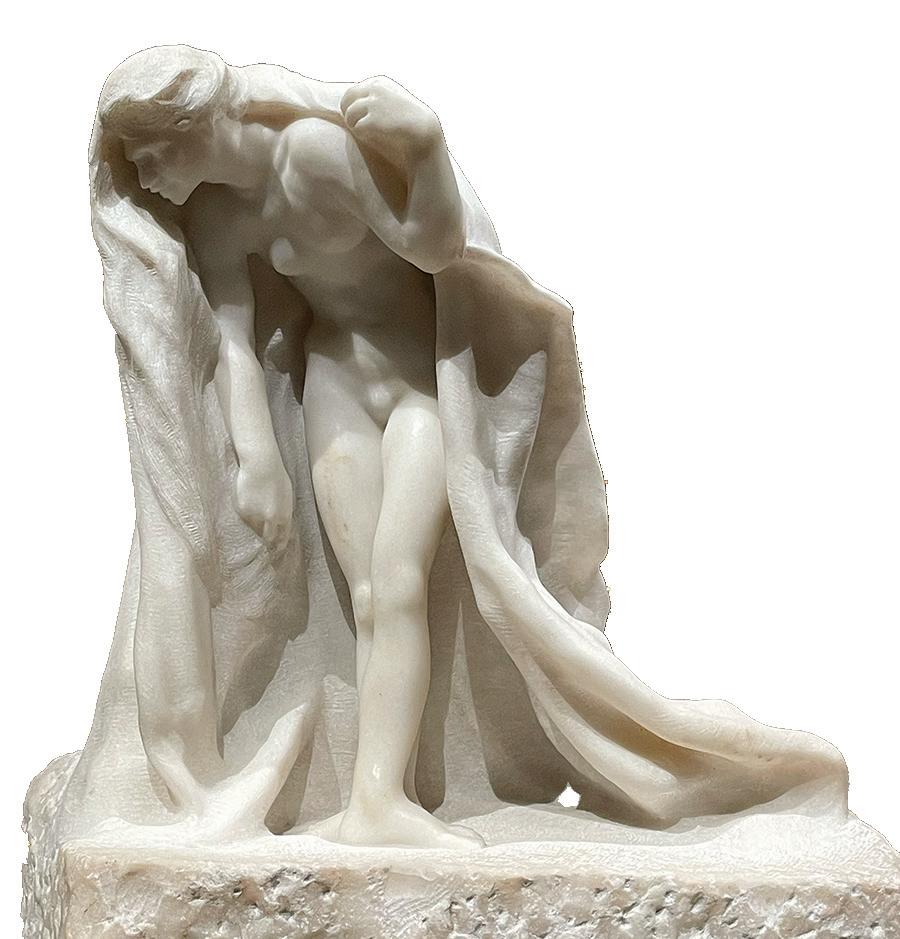
For what are the humanities if not a culmination of all human thought and creative expression? We have only become blinded by our greed for a machine-assisted world, choosing to spend our time and resources on what we think will generate the most money for us and our culture. A STEM degree will always be useful — we are always innovating. At the same time, as more of our lives become so ingrained with technology, it’s imperative that our society sustains the humanities. The humanities are not dead — they never have been, and they



Vibrantly lit football bleachers, tall and high, glow compared to the dark night sky. The beaming lights reflect the rows of faces painted in green and white, and the loudspeaker echoes in the background of the laughter-filled air. These stands are built on tradition, community and memories — a place where generations come to meet and reminisce on their youth. But it is not only about football — it represents a whole school culture, one that is very different from around the world.
While different from other schools around the globe, American high schools are also quite dissimilar from each other, contrary to common belief. Adam Tobin, Stanford screenwriting senior lecturer, is aware of this misunderstanding.
“There’s a sense that Americans just think high school is the same everywhere,” Tobin said.

But despite this common belief, the American school system is very distinguished from other countries around the world. One of the standout features of the Ameri-
can system is the students’ ability to choose. Unlike many high schools outside the U.S., where the curriculum is often set in stone, American schools offer freedom. For many high schoolers sim ilar to senior Roni Horovitz, the option to pick whatever classes one wants to take is one of the aspects of American education that students are grateful for.
from Germany two years ago. She enjoys the variety in pastimes and extracurricular activites.
“Here, you have many more resources and different activities,” Gera said. “In Germany, it was just school, just classes.”
“I prefer the American system because it’s nicer to choose the subjects you are interested in.”
“I really like how there are so many options for classes, and you can design your own schedule for the most part,” Horovitz said. “There are tons of options for different electives to take, and all of the teachers are there to support and help you. It shows that they actually want to be there to teach.”

Sophomore Zhendi Cao moved to Palo Alto from New York only this year, after moving from China one year ago. Through all these changes, Cao has noticed many differences among schools.
“We can choose whatever course we want,” Cao said. “We can pick easy courses, or skip the courses we don’t like.”
Junior Emma Lodes, who moved to Paly this year from Austria, also admires the flexibility in picking classes compared to European schools. This freedom may seem expected in all schools, but it does not occur in other countries.
“In Austria, you can’t really choose your subjects,” Lodes said. “I prefer the American system because it’s nicer to choose the subjects you are interested in.”
Senior Angelica Gera moved to the U.S.
This lack of flexibility in extracurricular activities is also found in different parts of the world. Junior Jessie Kwan, who moved from Hong Kong, finds there is a difference in lifestyles for students in Asia.
“Our culture is very different in [America compared to] school in Hong Kong,” Kwan said. “All the time [in Hong Kong], your extracurriculars are just going to tutoring, and that’s basically all you’re doing. You’re just studying. But here, there are a lot of aspects to school life, like spirit week, homecoming and all that stuff. That’s a really big change from the culture in Hong Kong.”
One of the popular extracurricular activities that several American high school students take part in is sports. The opportunity to exercise and compete is extremely valued compared to other countries like France, where French middle school teacher Juline Hombourger teaches. In an interview conducted in French, Hombourger said she is aware of the more extreme attention to sports occurring in the U.S.
“Sports seem to me to be practiced a lot more and considered as an important activity,” Hombourger said. “Sports matches seem, to me, to be followed by all of the high school. There are cheerleaders. The student that is very good at sports is val-
ued.”
Whether these sports are through the school or even outside of it, these opportunities allow students to exercise, build a community and also support their school through showing up and their spirit.
“I like how sports are a big part of student life,” Horovitz said. “Not only do lots of the students participate in sports, [but] lots of students also show up for games, like the football games. There are always lots of students showing up and cheering, and it makes the whole thing really fun. It’s not really about whether we win or lose,; it’s more about the experience of going to the game.”
But, not every school pulses with the same energy.
Kong, it’s from seventh to 12th grade,” Kwan said.
This is also the case in a lot of European countries, where schools are oftentimes smaller and structured differently than what American students would consider normal.

“There are a lot of aspects to school life, like spirit week, homecoming and all that stuff.”
Jessie Kwan, 11
“I definitely think the school pride here is way more intense than in Hong Kong,” Kwan said. “A lot of people here, [during] spirit week, go all out. There’s no such thing as spirit week in Hong Kong, and people would just wear uniforms.”
Not only are the pride, the liberty and the options different in American high schools compared to the rest of the world, but the categorization and separation of grades are also dissimilar.
Kwan said that grade levels that make up high school aren’t the same everywhere.
“Middle school and high school are also combined, so there are more grades in the same building but still less students,” Lodes said. “You normally have the subjects all eight years, so from fifth to 12th grade, but only around two hours per week. Except for the main subjects, you get them four hours weekly — math, German, English and every other language you take.”
Not only are the distributions of grades different for a lot of European countries, but a lot of them also have different school hours — sometimes consisting of much longer days and occasionally longer vacations.
The rhythm is different,” Hombourger said. “Our students finish their classes around 5 p.m. or even 6 p.m. We also have a break that is longer for lunch. I also think that we have the advantage of vacations.”
With the numerous differences of American high schools compared to the rest of the world, certain stereotypes are bound to take place. Across the world, students from other countries have their own images of
“Many people also think that there is a really high peer pressure, [as well as] less discipline and respect for teachers and any other authority figure. They also criticize the safety and protection from guns and rampages. In general, American high school is seen as pretty superficial and more like a place you have fun with your friends than one [where] you actually learn something.”
These stereotypes are not just random or a coincidence: They are the product of media representation throughout the world. Many films portray the schools in America as filled with drama. Despite that films like “Mean Girls” and “High School Musical” often exaggerate the drama, they still capture a key theme of an important period of growth and self-discovery that many go through in high school.
“[In movies,] high school is portrayed as this building that holds people who gossip, and the only thing that is important is drama and popularity,” Horovitz said. “I feel like at Paly, education and academics definitely come first. Everyone at this school is very driven and competitive, and people are just trying to focus on passing their own classes and hanging out with their friends.”
However, these stereotypes may not always be true or realistic, as movies have a tendency to create extreme portrayals.
“Cinematic stories are often looking for drama and extreme situations, whether those are dramatic or comedic,” Tobin said. “It’s particularly hard to draw authentic portraits when audiences might be looking for something that’s gripping.”
Despite American high schools being a prime setting for filmmakers to base their

high school which bring a sense of remembrance in a special manner.
“What’s pretty common is a feeling of being an outsider, being ostracized, being not understood, even if you’re among a group of friends,” Tobin said. “I think that feeling is pretty universal and is covered in lots of ways.”
ple and power structures,” Nemerov said.
This experience, all over the world, is shared by almost all individuals and can foster a sense of common nostalgia.
“Everyone at this school is very driven and competitive, and people are just trying to focus on passing their own classes and hanging out with their friends.”
A sense of exclusion is not the only key emotion many high schoolers experience. American art historian and Stanford professor Alexander Nemerov believes that high school can also represent a much bigger picture that resonates very similarly to the everyday world all individuals see.

Roni Horovitz, 12
high school is a shared experience for most Americans, no matter what age you are,” through high school; it’s a time of turmoil and growth, and that means there’s a lot of good drama there. And I think it can be a microcosm of society in different ways, in terms of class and rela tionships.”
for shaping the individuals they become. High schoolers are molded to take on whatever the future holds for them.
“Films on high school show a whole social world where you have classes of peo-
No matter where in the world, this pe riod of time that everyone goes through is crucial for people’s development and



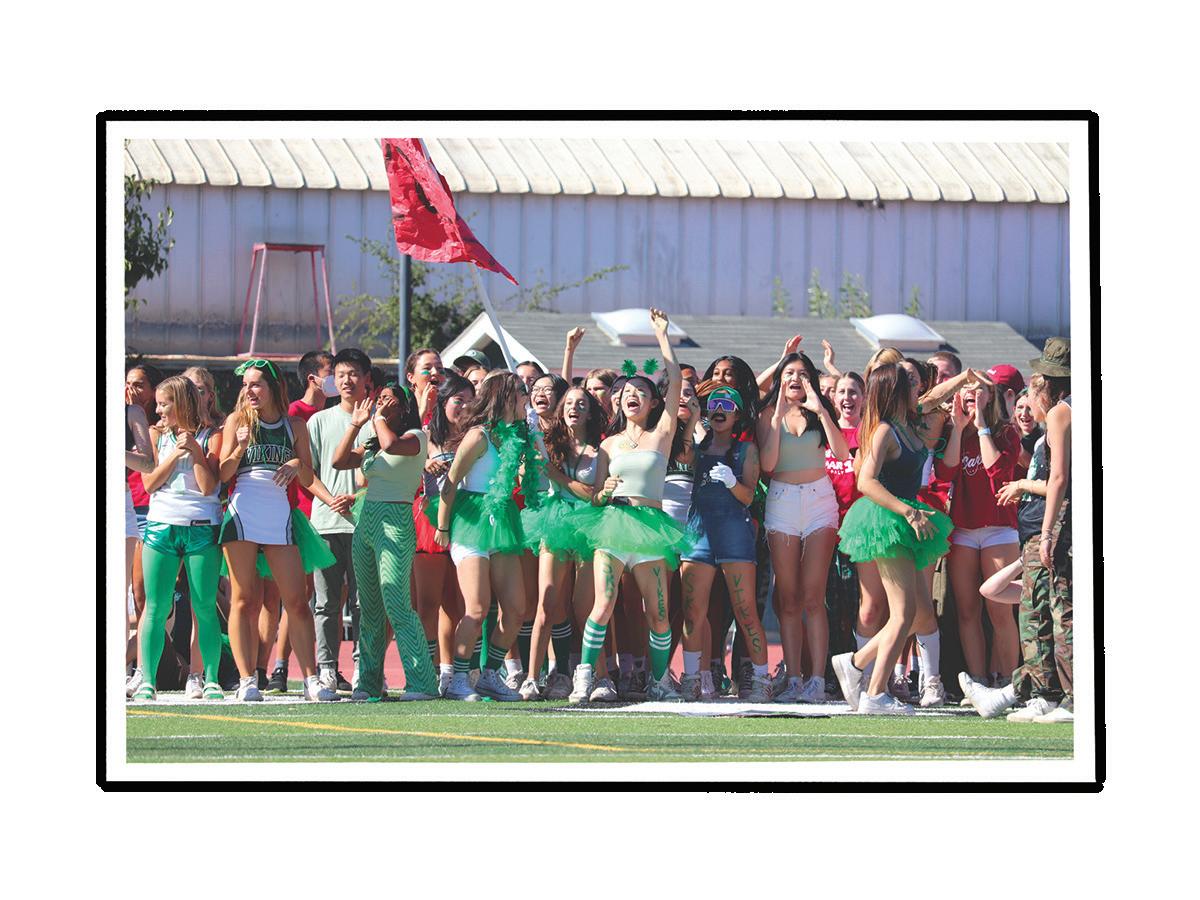





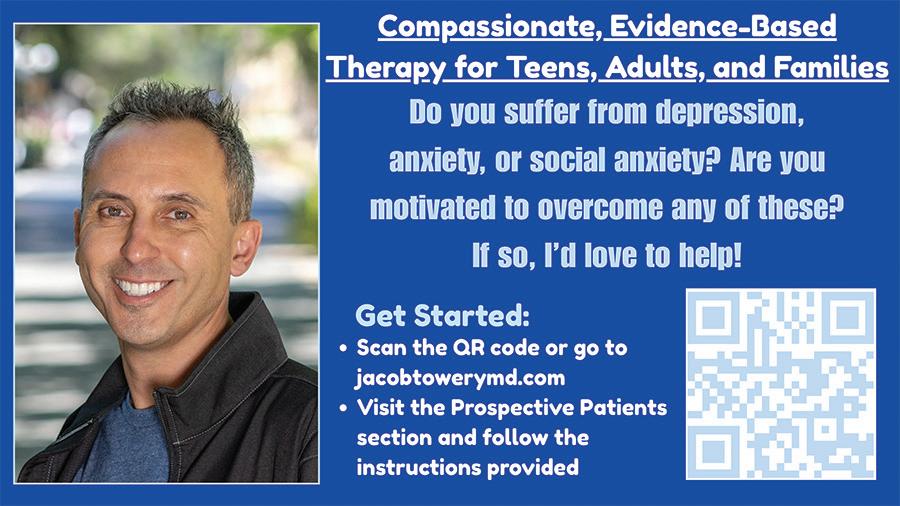




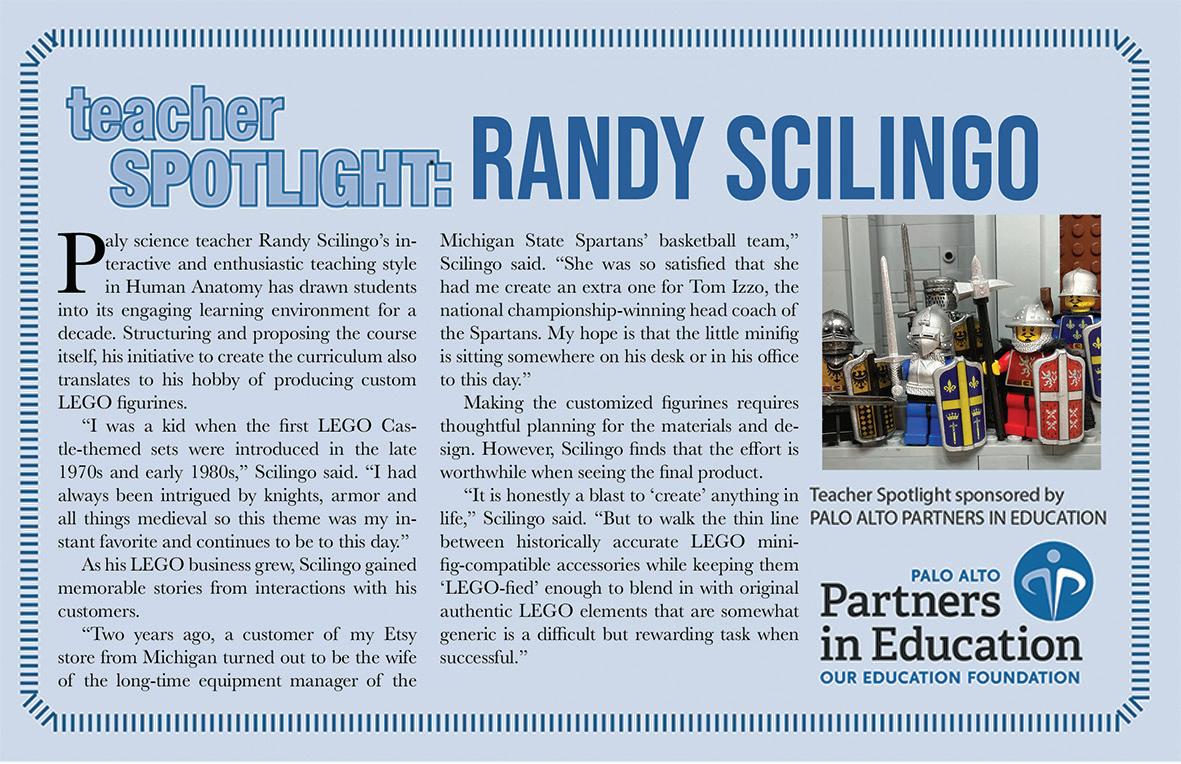
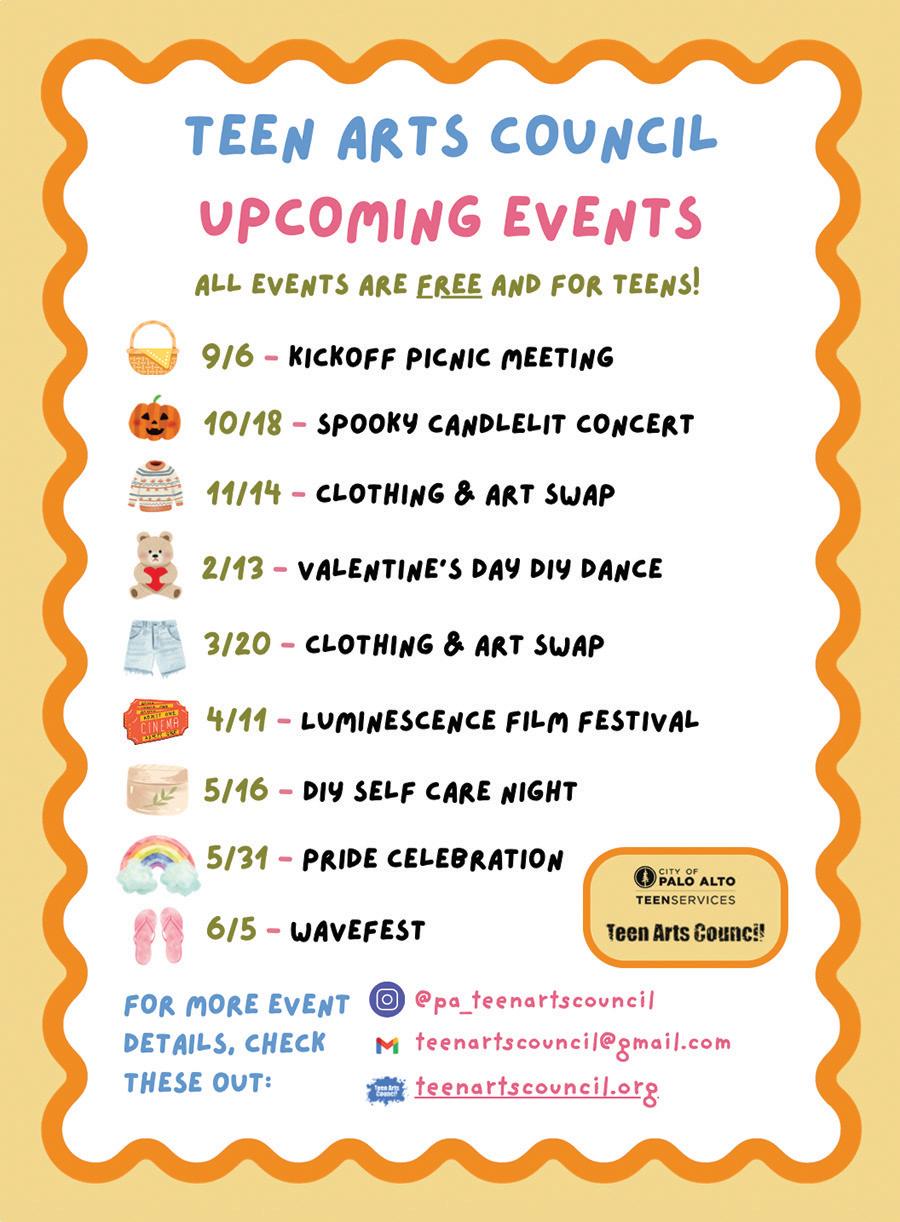



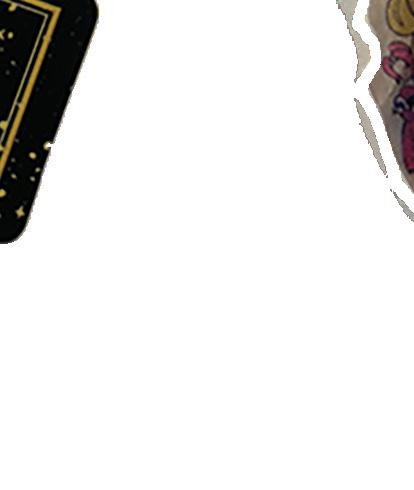




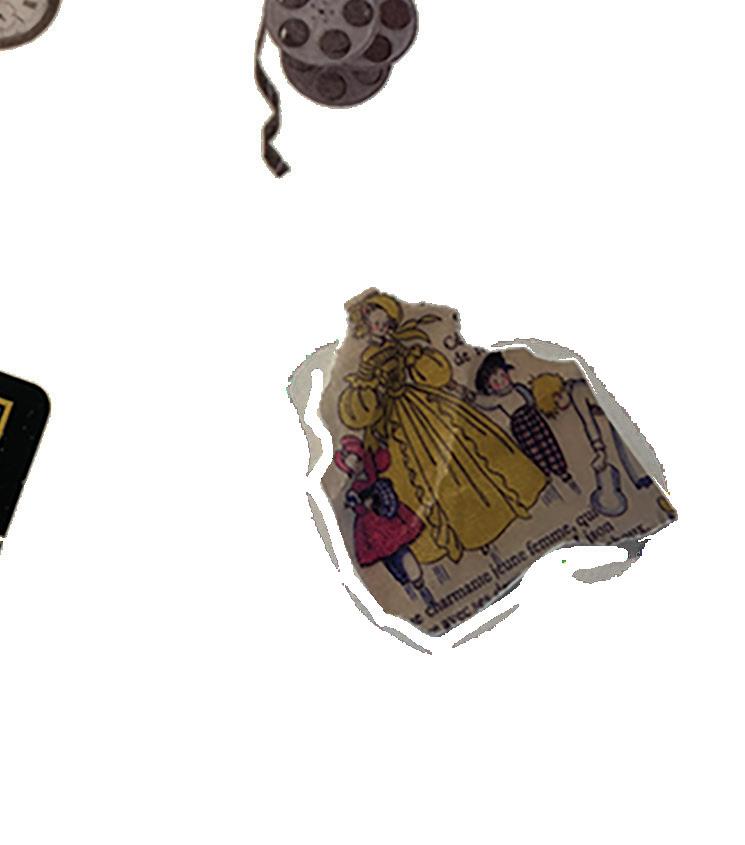
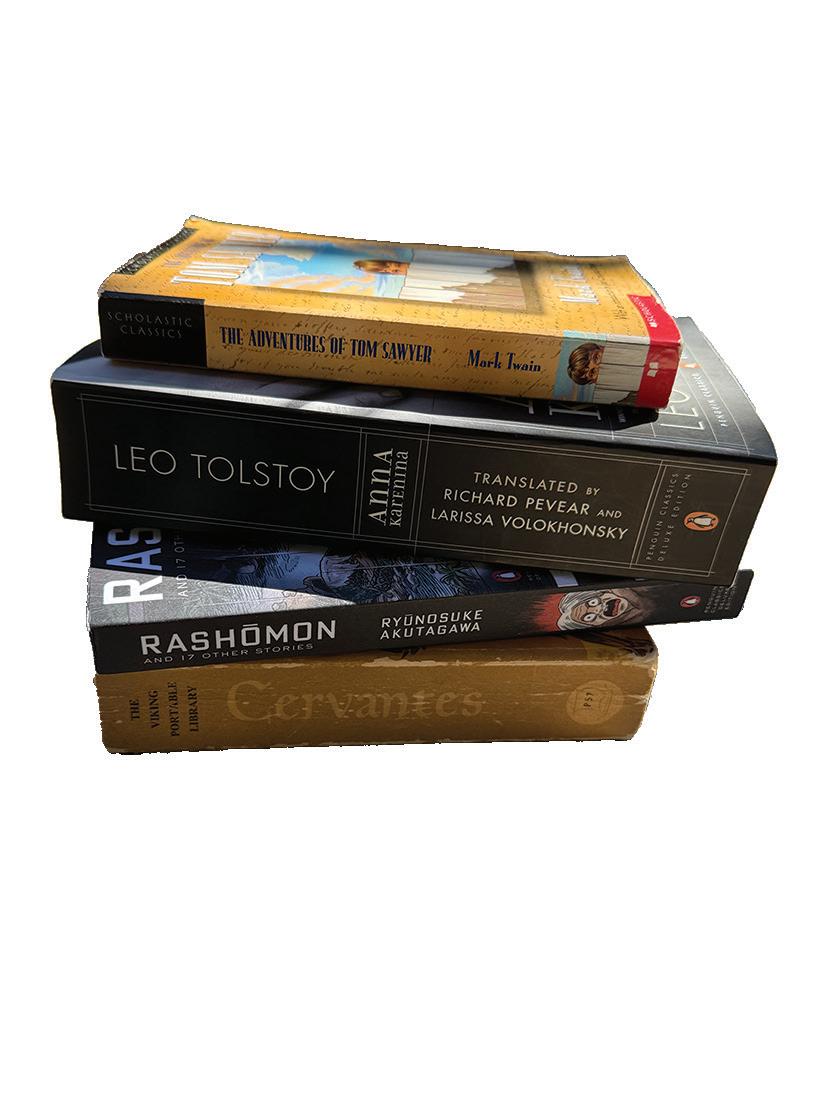
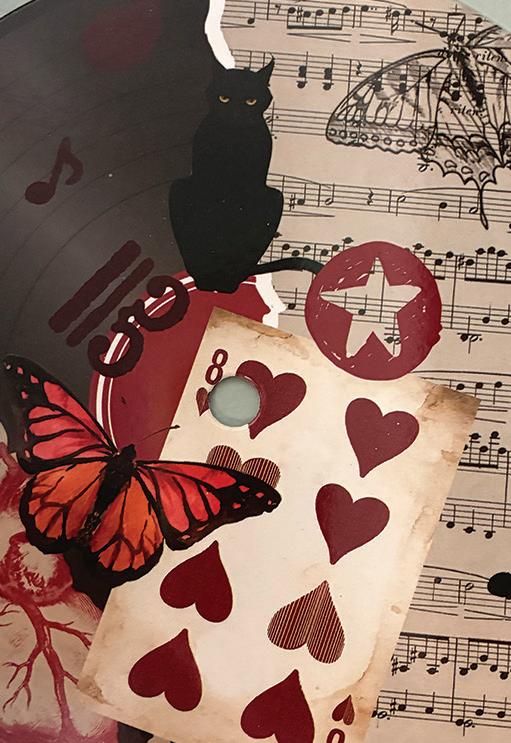


t’s hard to imagine that when Emily Brontë wrote her novel “Wuthering Heights” in 1847, it would eventually be used — almost 131 years later — in a popular art rock song. Yet, that’s exactly what happened in 1978 when Kate Bush’s rendition of “Wuthering Heights” became the first self-written song by a female artist to top the UK Singles Chart.
According to an interview she gave with BBC, Bush was inspired to write the song after watching the tail end of a 1967 BBC adaptation of Brontë’s novel. Brontë’s “Wuthering Heights” tells of the destructive relationship between the main characters Catherine and Heathcliff. Bush’s high-pitched, keening vocals are directly inspired by the lingering presence of Catherine’s ghost later in the book, aimed to convey a more ethereal effect.
Bush is not the only artist engaging with classical literature through their music.
Grace Slick’s “White Rabbit,” performed by the bands Jefferson Airplane and The Great Society, uses the cultural memory of Alice's journey down the rabbit hole in “Alice in Wonderland” to discuss the usage of psychedelic drugs in the 1960s, according to the Jefferson Airplane website.
Singers like Taylor Swift and Lana Del Rey draw upon literature not only to enhance their themes but also as an aesthetic. In her album “Ultraviolence,” Del Rey references Anthony Burgess’ “A Clockwork Orange” to create a dystopian-like backdrop that enhances and better conveys her message — a bold strategy that freshman Youna Lee said allows artists to explore existing ideas in new ways.
popularity, these songs can encourage people who are otherwise unfamiliar with the references to read classic literature. For Bittinger, this opened doors to new interests and ideas.
“The Cure’s song ‘Killing an Arab’, which is inspired by the narrative of ‘The Stranger,’ introduced me to Albert Camus’ writing and the philosophy of the absurd,” Bittinger said.
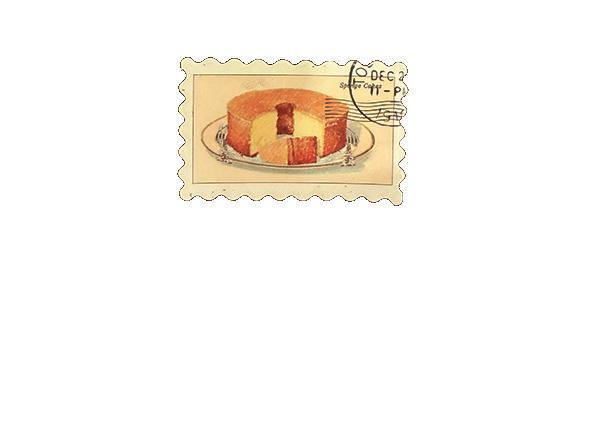
For others who are already familiar with the referenced literature, beloved songs which incorporate these elements can drive further engagement with the texts.
“I already knew about [the books] before I listened to the songs,” Lee said. “But, after I listened to them, I researched a bit further — not only to discover what the artist meant with the references, but also because I was
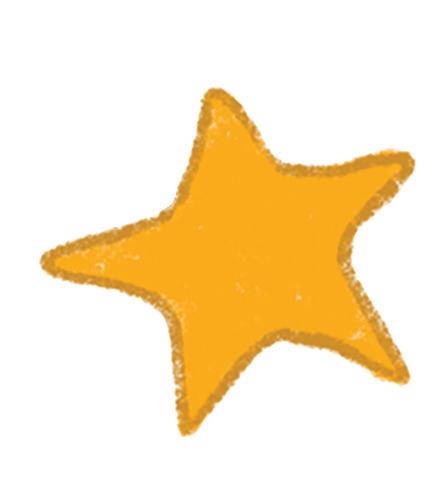
And while individual songs can act as a gateway to literary discovery for listeners, the conversation between music and literature extends beyond singular references. Artists sometimes dedicate entire albums to retelling classic stories, drawing from some of the most foundational tales in Western literary canon.
to“References literature in music, film and TV are vital to the creative process.”
Harry Bittinger, 11
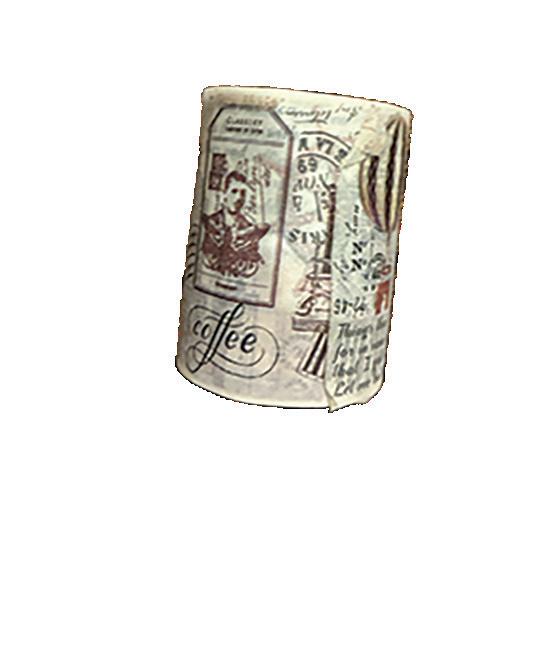
“There's a lot of musicals and other longer pieces that are just literary references, like the musical
“Musicians incorporate literature because they can usually [use it to] call back to themes that the literary piece or that author used,” Lee said. “It lets the artist explore new themes in their music by contrasting or building upon how another person explored a similar or a completely different theme.”
Similarly, junior and avid music fan Harry Bittinger highlights the idea of artists in conversation with each other. Even seemingly unrelated pieces of media can be largely influential to creatives working with a completely
‘Epic: The Musical;,” Lee said. “The musical is just a big reference to ‘The Odyssey’ by Homer. … It made me try to read daily.”

“Dialogue between artists enhances what a creative produces and captures an essential connection that defines what art is,” Bittinger said. Because of their
Shakespeare have also had a considerable impact in the field of music. His literary influence extends not only to thousands of books influenced by his stories but also the various songs and musicians inspired by them. Phrases like “star crossed lovers” and “green-eyed monster” have become common vernacular, often inspiring music like Duke Ellington and Billy Strayhorn’s “Star-Crossed Lovers” and Taylor Swift’s “Love Story.”
According to junior Kristella Ibuyan, songs such as “Our Lady of Sorrow” by My Chemical Romance


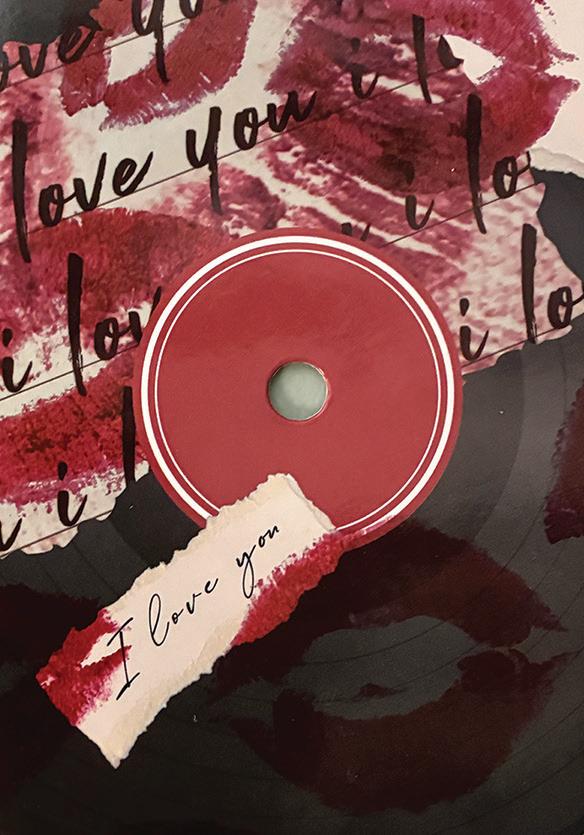


a“Anyonewhowrites …song[withaliteraryreference]is oreithertryingtofindinspiration, hasalreadybeeninspired.”
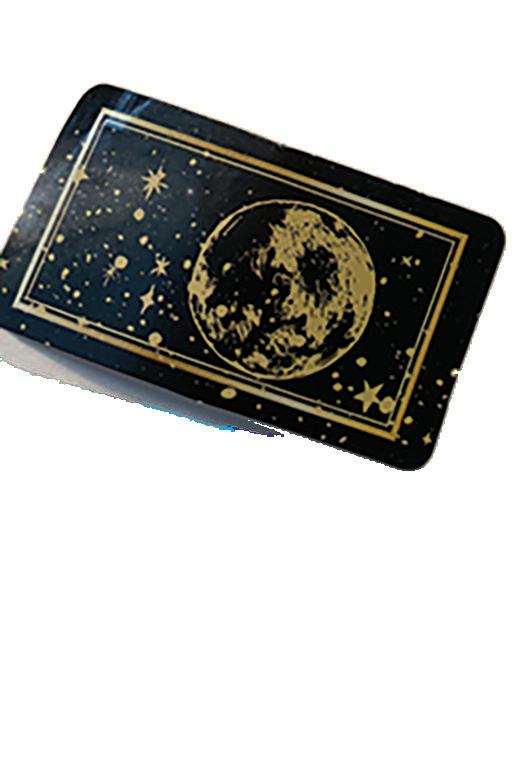
embed tropes from “Romeo and Juliet.”
“Whether you think it’s corny or not, so many people will understand because they know their story,” Ibuyan said.
Paly music teacher mentions that the Bible is often alluded to in many country, gospel and folk songs —
“There are clever uses of the Bible [in songs],” Najar said. “‘Solsbury Hill’ is a hidden story about Jesus rising from the dead or coming home, but you would never know
However, literary references aren’t just limited to written text like the Bible or Shakespeare. Stories from folklore that reside within cultural memory can also become direct inspiration.
“There's this song called Arari by Lucia … and it references the [Korean] folktale of Aryan, which is about a young woman singing about how she doesn't want her love to go away,” Lee said.
Beyond explicitly naming novels and characters, the dialogue between music and literature can be far more subtle. This is particularly effective when artists use the listener's own knowledge of literary canon to intentionally subvert a familiar narrative, challenging preconceived notions.
“The songs that I like are the ones that play on [listener] expectations,” Najar said. “[For example], Jesus is a drinking buddy who is [narrating the story].”
Yet, not every reference carries the same weight.
“It's really how well you tackle the literary reference and how much it actually builds upon your own themes,” Lee said. “You're not just referencing some author to make yourself sound smarter. It's a fine line, but it's definitely


In that sense, every reference becomes part of a larger narrative carrying forward themes that have resonated for centuries. When artists reinterpret literature, they are not only drawing on timeless narratives, but retelling the stories that make us human.
“The idea of inherent unoriginality can ultimately be interpreted as a positive message,” Lee said. “Times are always changing, and although the work might not be completely ‘original’, it’s new and it speaks the truth of an entirely new budding young generation of artists and people.”
Text,
STELLA GUO and MAIA LIN
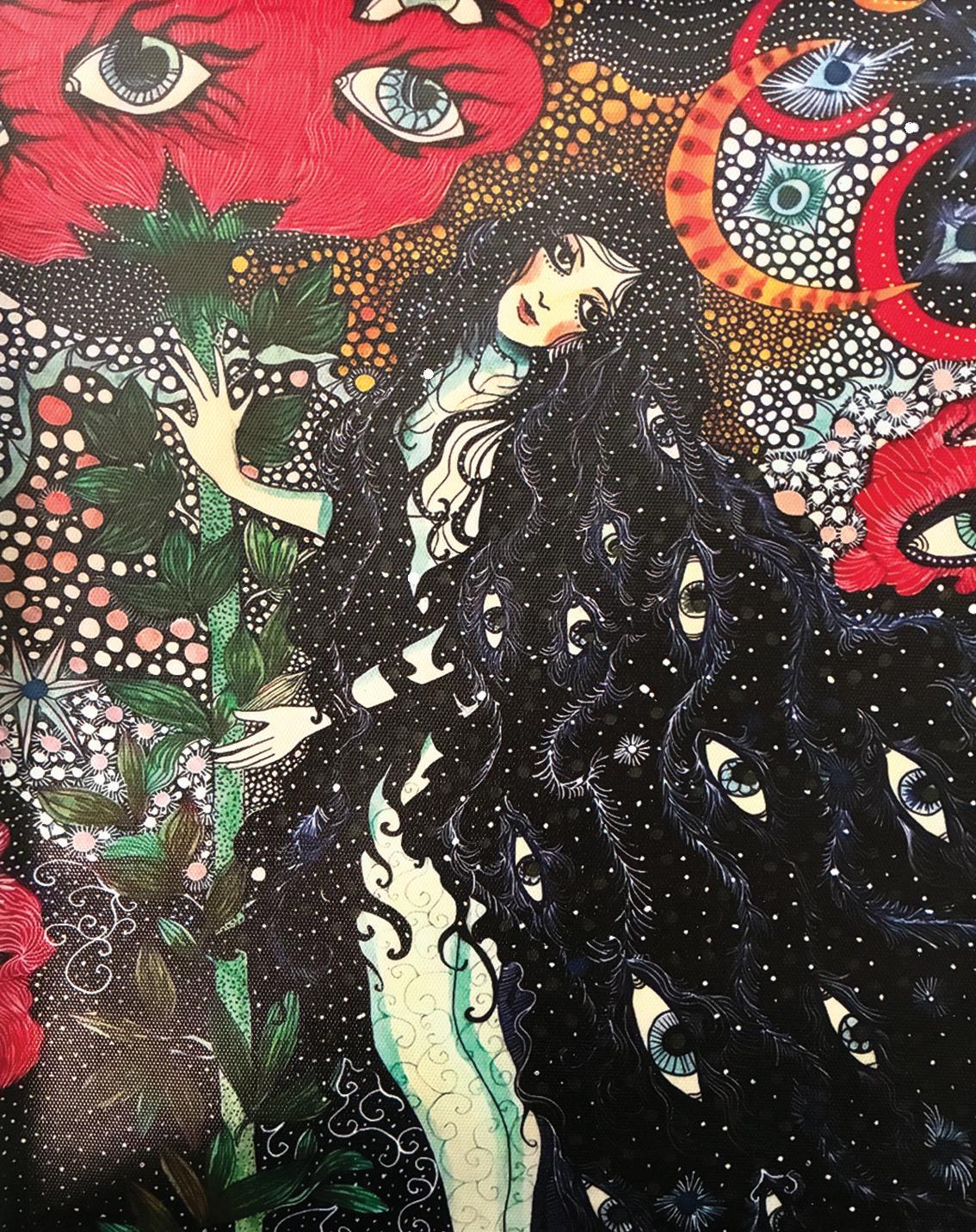

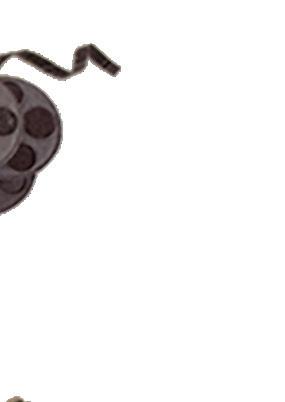
In many ways, these interpretations highlight the cyclical nature of art: literature inspires music, which prompts listener interpretation and responses. For artists, references can also be a source of personal exploration.
“Anyone who writes a song [with a literary reference] is … either trying to find inspiration, or has already been inspired,” Najar said. “Maybe they've heard about it, and

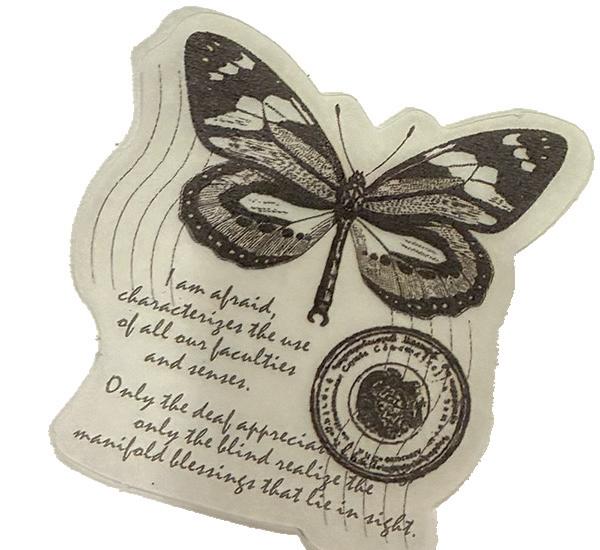

Check out our literary referenceplaylist!

As fall is approaching, take a look at Paly students’ fall outfits and favorite accessories as your next outfit inspo!

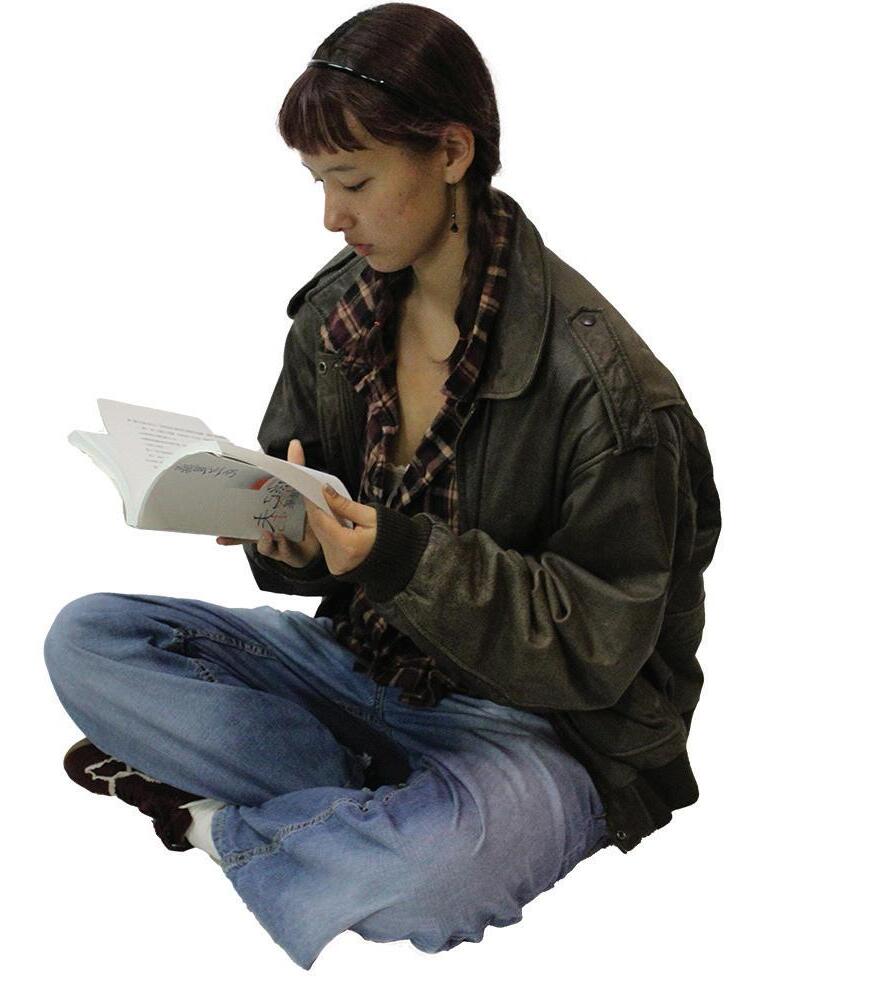

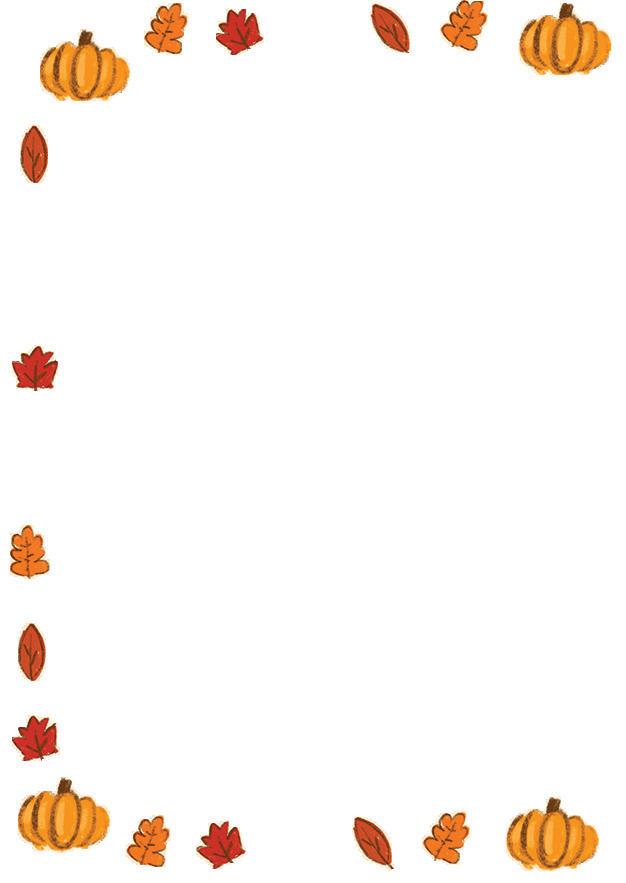

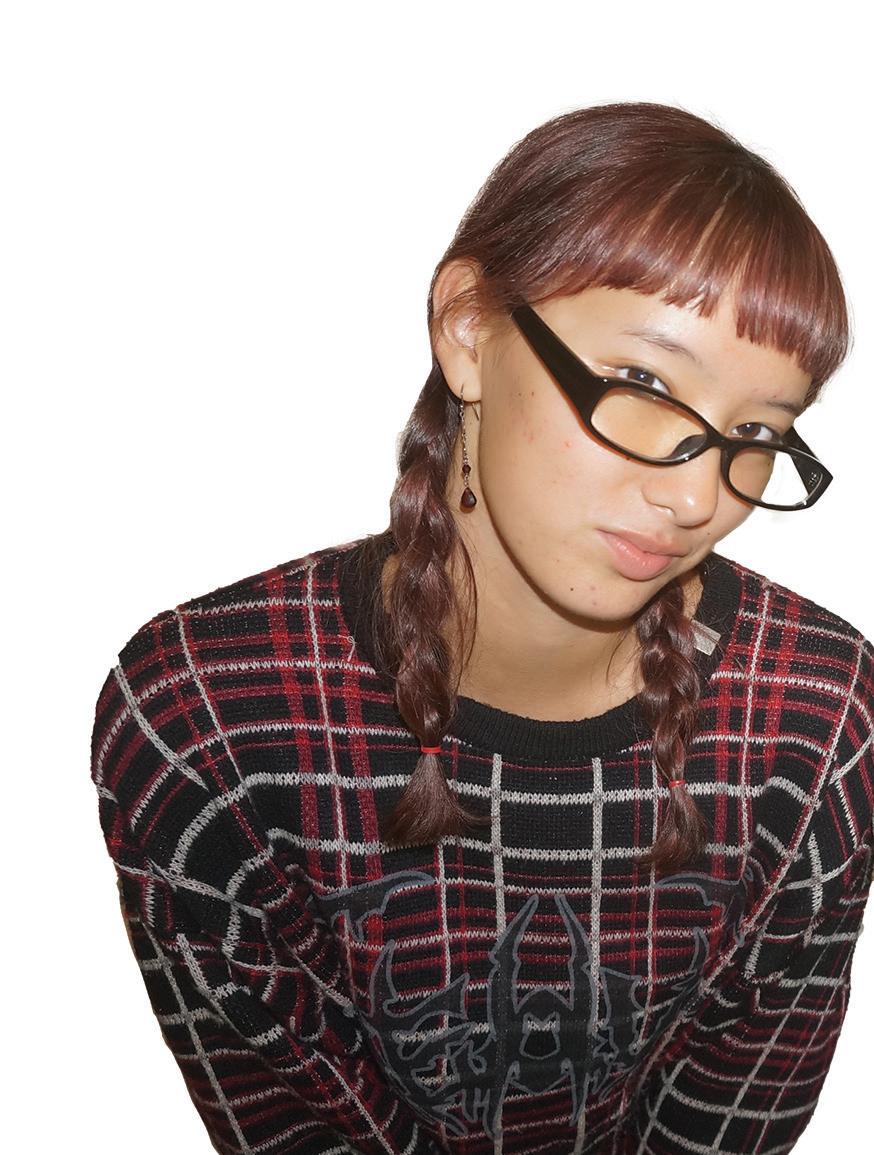


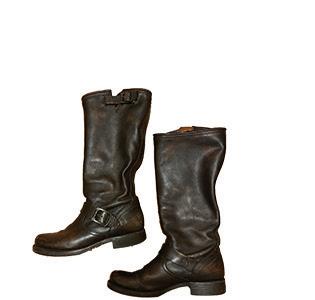

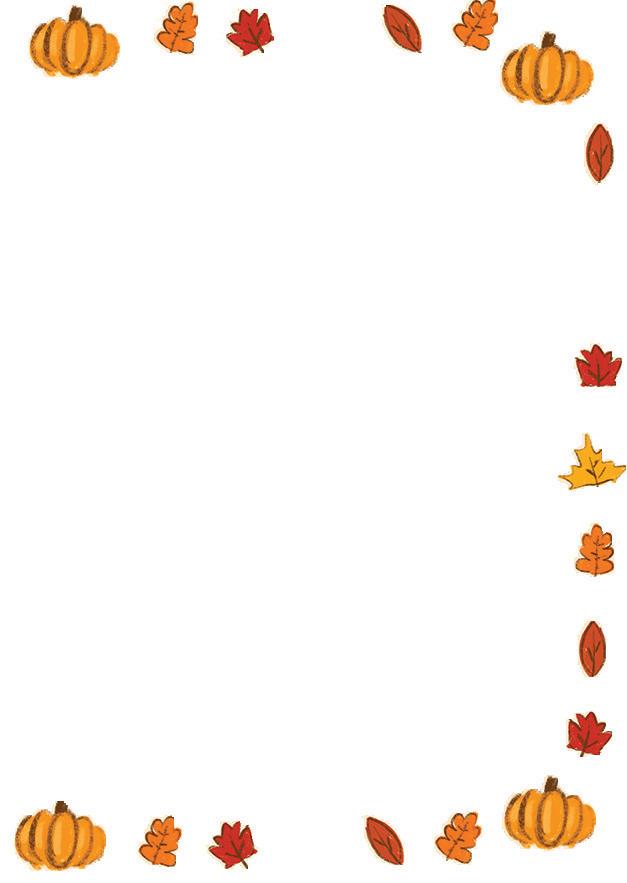

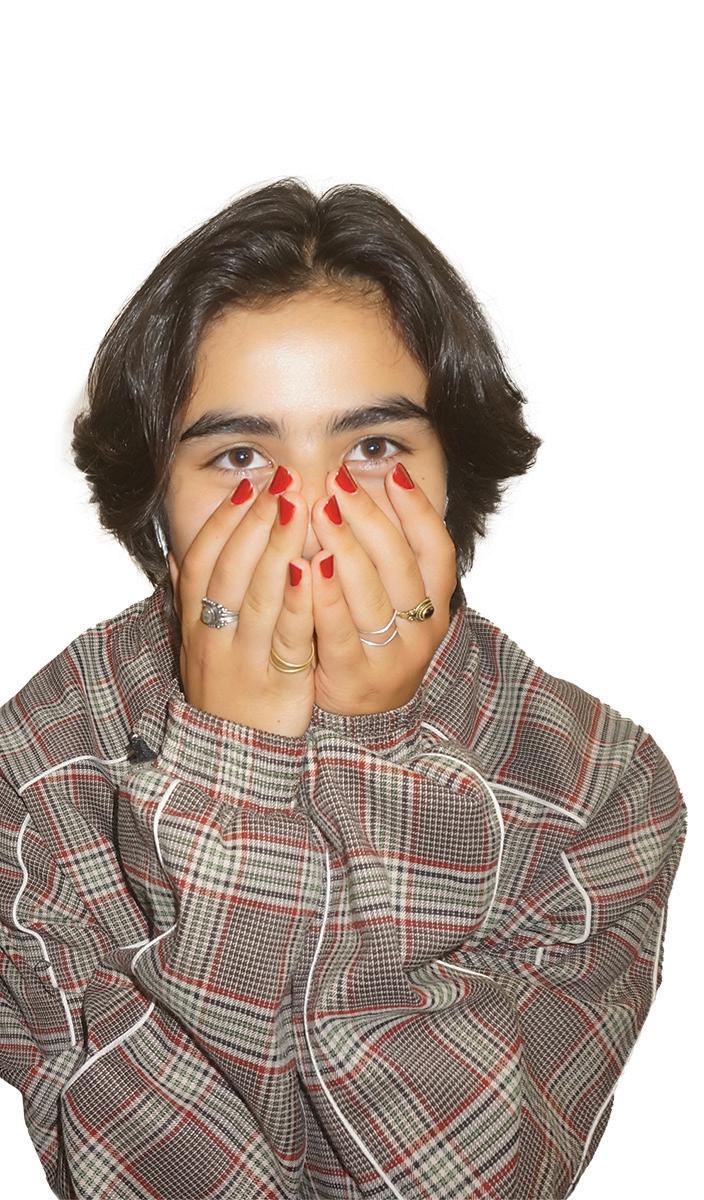
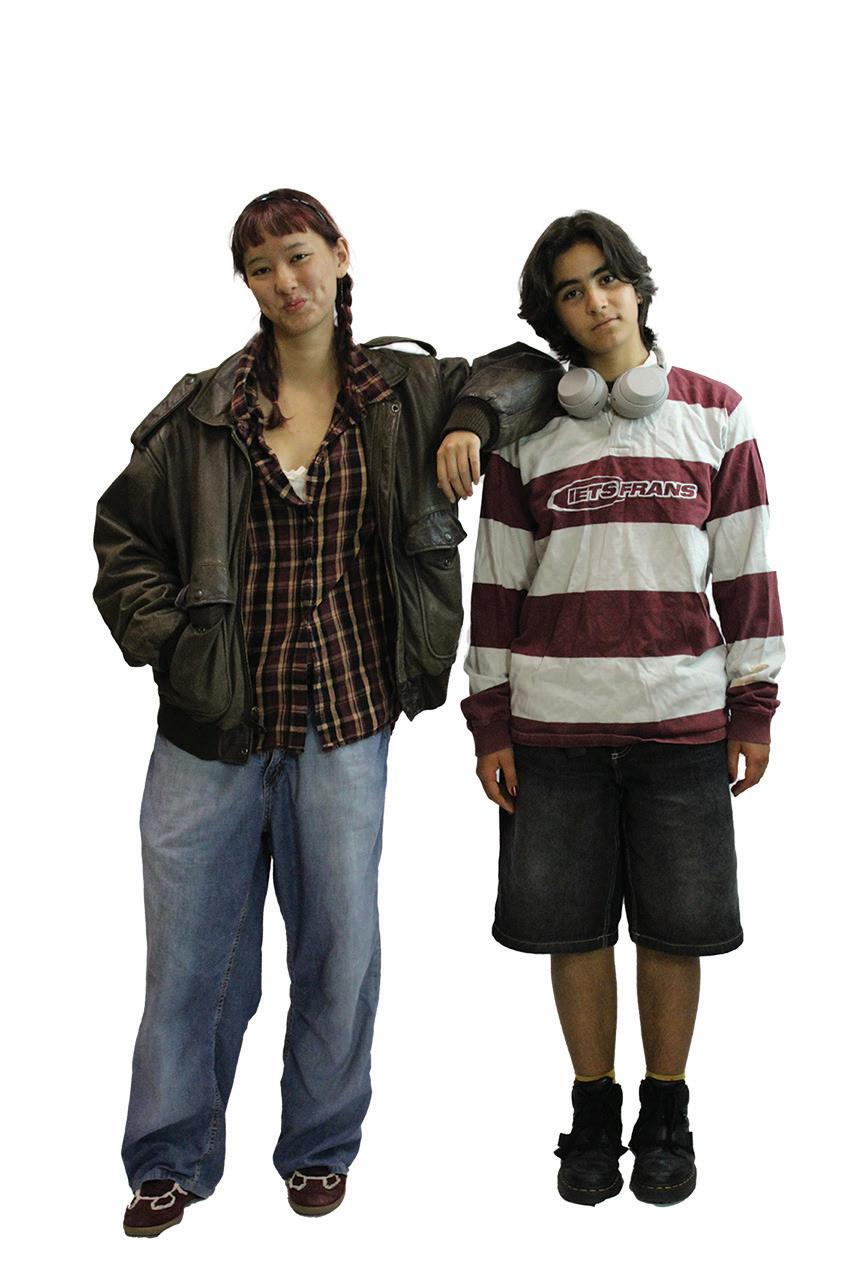
Have you tried this coffee combo?
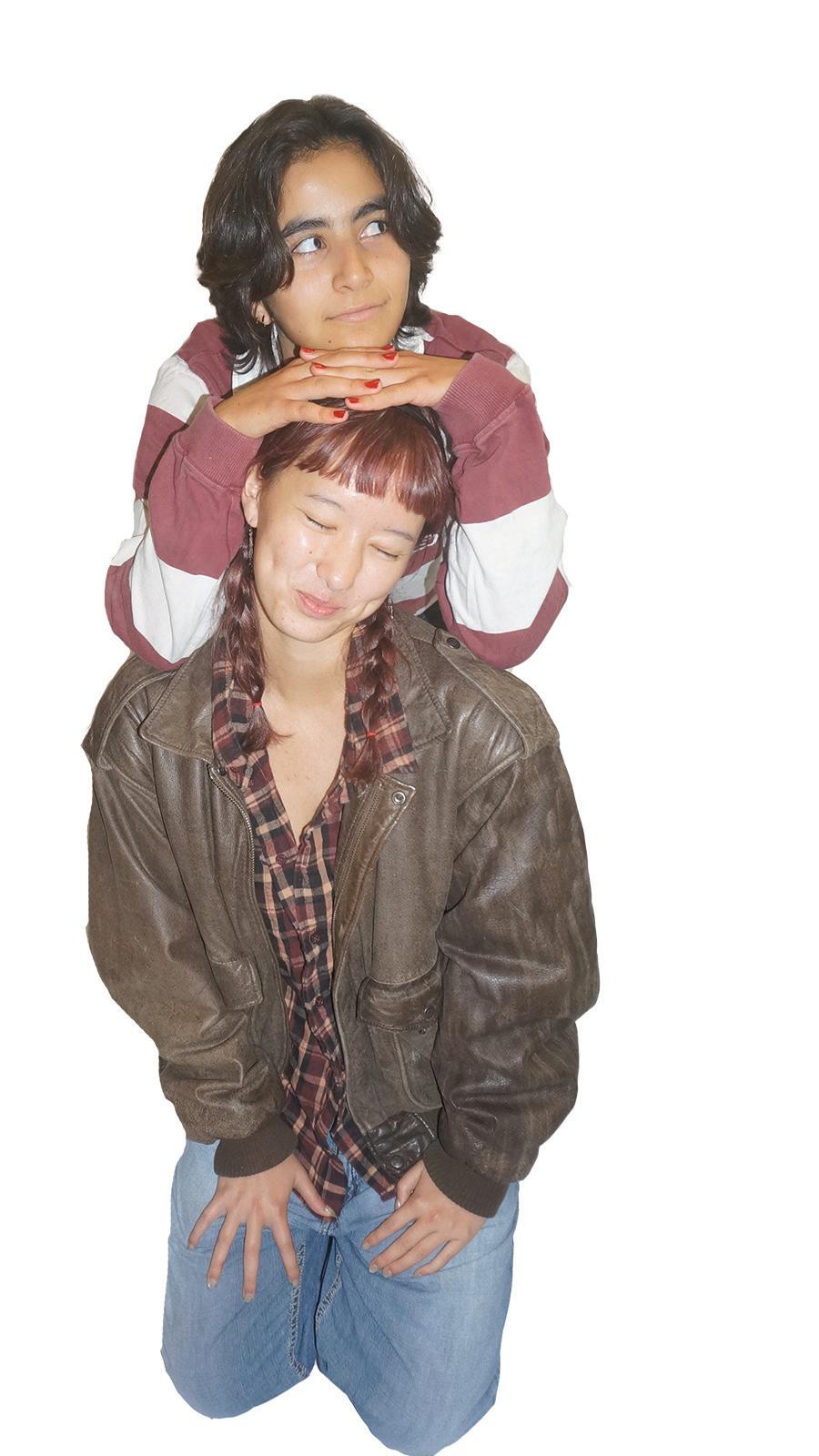
“My favorite place for coffee is Manresa Bread. I really like their monkey bread latte. I get it iced with oat milk, and it has a nice blend of spices which is perfect for the fall season.”
Tess Kim, 11
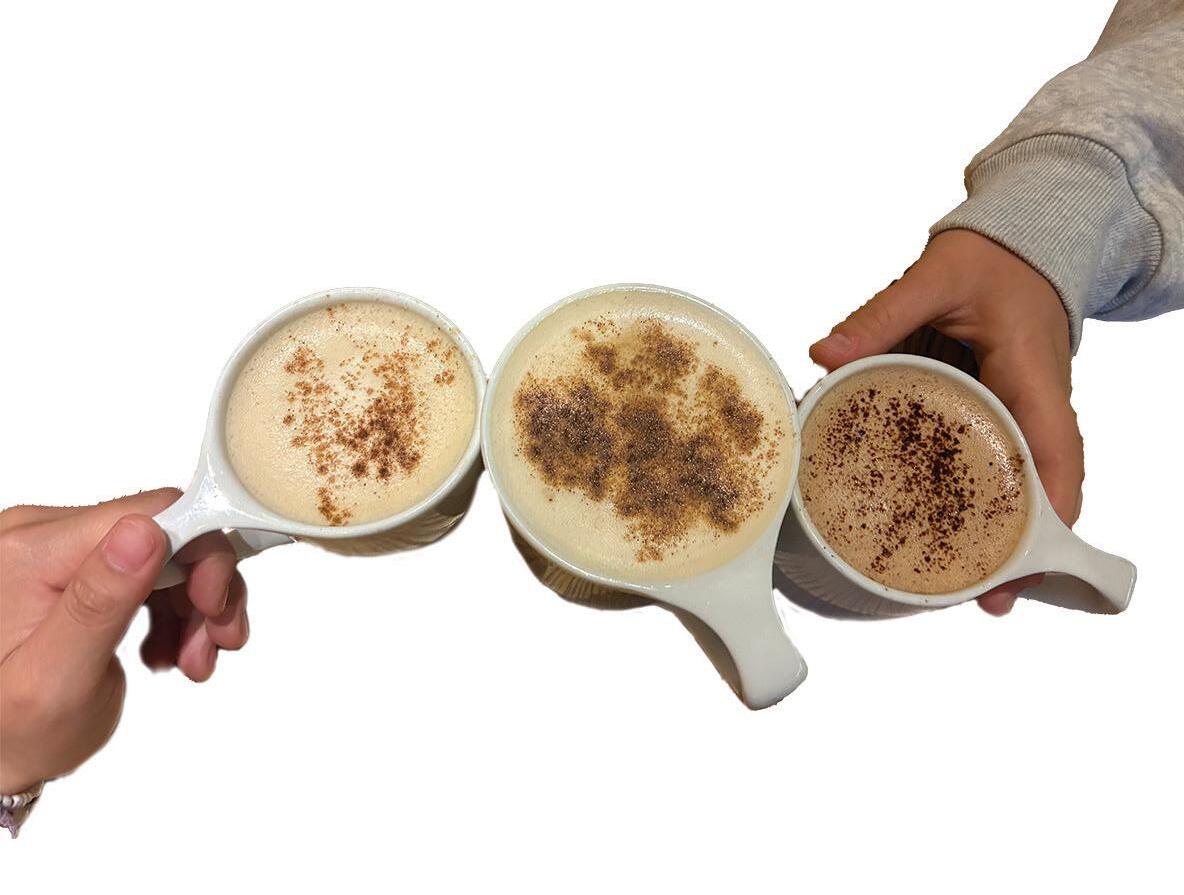



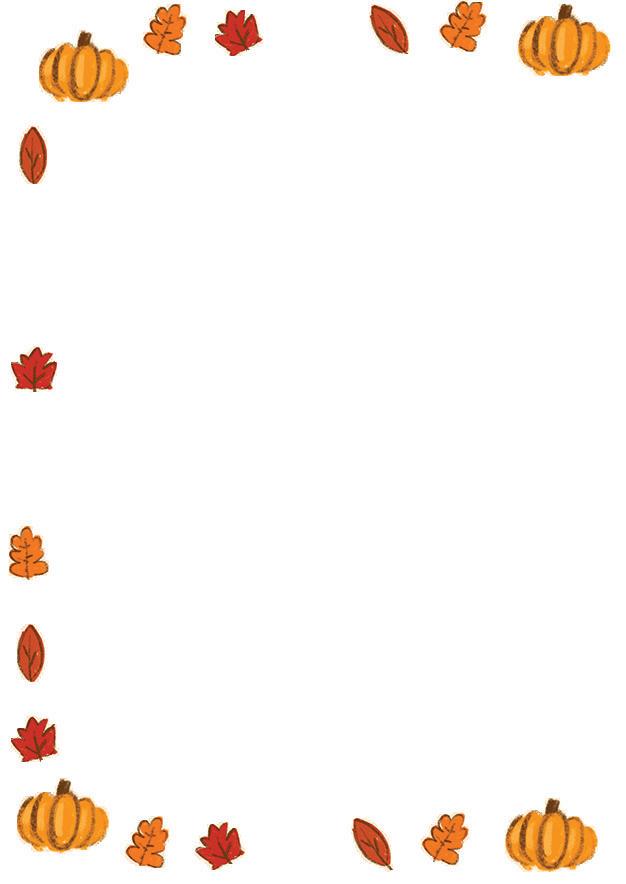







Design and photos by ESTELLE DUFOUR and STELLA GUO •
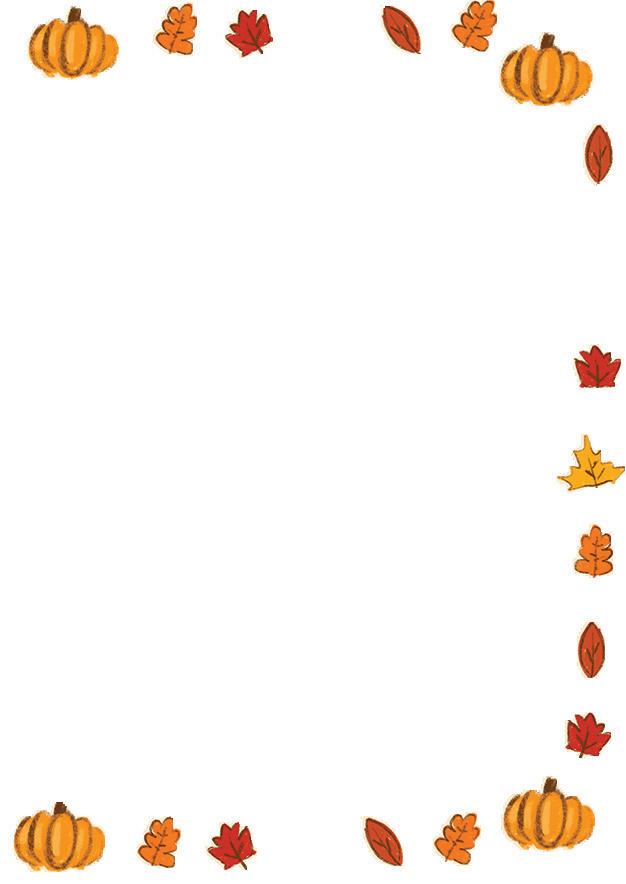
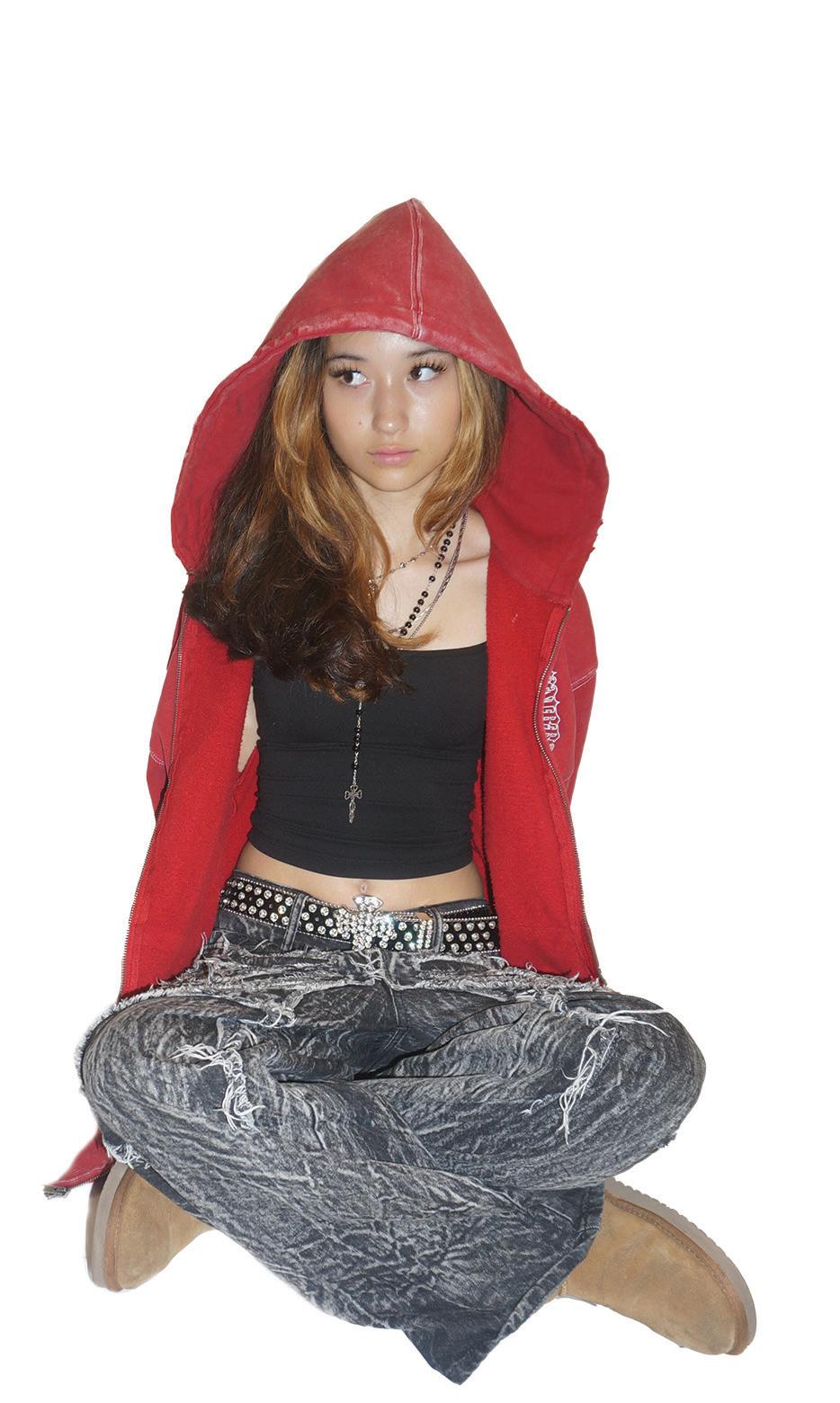
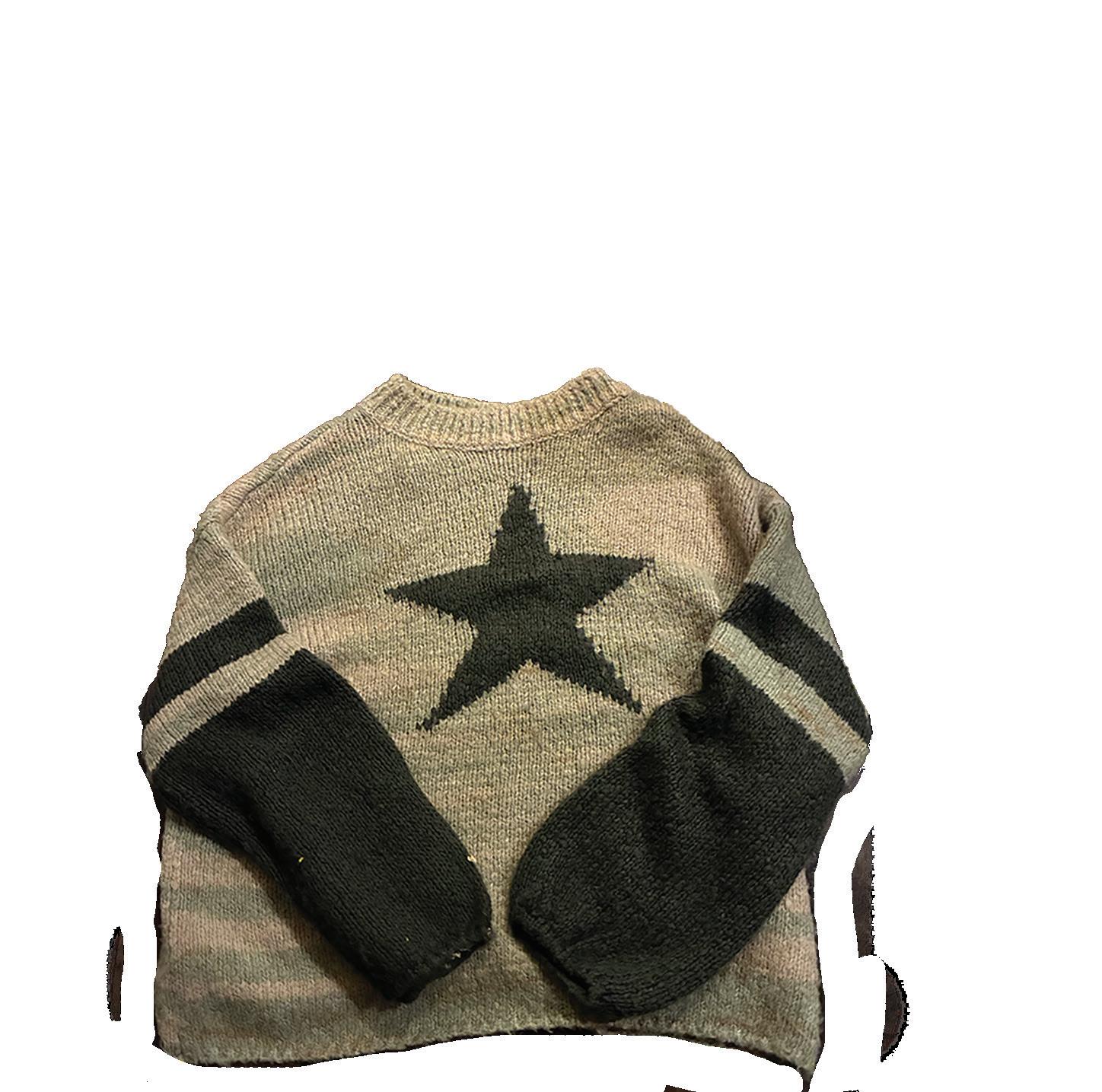


The young child giggles as they touch the lines of their grandmother’s face, telling her how pretty she is, unknowingly complimenting the part of her that she constantly tries to cover up.
The compliment “you’re beautiful” holds infinite meanings, evolving every time it leaves someone’s mouth. Beauty, as defined by the Cambridge Dictionary, is the possession of attractive quali ties that give pleasure to those around you.
However, when an adult tells a child they’re beautiful, they may not be referring to the child’s physical appearance, as they would for an adult. Instead, they could be referring to the style of their hair, their excited eyes, the brightness of their smile or their energetic spirit.
Paly students grew up on a foundation of beauty standards that continue to shape their ideals today. Junior Jaslynn Lee has noticed the way this groundwork affects the Paly community in her day-to-day life.
“Kids are introduced to conventional beauty standards from a very young age, which they use as a way to define their own self-worth,” Lee said. “They also rely on these compliments and recognition, and that really impacts how they view them selves.”
This has led to the human tendency to compare oneself with others, creating beauty standards that are continuously changing and have affected people’s ideas of self-worth for cen turies.
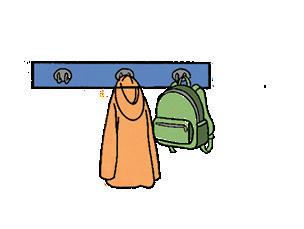
“People are trying, probably more than they did at a younger period in their life, to establish independence and an individualized sense of self,” Fingerhut said. “They ask themselves, ‘What marks me as different, and in many ways, better than those around me?’ Beauty standards are certainly one marker on which people are evaluating their self-worth.”

Even though this issue is often perceived to be skewed towards girls, it impacts people of all genders. For instance, junior Arthur Blanch has felt the pressure to conform to social norms via his style
“For every aging person who is committed to looking young, there is likely another aging person who says, ‘I’m fine, just the way I am.’”
Adam Fingerhut, Professor
Adam Fingerhut, a Loyola Marymount University psychology professor and associate dean of faculty develop ment, has spent his career studying and teaching students about human behavior.
“Beauty standards and these idealized preferences are derived naturally over the course of evolution,” Fingerhut said.


Although the definition of what is considered beautiful has morphed throughout the decades, these standards still remain a prominent part of society, especially among high school students.
“My definition of beauty is really different from older generations, just because of how much everything has changed and how much the culture has changed,” Blanch said. “There is such a big difference in what people consider beautiful now that most people have completely different beauty standards than the older generations.”
In recent years, social media has only worsened self-comparison, giving way to new insecurities that are constantly broadcasted through different platforms. Fingerhut continues to witness the shift in human comparison through his students
“It [social media] has made social comparison more prevalent in our lives,” Fingerhut said. “We’re constantly seeing representation of what’s happening around us more frequently and in a way that we haven’t in previous times in human history.”
However, the constant exposure to people’s lives through social media often shows only one side, leading to a false assumption that what they share online is their full reality.
“We compare ourselves to standards that are likely unrealistic without simultaneously confronting that those standards are human-made and therefore flawed,” Fingerhut said.
Equivalently, freshman Enzo Matsuzawa does his best to stay as true to himself as possible, yet he still feels the effects of social media on his self-image.
“Social media creates an environment

where people only see the best of the best, and it leads to a cer tain vision people have on how they should look,” Matsuzawa said. “It’s really easy to start comparing yourself to other people and pressuring yourself to look a certain way.”
Currently, the cosmetics industry is heavily fo cused on artificial products that are promoted as an easy and fast way to prevent wrinkles, dark circles and other traits deemed undesirable by society. Nonetheless, beauty standards have al ways existed in advertisements — specifically, in the beauty industry and Hollywood.
“They [beauty standards] inevitably shift and change over time, because they are cre ated by us, whether that’s through artificial means like marketing and advertising, shifting and shaping what is valued in a culture,” Fin gerhut said.
Regardless of the ever-fluctuating beauty norms, one ideal that has been stressed among countless generations is the need to stay youthful de spite the natural aging process. As of right now, younger generations are doing so through a fixation on maintaining clear skin.

more prominent in the past,” Trimbur
“I see more of people’s inner light shine through with less notice of the shell.”
Shayna Kaufmann, Clinical psychologist
“The beauty industry is obsessed with youth and myriad creams and injections that are sold to keep people looking young,” Fingerhut said. “It’s a multi-billion dollar industry that people invest in to hold on as long as they can to what is idealized in our society.”
Another unconventional norm that is projected — not only through television, but also in society itself — is the fixation on Eurocentric traits.
“There’s some interesting work [research] on the way that Afrocentric versus Eurocentric traits are perceived in the workforce, . . . showing that in a job context, Eurocentric features — things like straight hair — are preferred over different features,” Fingerhut said. “[This] puts a lot of pressure and is an unnecessary and unrealistic standard for people who exist outside of white.”
As beauty ideals are changed and personalized for each generation, senior Camille Trimbur has observed that age plays a role in how individuals perceive themselves and others.
“I do think that as a generation, we tend to think more of outward beauty instead of beauty within, which I feel was
Similarly to how Trimbur has noticed the differences between her generation’s beauty norms and the generations before her, Fingerhut has experienced a shift of his own in his age group.
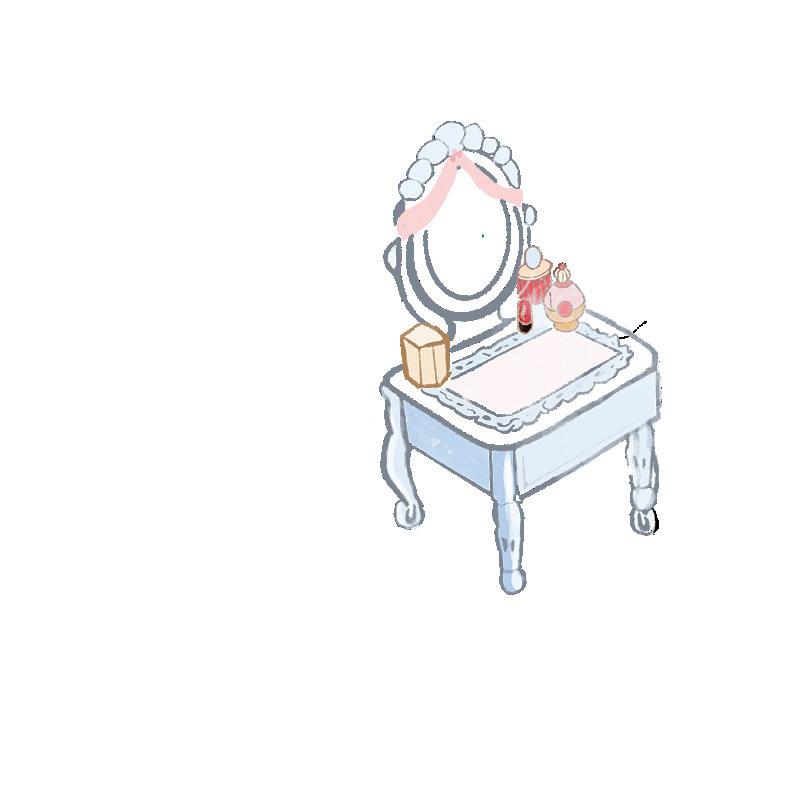
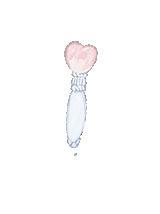
“The older you get, the less you care about other people’s perception of you and opinion of you, ” Fingerhut said. “There is less of a need for that social approval. Now, I don’t think we ever completely divorce ourselves from a need for social approval, but there is something about age and one’s understanding of themselves that makes it so that the need for approval is smaller and perhaps less
Not everyone has been able to find confidence in their natural beauty as fluidly as others, however. Fingerhut said that older generations have become more comfortable
“For every aging person who is committed to looking young, there is likely another aging person who says, ‘I’m fine, just the way I am,’” Fingerhut said.
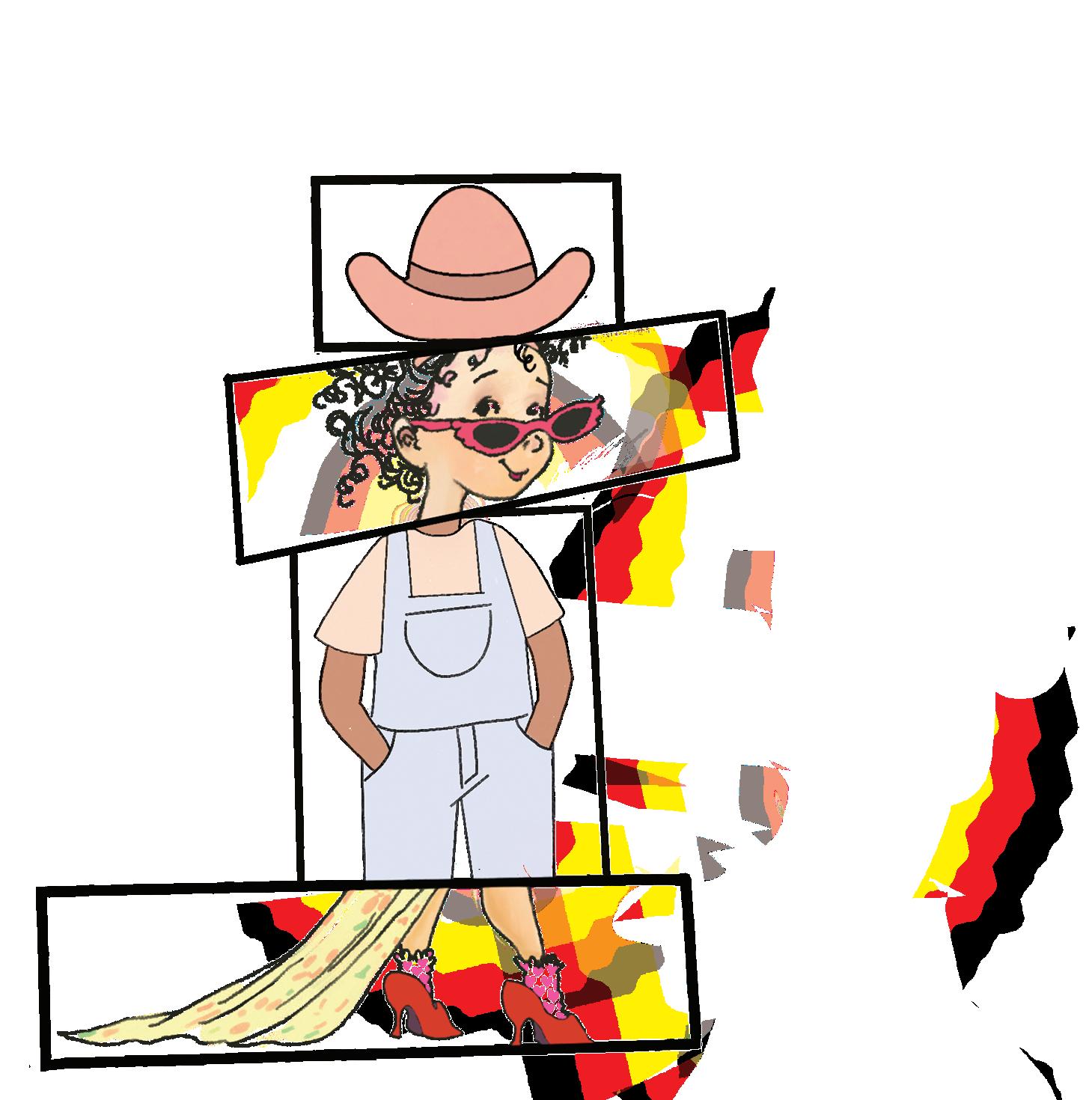
Sixty-year-old clinical psychologist Shayna Kaufmann recalls growing up in the ‘70s and feeling the pressure to fit the image she would always see in popular magazines and programs. Recently, as she has matured, she was able to detach herself from this stress. “Though I still want to look my best, it doesn’t matter as much,” Kaufmann said. “I probably leave the house more frequently without makeup on than with makeup on, and I don’t feel any less attractive.”
As Kaufmann has developed emotionally, her appreciation for the natural beauty of the world has also increased.
“With every decade that I aged, my appreciation of beauty took a different form,” Kaufmann said. “I see more of people’s inner light shine through with less notice of the shell. I no longer see unkind people as beautiful, as their inner self makes the outside so much less appealing.”
Gunn High School sophomore Sophie Winkler-Hahns’ definition of beauty is less focused on the conventional standard and rather on the bigger picture. While for some it may take their whole life to come to accept themselves, Winkler-Hahn has been able to step outside of the ideals for her age group, finding beauty in her surroundings.
“Someone can be beautiful because of how they treat others, not just how they look,” Winkler-Hahn said. “When I was younger, I thought beauty was all about looks, but now I see it’s also about how someone makes you feel.”
Text and design by BAHAR DINER and ELLA RENAZCO-SPERLING • Art by ELLA RENAZCO-SPERLING and BAHAR DINER



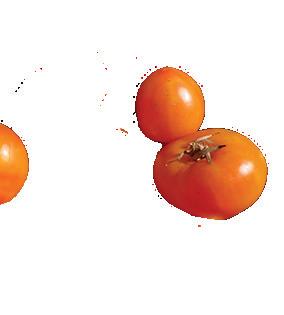
Come with us as we make the last salad of the summer

it was a quiet Sunday morning, but we — Alice and Amalia — were not sleeping in. Instead, in early September, we tapped into an old vein: making food with only goods from the farmers market.
Every weekend, sellers bring their best products to California Avenue and serve the flurry of buyers who show up. Anything from jewelry to bouquets to cheesecake to peaches is up for sale at the Palo Alto gem.
Being seasoned professionals, having done this many times, we confidently strolled into the market with one goal in mind: to craft the best tomato salad.
Our first stop of the day was a small vegetable vendor, where


we searched for the base of our dish. After scanning the pile of ripe fruits, we settled on a plump, juicy and orange heirloom tomato, right from the top of the pile.
Of course, no tomato salad is complete without a specific herb: basil. Our quest for basil led us several stops down the road to a second vegetable vendor. Here, we aimed for the smallest bunch to ensure we didn’t have many leftovers.
To wrap up our day, we went on a hunt for balsamic vinegar. Eventually, we stumbled upon an oil and vinegar vendor, where we purchased a rich, purple, aged balsamic.
When we returned home, we designated roles. Amalia focused on slicing, and Alice focused on photography. Midway through, we swapped, with Alice dicing up the basil and funneling a hearty pour of balsamic vinegar onto the basil-covered tomatoes.
And, voila. Though simpler than our previous endeavor’s result, which can be found on our Instagram and website, we found this dish just as pleasing to devour. From the juice dribbling off each slab of tomato to the slight tang of the vinegar, each and every part of this dish contributed to its perfection.
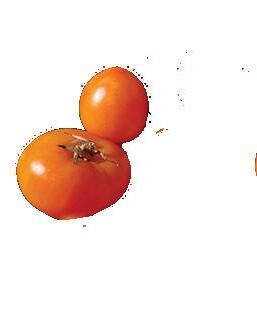




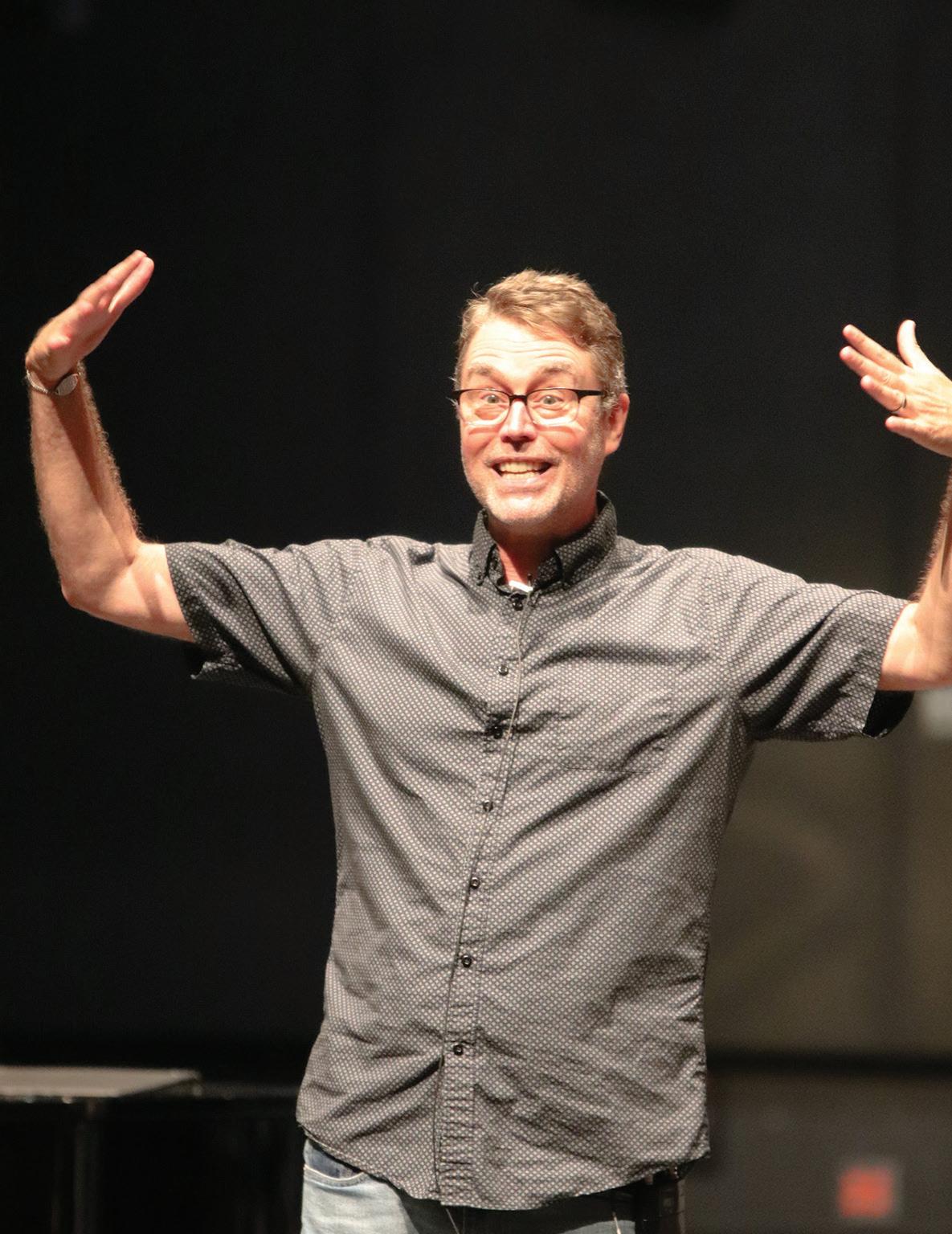
Deke Sharon, the “father of contemporary a capella,” came to Palo Alto High School on Sept. 25 to host a master class for the Paly choir. Students had the opportunity to learn from him and practice their talents.
“Music is about passion and fun and connection and energy and taking risks,” Sharon said.





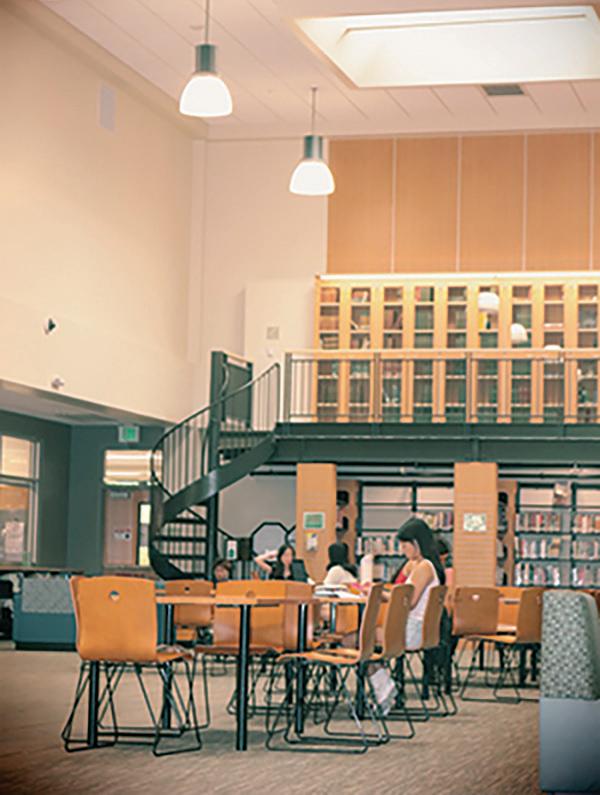


It’s finally autumn. Pumpkins are getting restocked at Trader Joe’s. Coffee shops are finally releasing their long-awaited pumpkin chai and seasonal lattes. Junior Amy Lei expresses her affinity about the fall season.
“After the past few years, I’ve started to find comfort in this sea son,” Lei said. “Despite my complaints about returning to school after summer, I’ll always love visiting Town and Country with my friends and stepping on the crunchy leaves.”

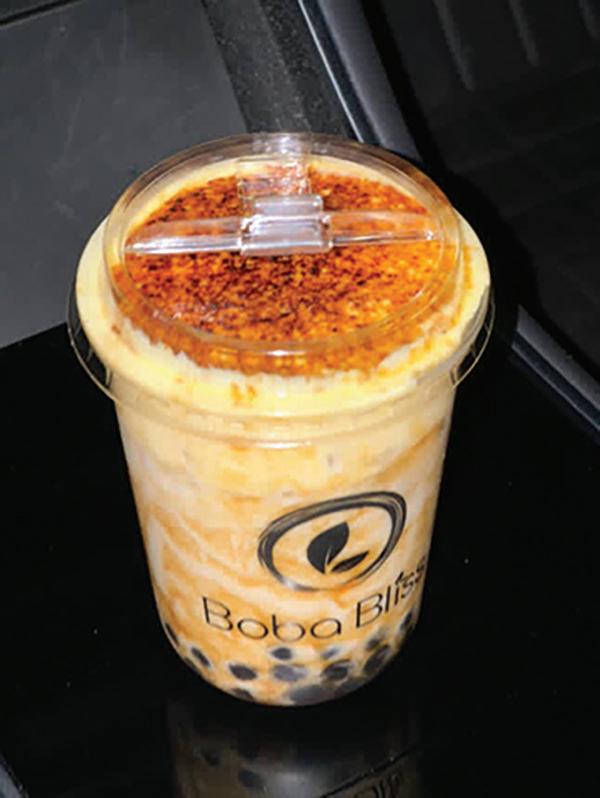



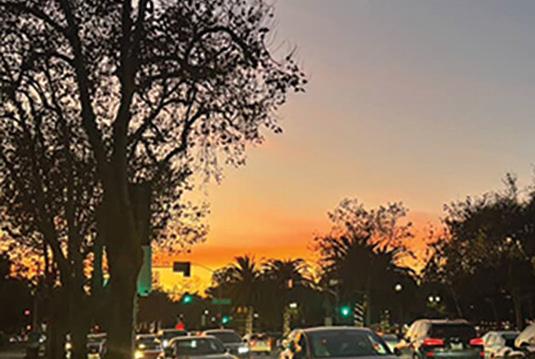
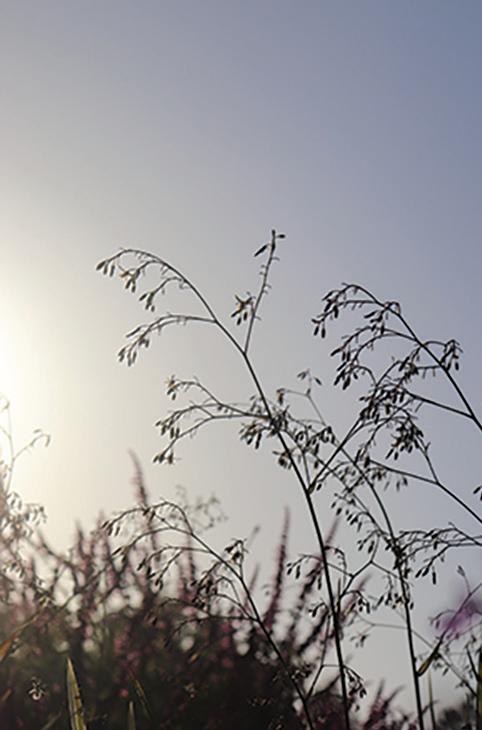

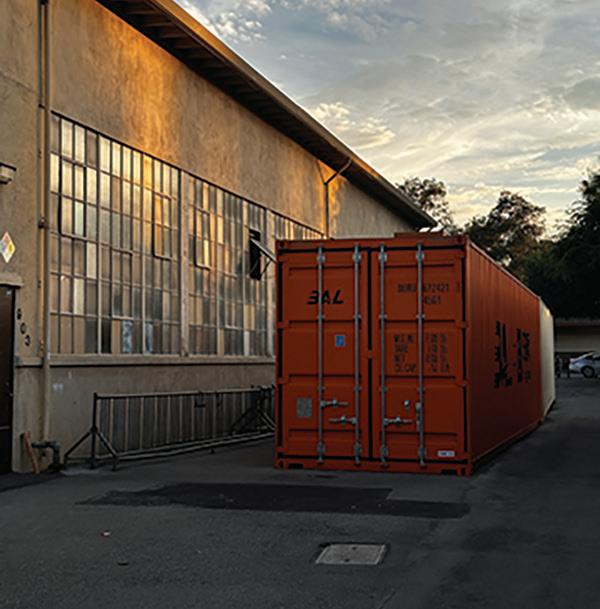

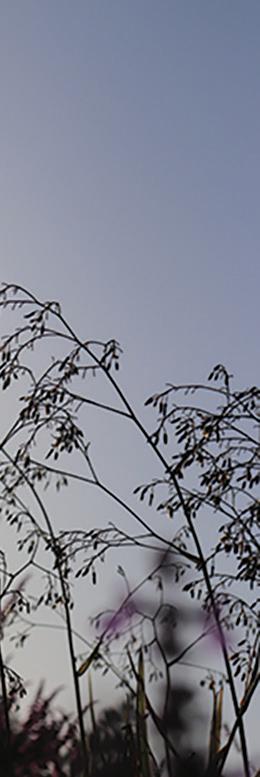



he auto shop revives after a long summer break, slowly filling up with students and diligent engineers learning about how to fix, change the engine components and refill the break fluid of a car. Junior Meghana Konduri has continued taking Paly’s automotive class since sophomore year. For her, being back in auto during the fall is refreshing.
“After all the work thrown at me throughout the school day, going to auto is like a breath of fresh air,” Konduri said. “Especially as the temperature drops and a slight breeze begins to blow, auto becomes less sweaty and more calm. Getting to get my hands dirty and fix cars while laughing with friends is the best break I could ask for.”
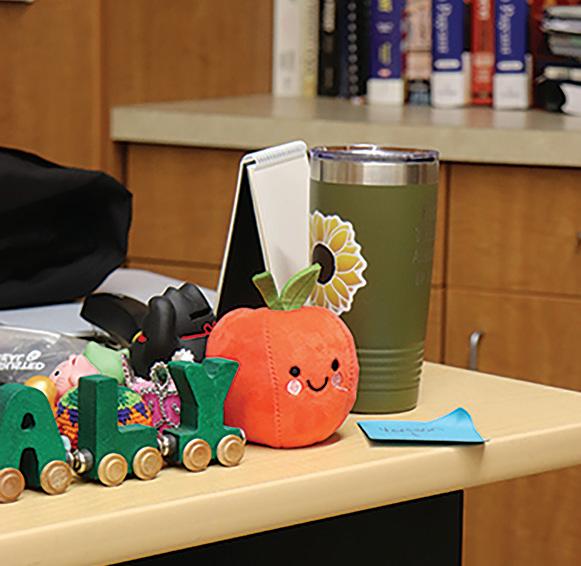
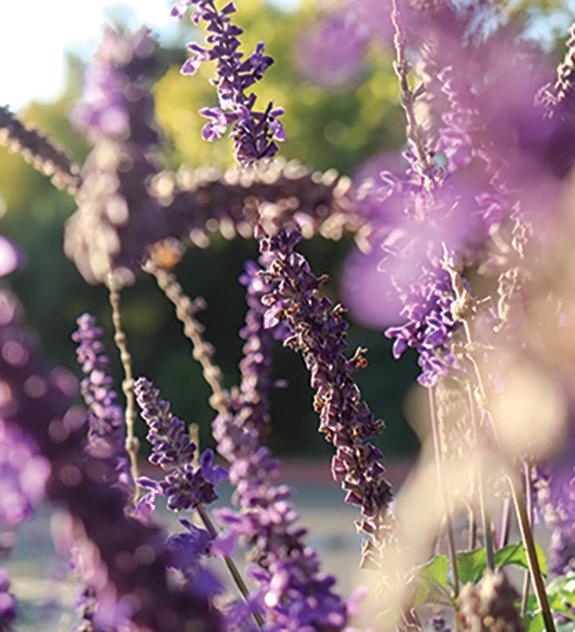

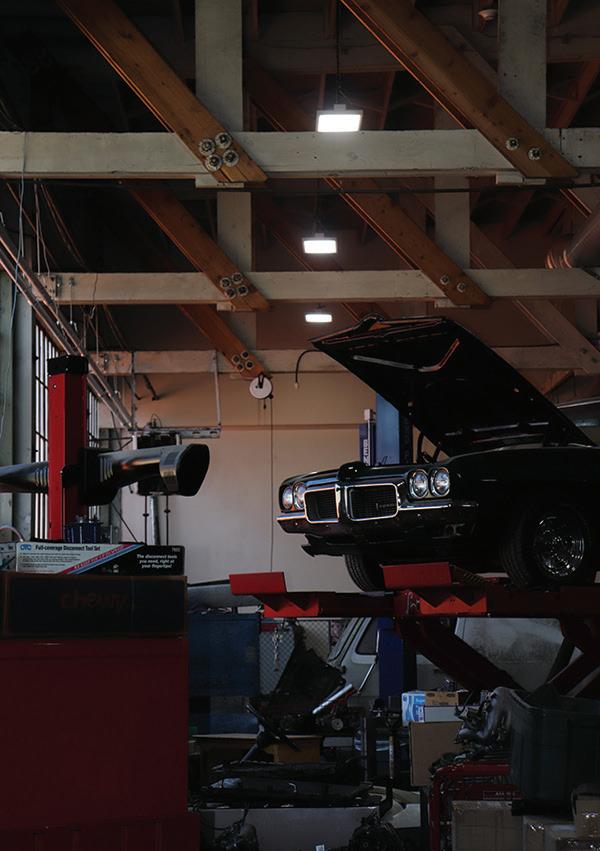
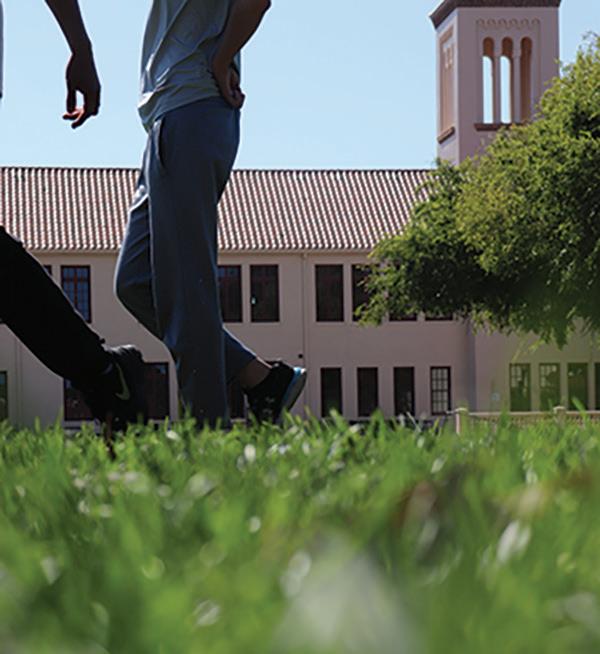




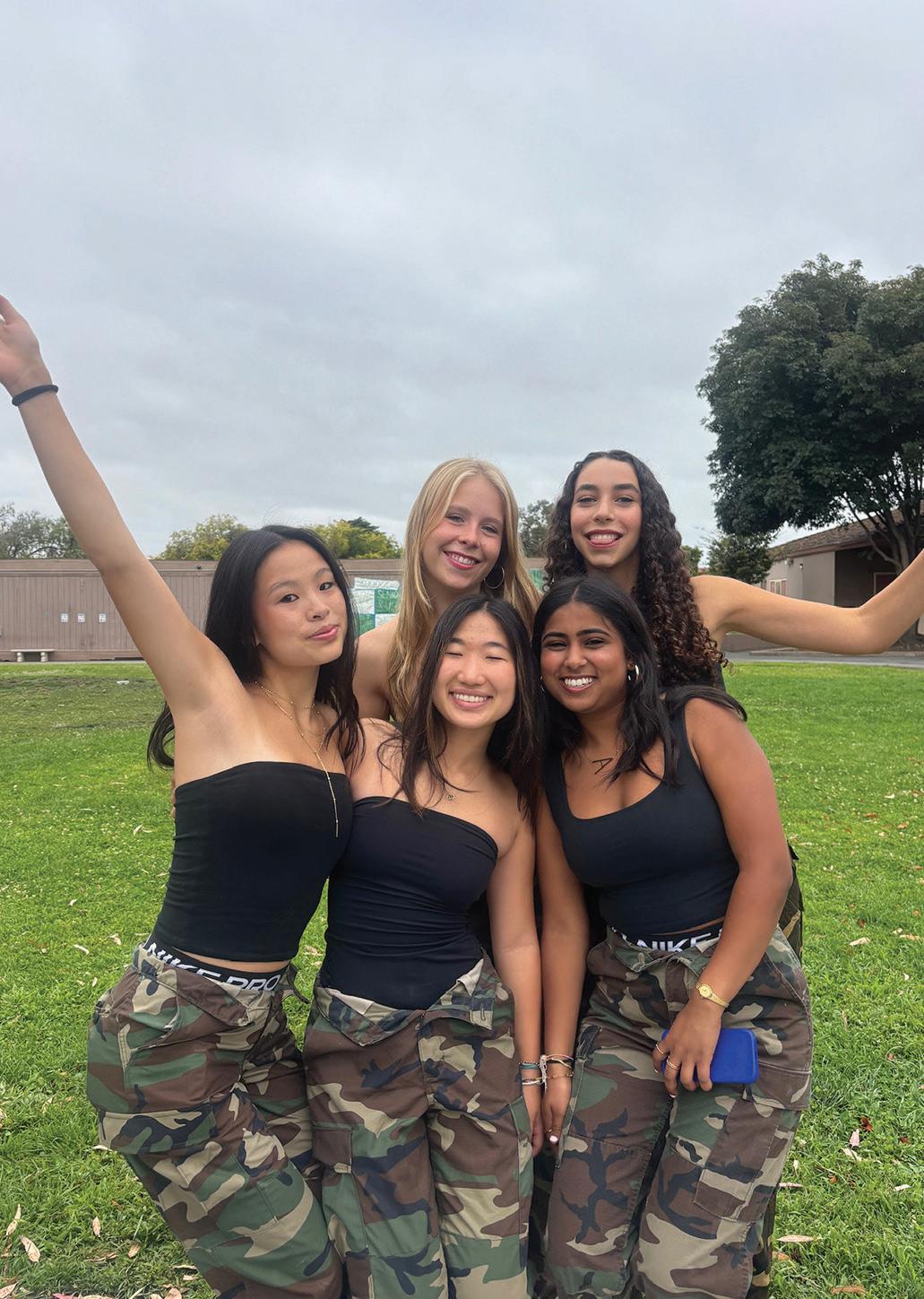




“I really like the spirit and activities that come with senior year...decorating cars, camo, spending time with my friends.” Arabella Guinle, 12

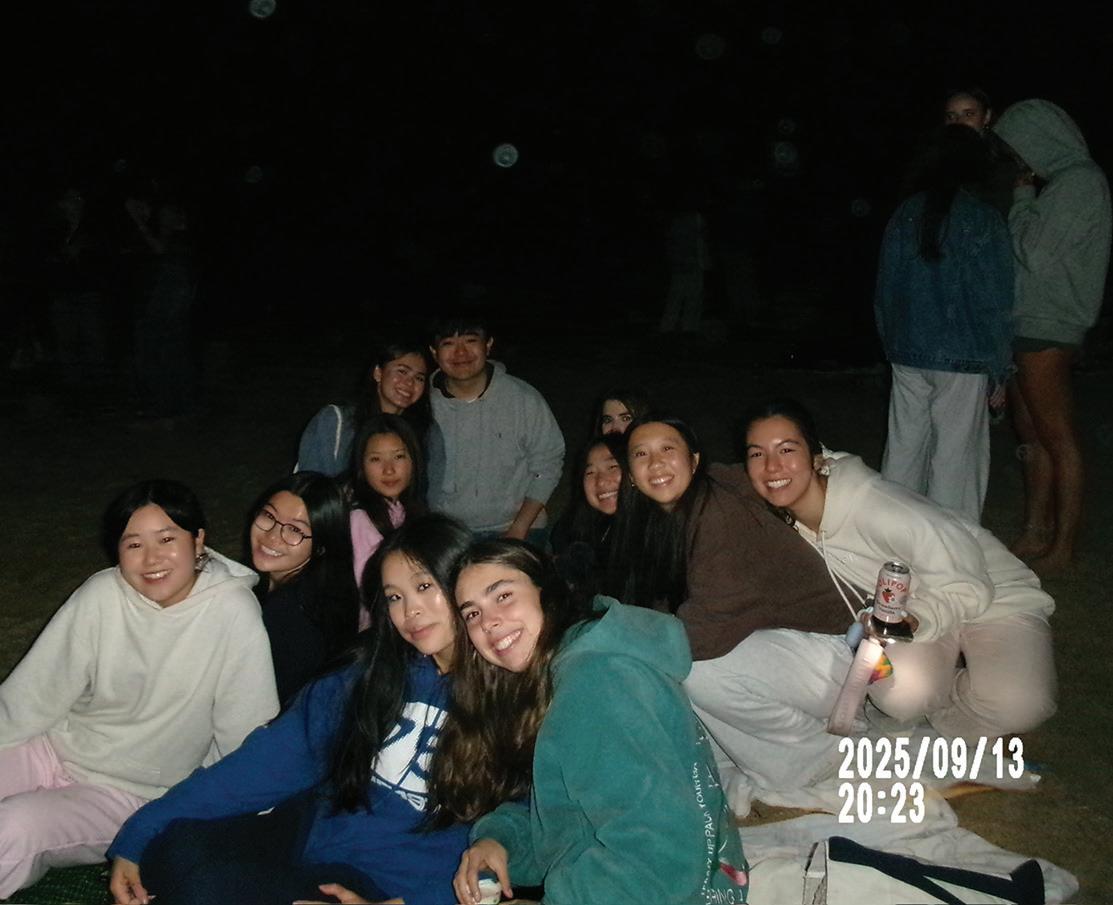

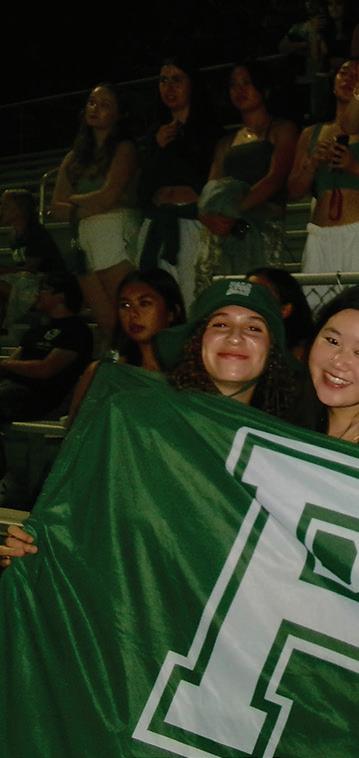







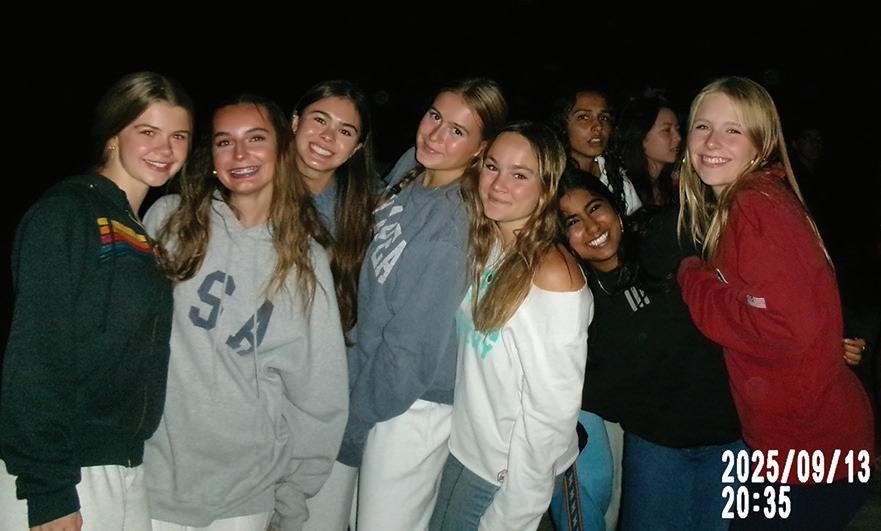

“My favorite part of senior year is spending time with everyone before I leave for college.” Natalya Kaposhilin, 12








Through their use of clashing themes, Wu creates evocative and novel art
set of teeth gnawing on raw meat, hands contorted around a stomach, a floral bouquet bursting out of a fish’s mouth: all of these are scenes of Paly senior River Wu’s art, intended to be unconventional and unsettling.
Wu — whose work has now been featured in several public exhibitions — began their artistic journey just like everyone else, by putting a pencil to paper as an elementary school student and starting to draw. In the years since, Wu has kept up their drawing routine, which has since morphed into one of the most important aspects of their life.
Wu said their initial sketches were less experimental and more traditional — a factor that underwent a stark shift during the pandemic.
“I wanted to develop my skill more during COVID and experiment with style,”

Wu said. “It was able to [since] I had more time.”
Today, Wu considers their art to be intimately personal and far more emotional; in fact, according to Wu, evoking emotion through art is one of their primary goals.
“Anything I encounter in life, whether it’s my personal life or something I read that gets a reaction out of me, I try to translate into a drawing or piece of art,” Wu said.



“I instinctively go for gore since it can make a big impression, and I want to do that with my art.”
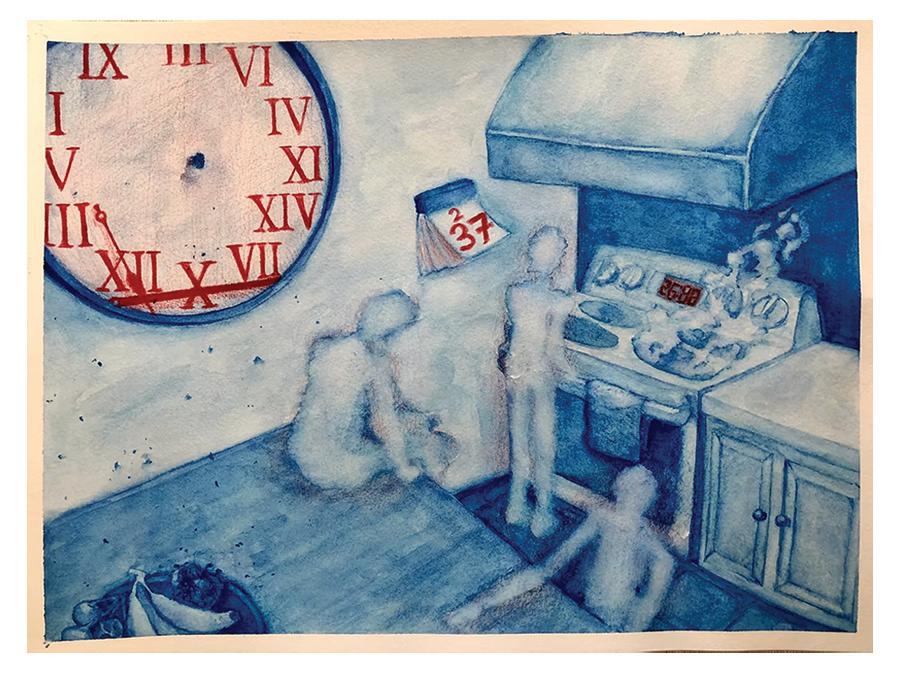
Wu’s pieces range in style, color palette and depth: Oil paintings, three-dimensional sculptures, pastel sketches and logo designs are all heavily represented in their portfolio. However, despite the variety of work they have done and the many years they have spent honing their skills, Wu still hears feedback regularly, includ ing that which is negative. Instead of getting deterred by critiques, Wu often leverages others’ words for their own artistic development.
“I appreciate hearing people’s reactions when my art is exhib ited,” Wu said. “Feedback helps improve my work and plan what to create in the future.”
Wu’s art often captures provocative, violent scenes of the hu man body, such as mouths tearing into red meat and the innards of a body vividly exposed. However, they are careful to maintain a balance when incorporating these intense visual elements.
“I instinctively go for gore since it can make a big impression, and I want to do that with my art,” Wu said. “The visceral nature of gore can disturb the viewer and bring attention to the message behind a [piece]. [But,] it can easily be overdone or have a flat meaning behind it. I try to be more aware of that line and not cross it.”
Along with the response gore elicits, Wu uses extreme imagery to convey a deeper message. Upon first glance, one of Wu’s pieces shows metal cutlery poking at exposed ribs, which is, at a first glance, a commentary on dining or consumption. However, the intended interpretation is loaded with far more meaning.


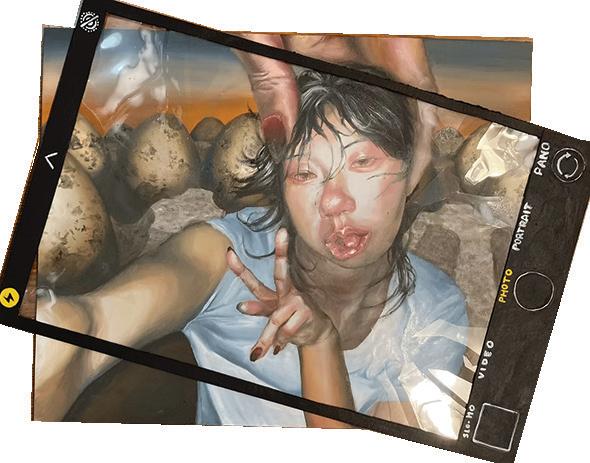
“Flash” - Mixed media

has not swayed Wu’s intent to pursue a career in the arts. In fact, to continue their artistic jour ney, Wu is applying for admis sion to numerous art schools across the country, aiming to continue their jour ney wherever it takes them.
“[Besides] applying to art schools, I don’t really have a clear idea of what I want to do,” Wu said. “But I definitely want to continue creating art in my future.”

“The idea behind the piece was that we all meet the same end — death — and how death consumes everything,” Wu said. “We are usually powerless against the force of inevitable loss. It puts the viewer in the position of prey, and the formal quality of the cutlery is meant to add emotional distance, as death is indifferent.”
“I’ve grown to accept the rougher parts of the process. Perfection isn’t real, so I don’t need to keep chasing it.”
Wu’s ability to tackle heavy themes comes from years of practice and familiarity with their own process as an artist. In fact, in their journey, they have learned to trust their own process and focus less on what others may deem to be ideal.
For burgeoning artists or those who are hesitant to pursue art, Wu said they should take the leap — after all, in Wu’s eyes, the barriers to entering the discipline are not as steep as most individuals believe.
“Materials seem expensive, but often are not [expensive] at all,” Wu. “There are free tutorials online, and you can start with anything, even just a pencil you found on the ground. It only takes the courage to start.”

“I’ve become more confident in trusting my instincts of what to do in the process of planning and working on a piece,” Wu said. “I’ve grown to accept the rougher parts of the process. Per fection isn’t real, so I don’t need to keep chasing it.”

Yet, as limitless as Wu sees their own future, they said the po tential of creative spaces is being minimized by the grow ing presence of artificial intelligence (AI) in the art industry. As AI’s presence increases, the options for artists shift dramatically.
“There’s a panic in creative spaces because of AI in the visual arts, but also in the per forming arts with the SAG-AFTRA strike,” Wu said. “It will be difficult for artists to stay in
Wu’s views on AI extend to the creative pro cess itself, where Wu argues that authenticity is a result of human error and mistakes; keeping a piece “human-made” is integral to the field of
“The value [of the creative process of art] lies in the details and imperfections because humans naturally leave imperfections,” Wu said. “It feels intentional or part of it, while the AI imperfections look out of place in too obvious places.”
However, despite the risks Wu believes it presents, the rise of AI


“Trust





Sony Pictures Animations, once an underdog studio, has pushed the animation industry forward
Acityscape brims with electric colors as Spider-Man leaps through dimensions. A vampire hotelier manages a resort for monsters of myths and legends. A dysfunctional family flees an army of rogue robots. Amid The Walt Disney Company revitalizing their studio, the establishment of DreamWorks and Warner Brothers testing the waters with “Space Jam,” Sony Pictures Animations quietly stepped into the ring.
Their first feature film “Open Season” was released in 2006, followed by eight films which received mixed reviews and audience receptions. According to Tom Sito, a professor of cinematic arts at the University of South California who has animated for Disney classic films such as “The Little Mermaid”, “Beauty & The Beast”, “Aladdin” and “The Lion King”, Sony Pictures Animations took time to find its distinct identity.
“The Sony corporation basically bought Warner Bros., TriStar Pictures,
Columbia Pictures, Screen Gems and United Artists and mushed them together, but it didn’t really have an identity,” Sito said. “They were making pictures, but a lot of it depended on the director and the individual project. … Then they hit it big with ‘Spider-Man: Into the Spider-Verse.’ That’s when they finally started to really found themselves and said, ‘This is who we are.’”
Sony’s “Spider-Man: Into the Spider-Verse” was a tremendous success; alongside its sequel film “Spider-Man: Across the Spider-Verse,” they totaled over $1 billion worldwide in box office earnings.

to another. Spider-Verse films proved that you can combine 2D and 3D [three-dimensional] together.”
However, immersive narratives are essential for a film’s success. To senior and animator Teresa Wang, technology serves to support storytelling.
“We’ve definitely seen from recent animated works that 3D animation technology can be manipulated to have all kinds of textures and colors, much different from the smooth textures of older 3D animated films like ‘Frozen’ or ‘Toy Story,’” Wang said.
“They’re trusting artists to actually visualize ideas that they want to put out there.”
Not only did the Spider-Verse films hone in on meshing together different visual dimensions, but they also recreated the dynamic experience of reading a comic book. Mario Menjivar — an instructor at the School of Visual Arts with animation experience under Disney and Warner Bros. on films such as “The Lion King”, “Pocahontas”, “Mulan”, “Hercules” and “Tarzan” — said that these commercial successes paved the way for an innovative style of animation without restrictions.
“Ultimately, the heart of the story should always be the most memorable thing. If the most you can say about a film is that it ‘looks good,’ there’s probably not much substance to it.”
The thought and intention Spider-Verse films place in seamlessly blending 2D and 3D animation is also seen in worldbuilding, which connects with viewers like junior Samanvika Senthil Kumar.
“I remember when we were working on 2D [two-dimensional] animation at the Disney studio, and then the success of ‘Toy Story’ came in,” Menjivar said. “A lot of the [animation] students decided that they just wanted to do CG [computer graphics] and stopped working on 2D. It was just one extreme
“What keeps audiences interested is the level of detail Sony animators and writers put into their movies,” Senthil Kumar said. “For example, every time I watch the Spider-Verse movies, I notice a new level of complexity that enhances the storytelling, which is what makes it so fun to watch over and over again.”
In an age of remakes and sequels, the unique stories and diverse characters keep audiences engaged.
“Sony animation films resonate with a lot of people because the characters are very well built, which makes it more interesting to watch them and even more relatable,” Senthil Kumar said. “A character that really resonated with me is Miles Morales from the Spider-Verse movies. … Usually the Spider-Man movies were just Peter Parker out here saving all these people. Miles brought an entire new side of Spider-Man out. It shows different cultures, different ways of growing up and just different difficulties that everyone faces in general.”
day in college studying animation, to start telling stories about different things, about things that studios would not dare to cover.”
If future generations were to take more creative risks in animation, they would be well-equipped. Technology has made it easier for audiences to experiment with the animation quality large studios are known for.
“Sony films are universal and reach out to any person, regardless of their age or what kind of movies they like.”
Sony Pictures Animations began consistently blending universal themes and original con cepts with the “Hotel Tran sylvania” series in 2012. This later evolved into the production of advanced, strong films like those of the Spider-Verse. The unexpected premises of Sony’s films like “K-Pop Demon Hunters” allows them to stand out in a market of remakes and sequels.
Samanvika Senthil Kumar, 11
“Now, in a laptop, you can have your own studio,” Menjivar said.
“All you have to do is buy an animation program. You can do your animation, your editing, your cleanup, your color, sound, everything.
The movie ‘Flow’ is a great example of that.
We’re the ones who come up with the ideas. We’re the creators,’” Menjivar said. “That’s the power that this generation has. They can be the ones who create stories out there that no one has seen.”
Just as this generation of artists is redefining where they belong in the industry, Sony Pictures Animation has cemented its own place in the film world by making animation accessible to a broader audience.
“Sony Pictures Animation movies fit into the entire film industry, rather than just the animation industry because of how much they attract audiences,” Senthil Kumar said. “They are universal and reach out to any person, regardless of their age or what kind of movies they like.”
“As a human species, we’re always look ing to be inspired by seeing different things in life, and animation is no different,” Men jivar said. “The writing of ‘K-Pop Demon Hunters’ just showed so much respect to the audience. That’s why it was so suc cessful. Sony gives the audience something different and respects the audience at the same time with good stories, making sure it’s worth the while for them to sit there for an hour and 15 minutes, and they get something out of it.”
Together, artists’ strong influence and Sony Pictures Animation’s leadership builds a culture that encourages them to take risks that make these films possible.
“Sony allows the filmmakers to express themselves,” Menjivar said. “They’re trust ing artists to actually visualize ideas that they want to put out there, which led to these really cool visuals with Spider-Verse films that changed the game.”
Menjivar hopes that Sony Pictures Ani mation’s fearlessness can inspire the young er generation of animators.
“Here in the United States, we have to not be afraid of making films for every one,” Menjivar said. “If Sony keeps doing this, they might be the studio to allow other young animators, even the kids who are to
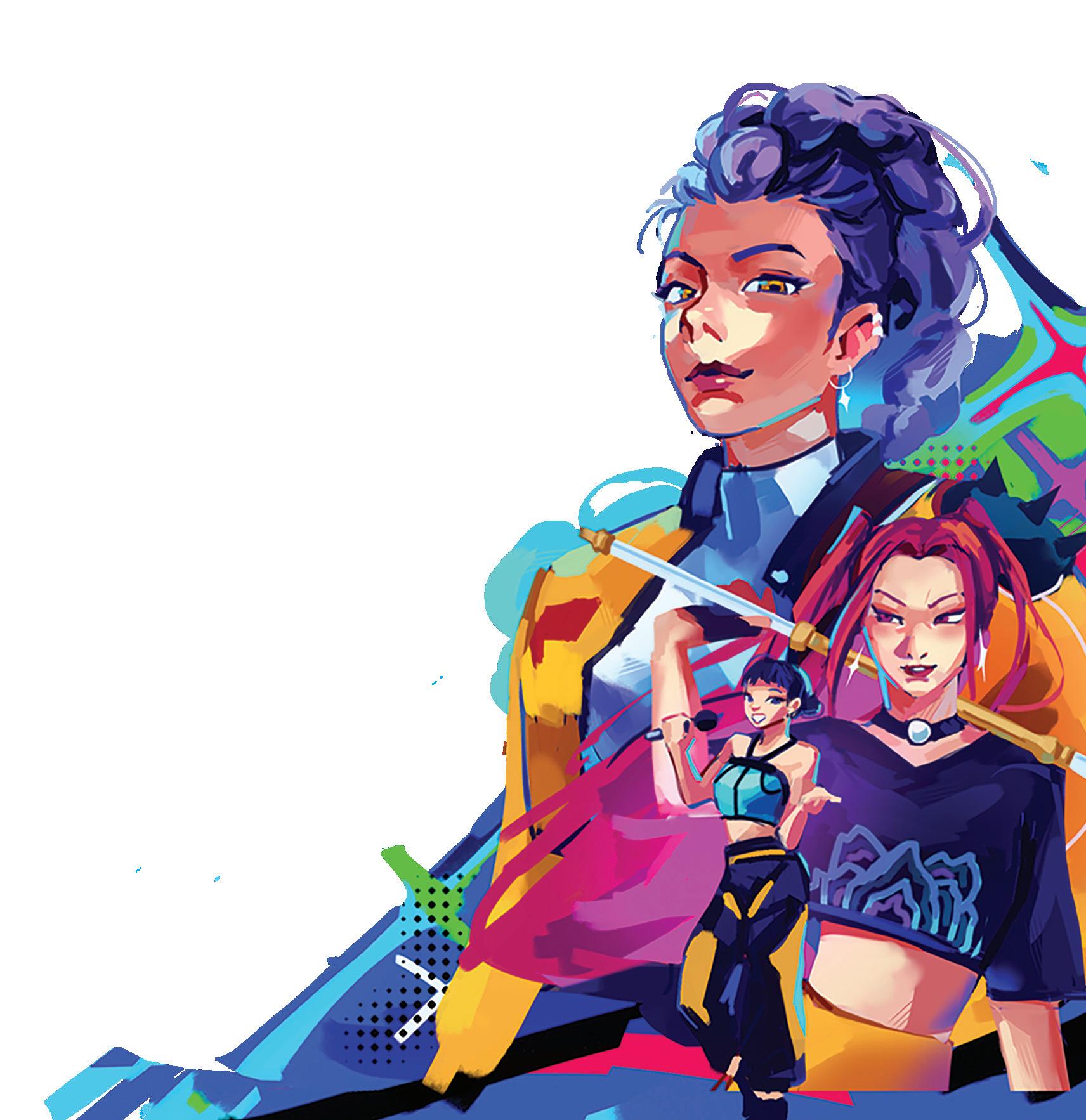
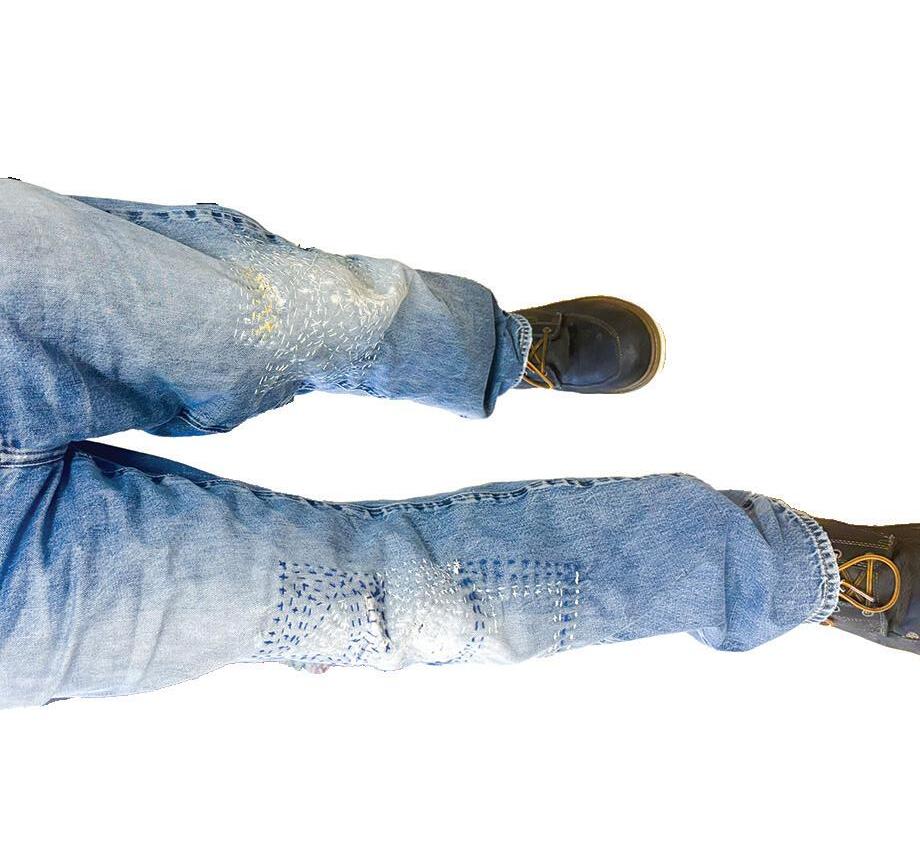




Although it’s not the iconic 1960’s, denim remains a staple in the wardrobes of the Paly community



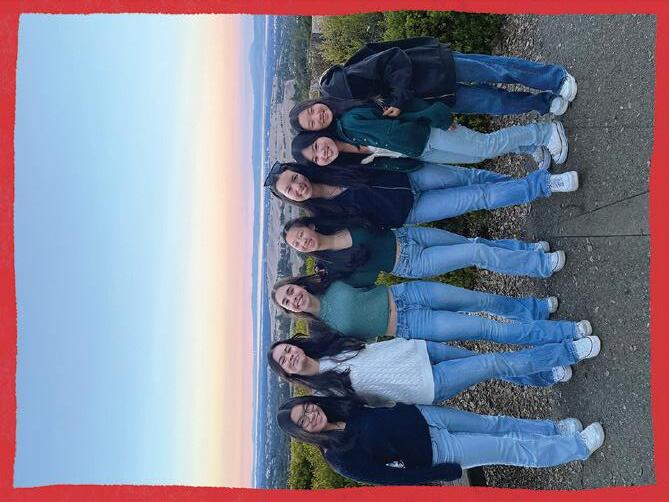

“I remember all the commercials around jeans were much more prevelant in the ‘80s and ‘90s for brands like Jordache, Levis and Wrangler.” Benjamin Bolanos, Paly
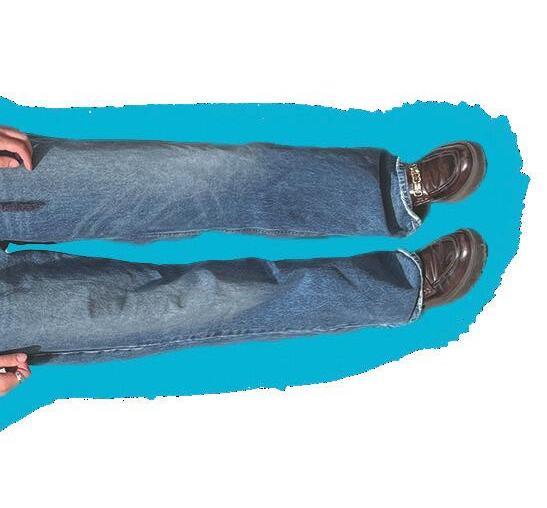


Paly students show off their denim!
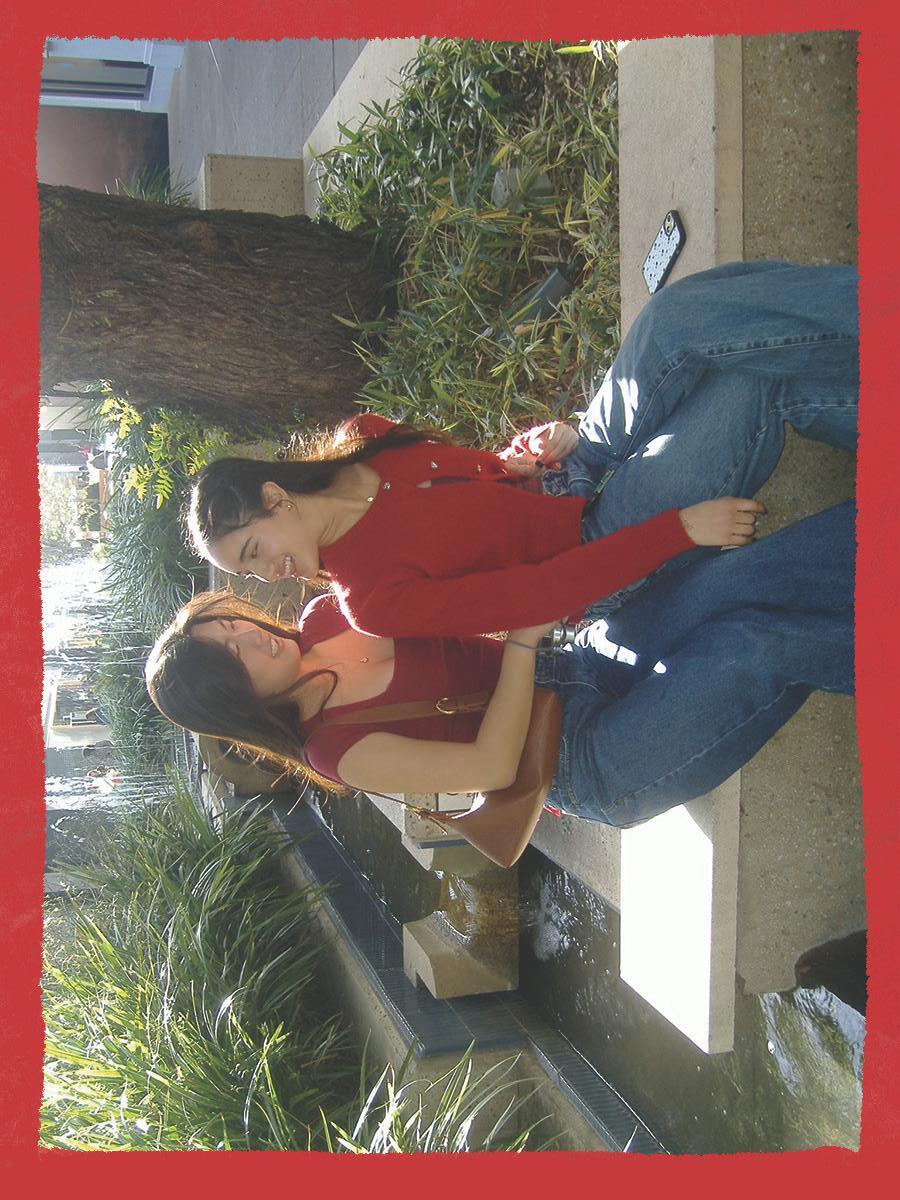
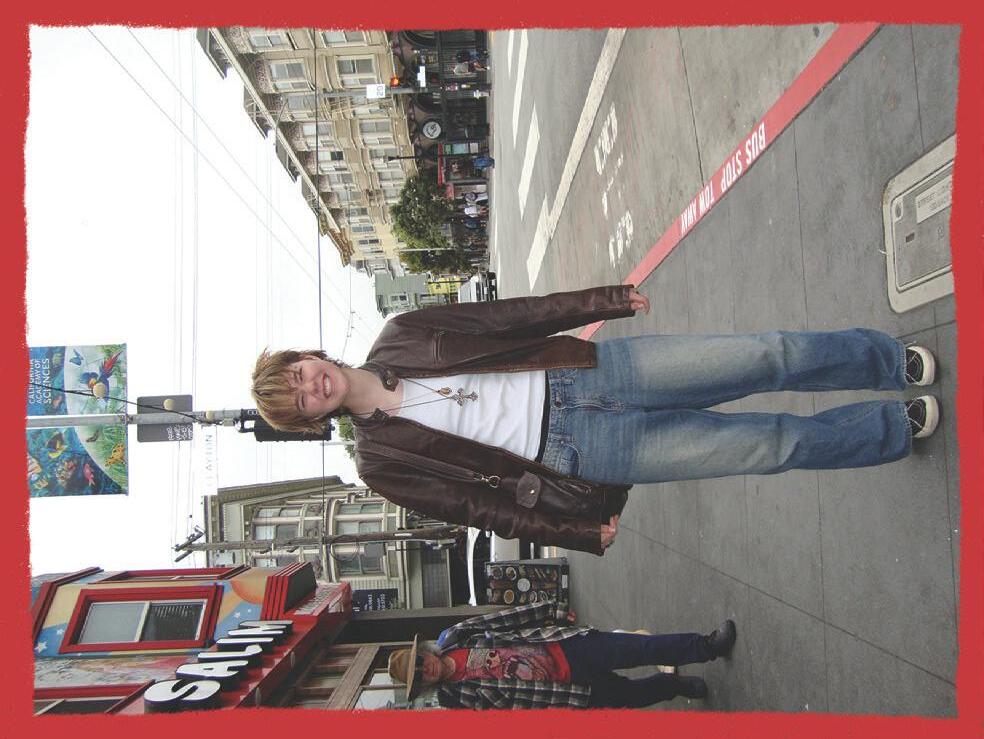

“Denim was used more in blue collar jobs, and now it’s been transformed into more casual wear.” Tyler McIntyre, 11 (with Ali Straw, 11)


